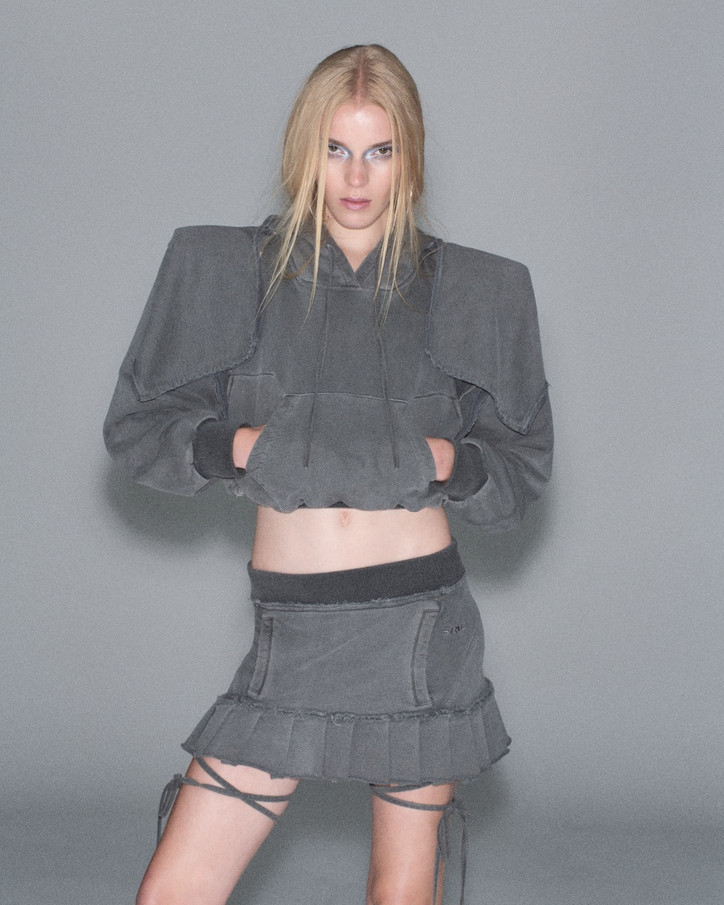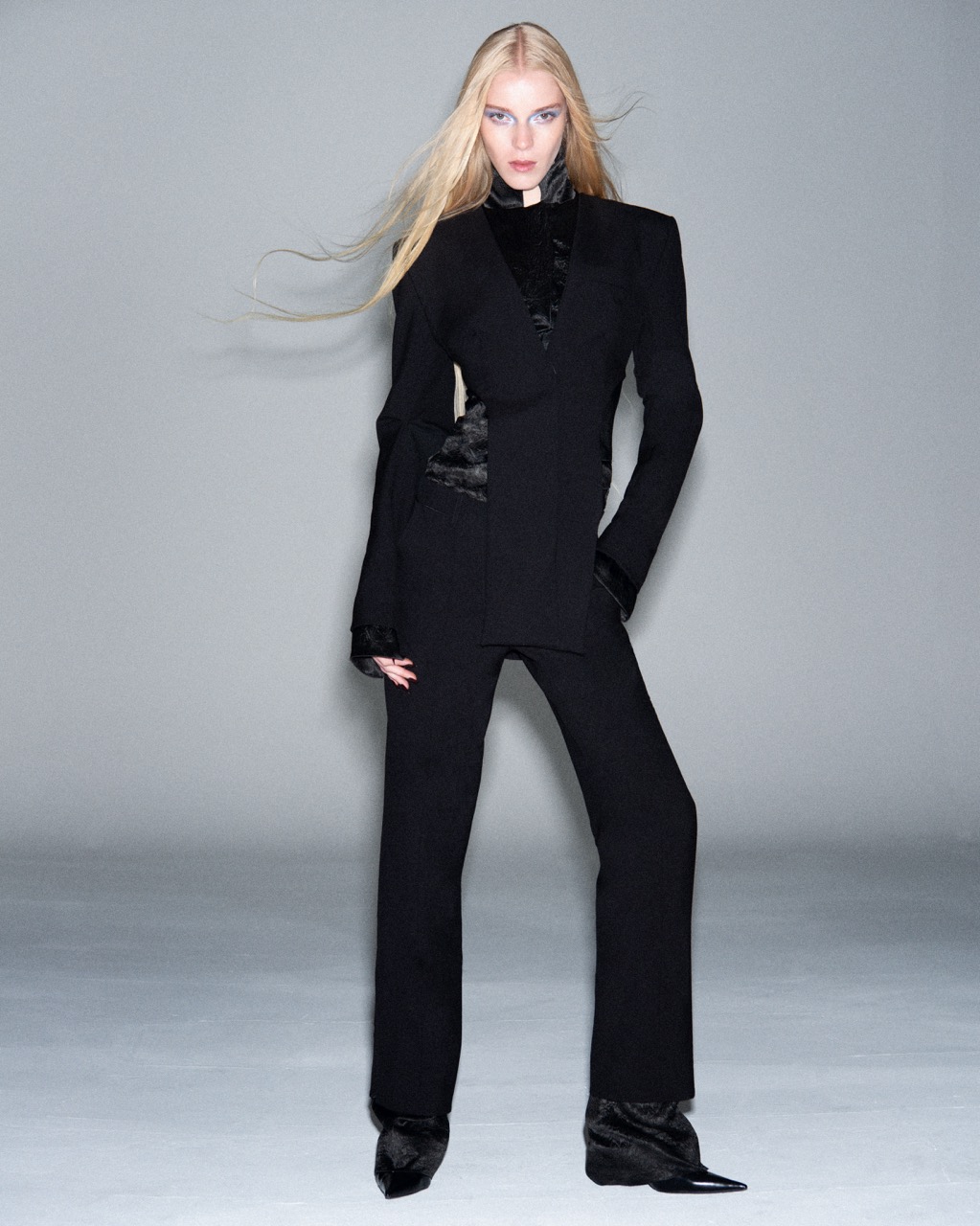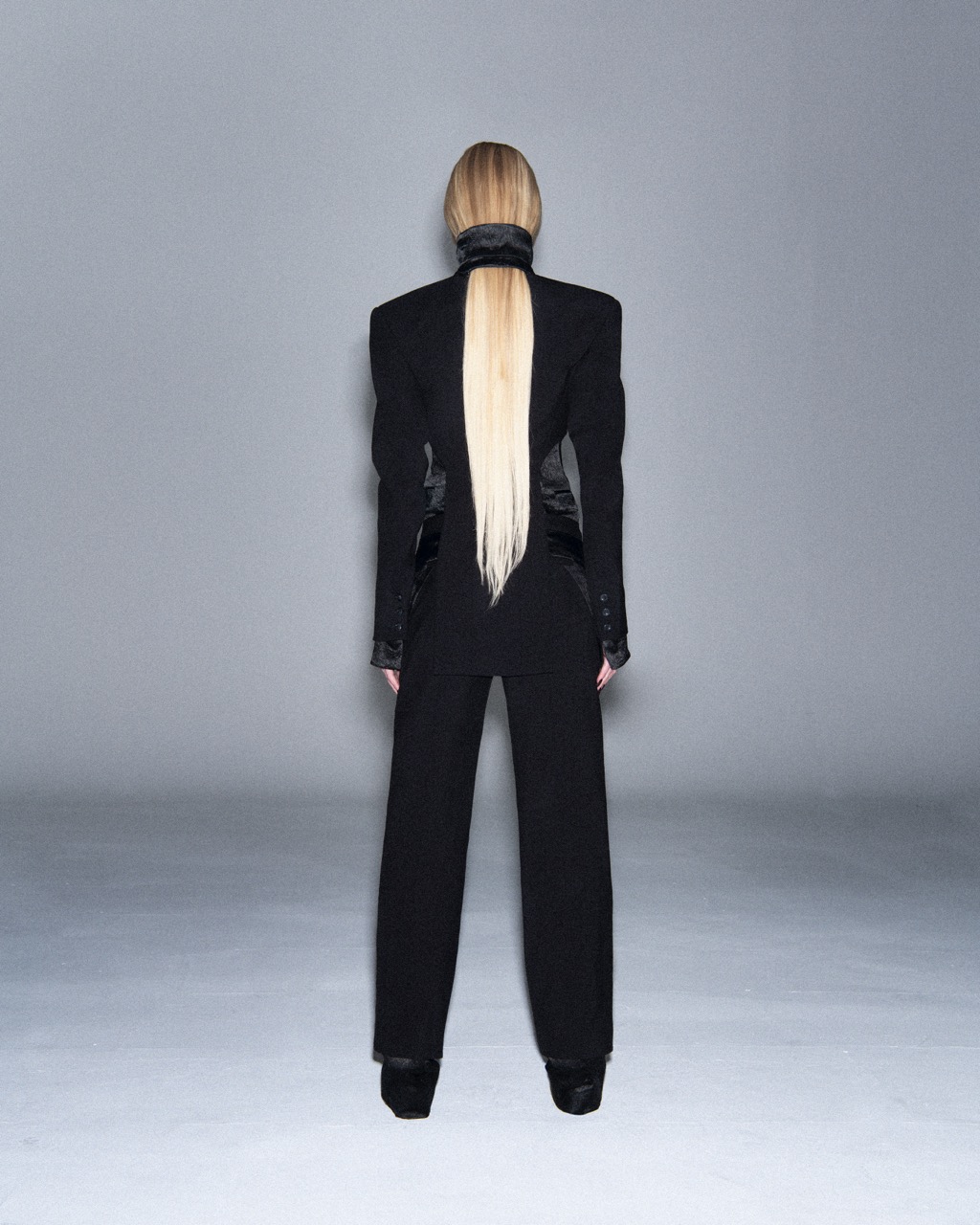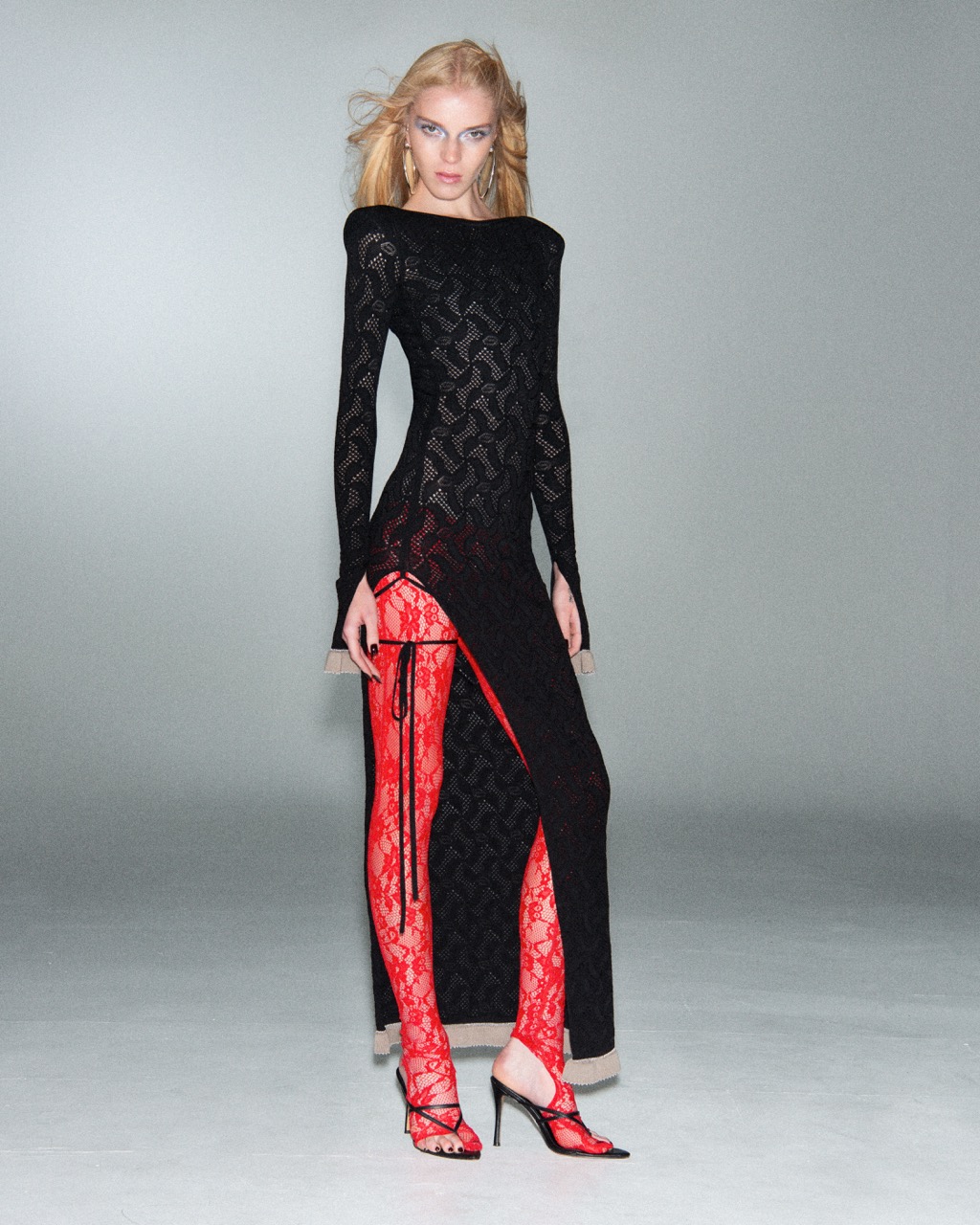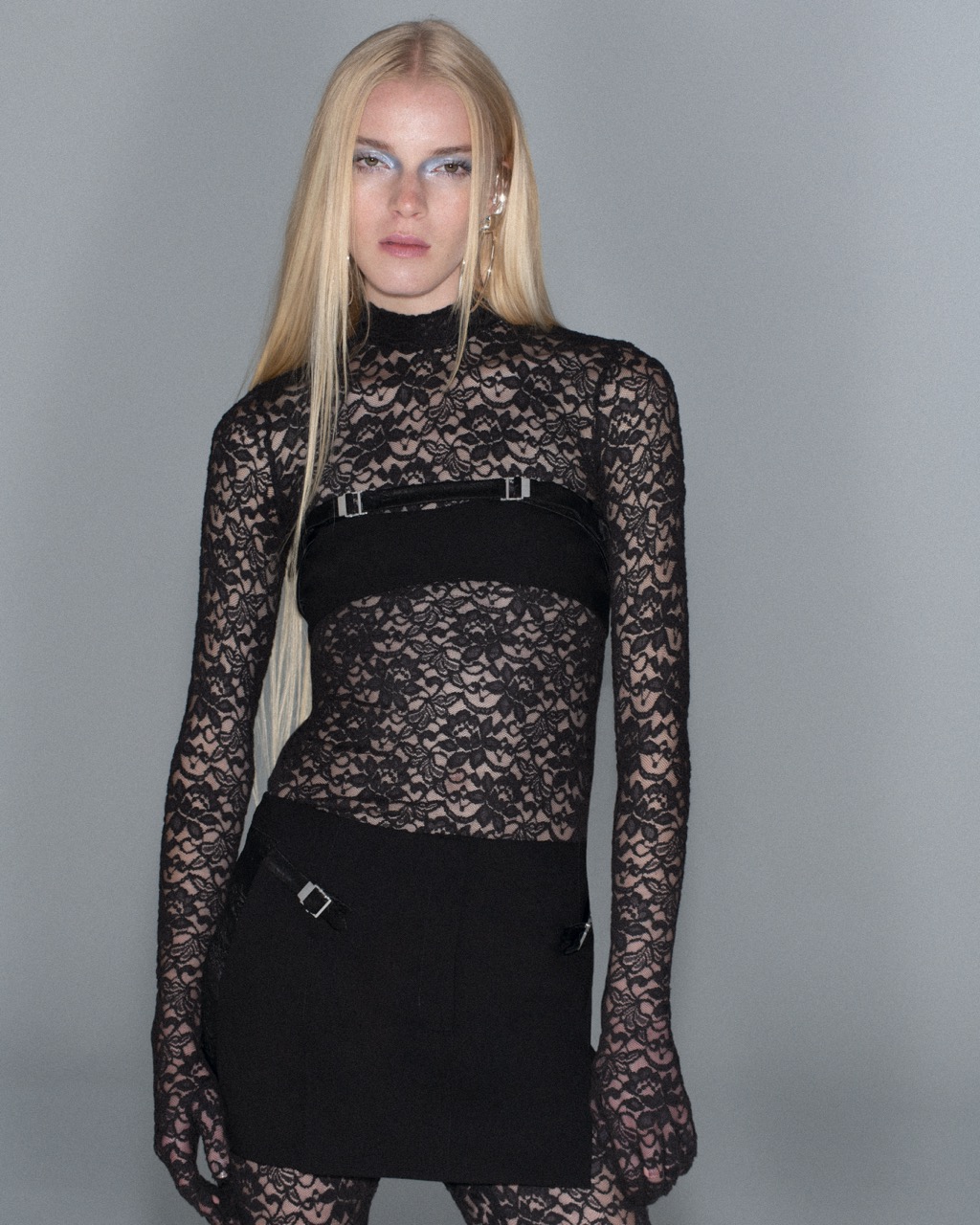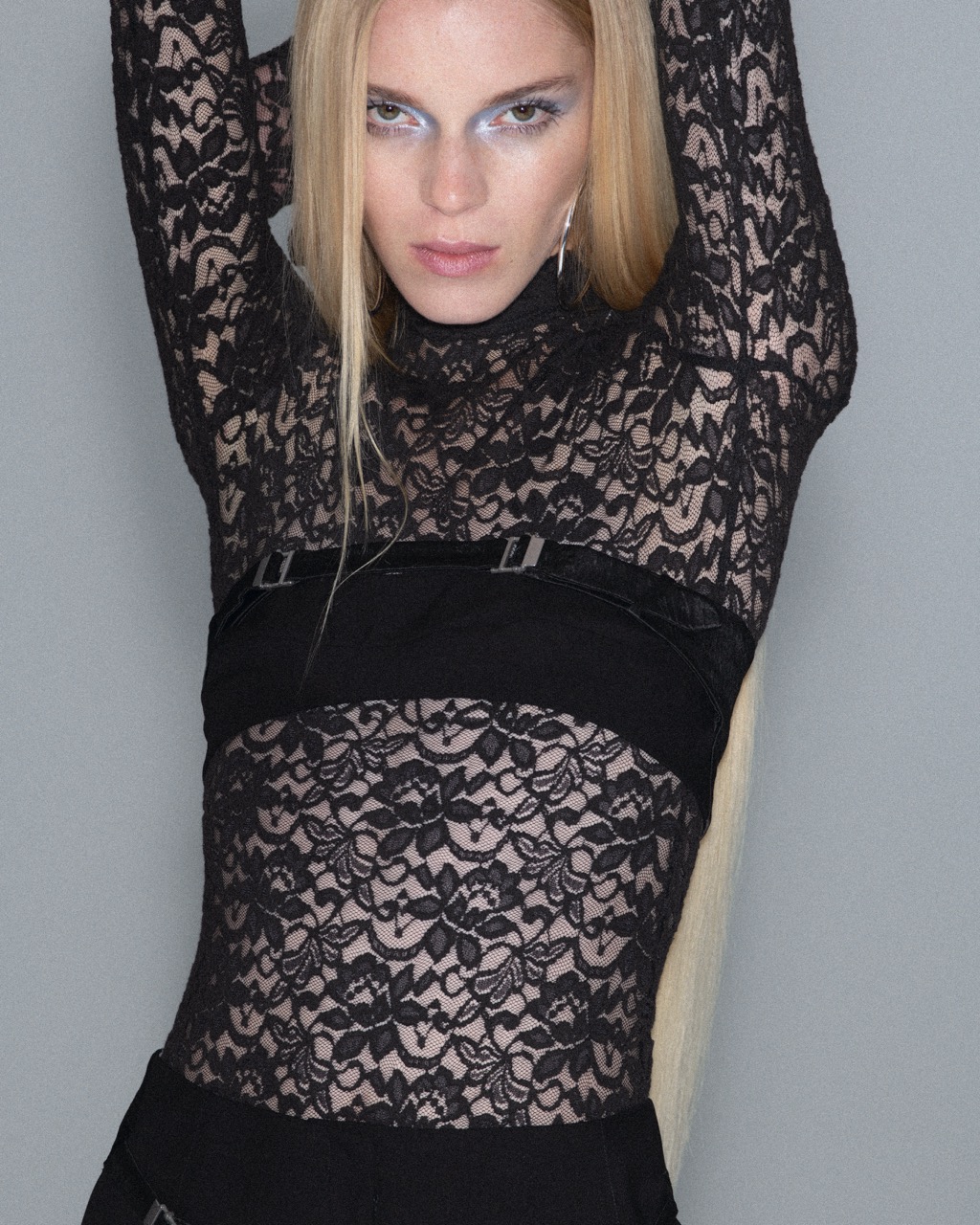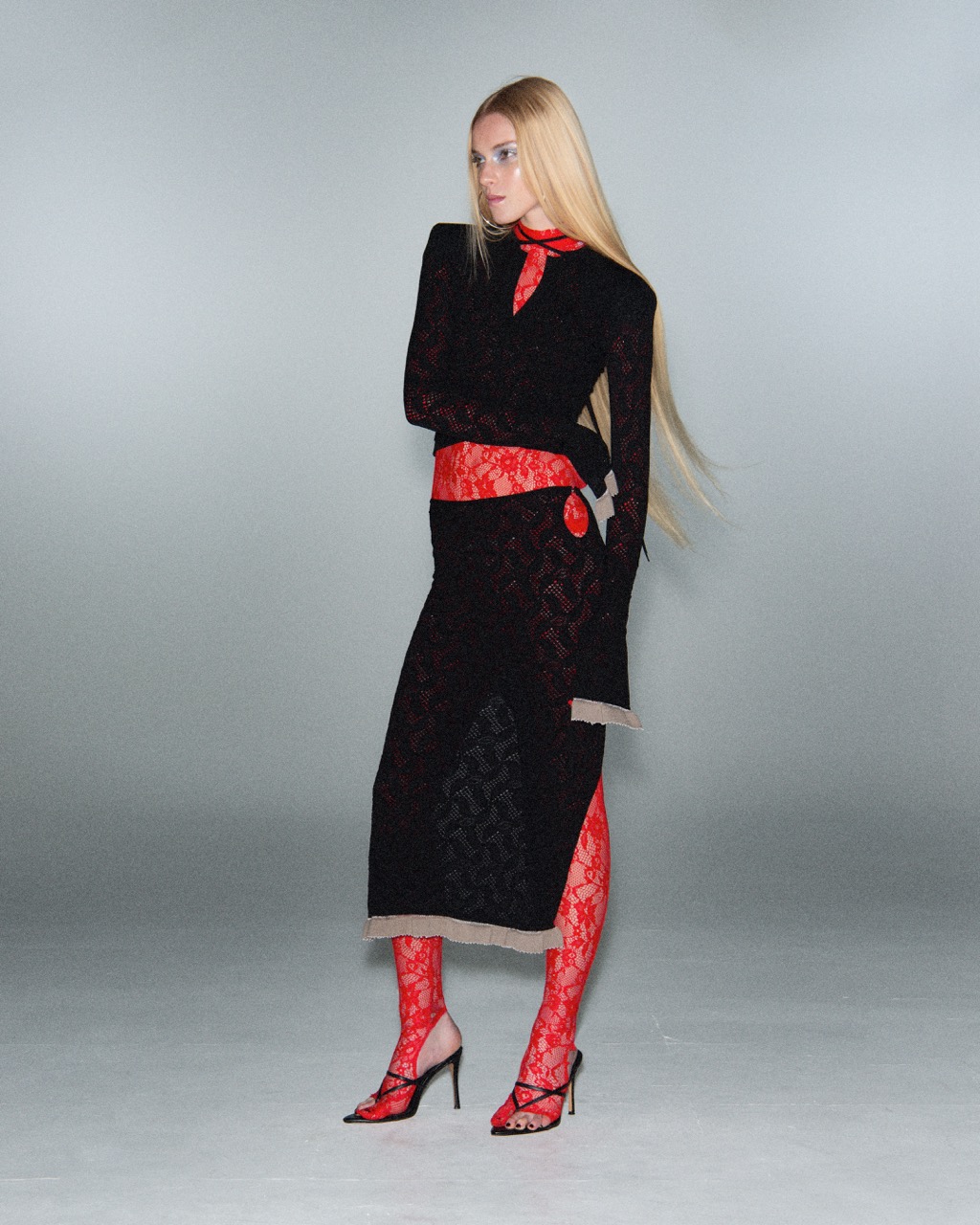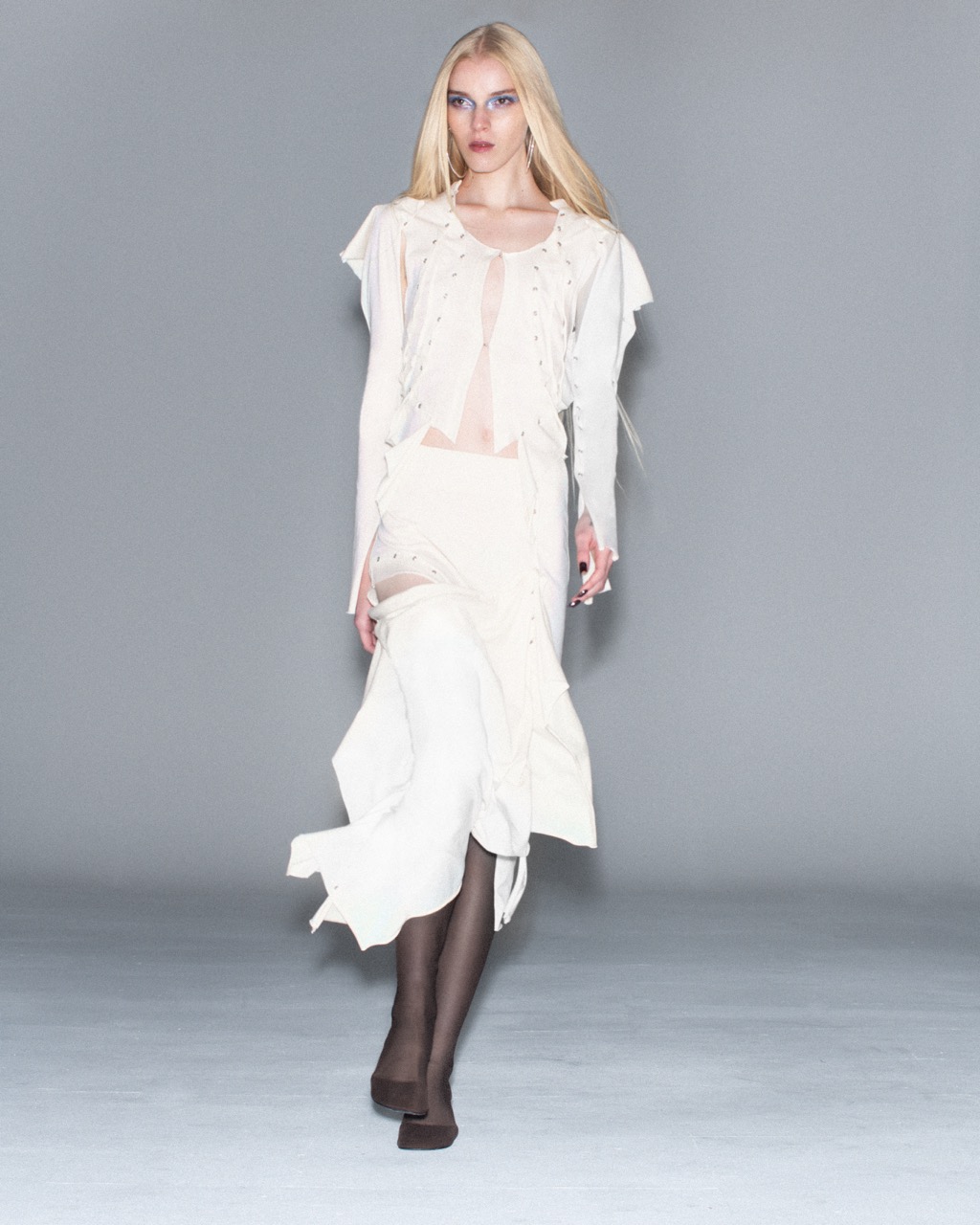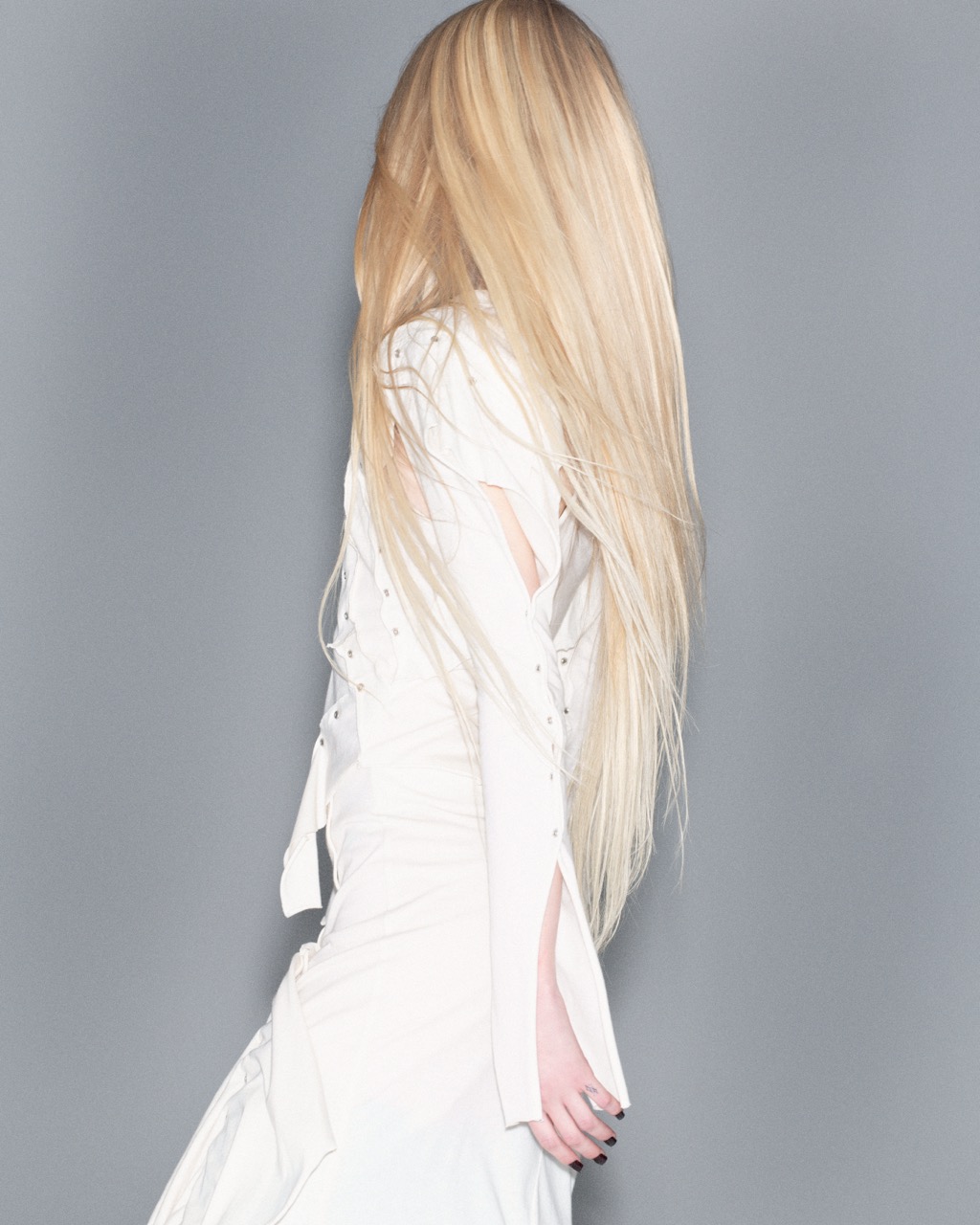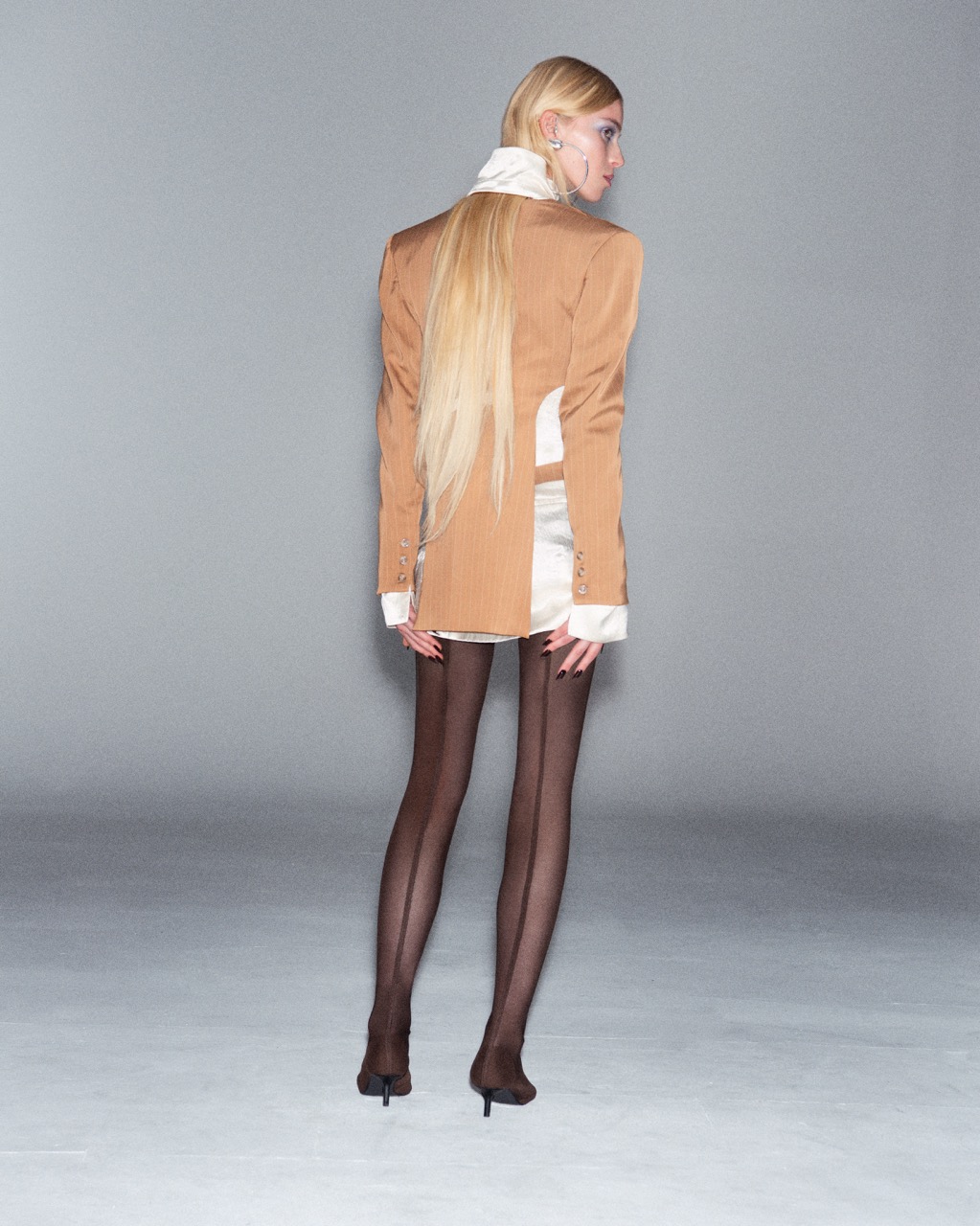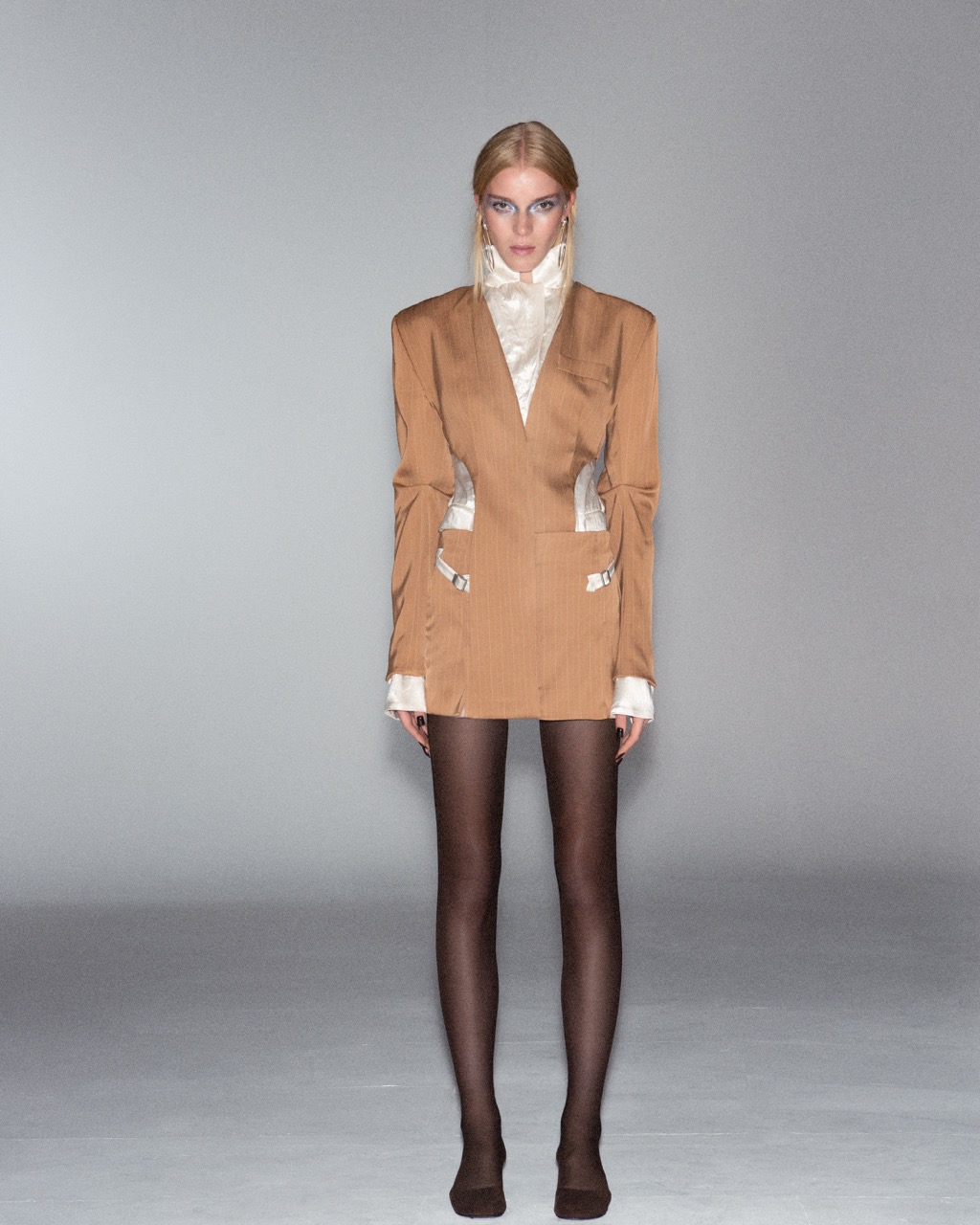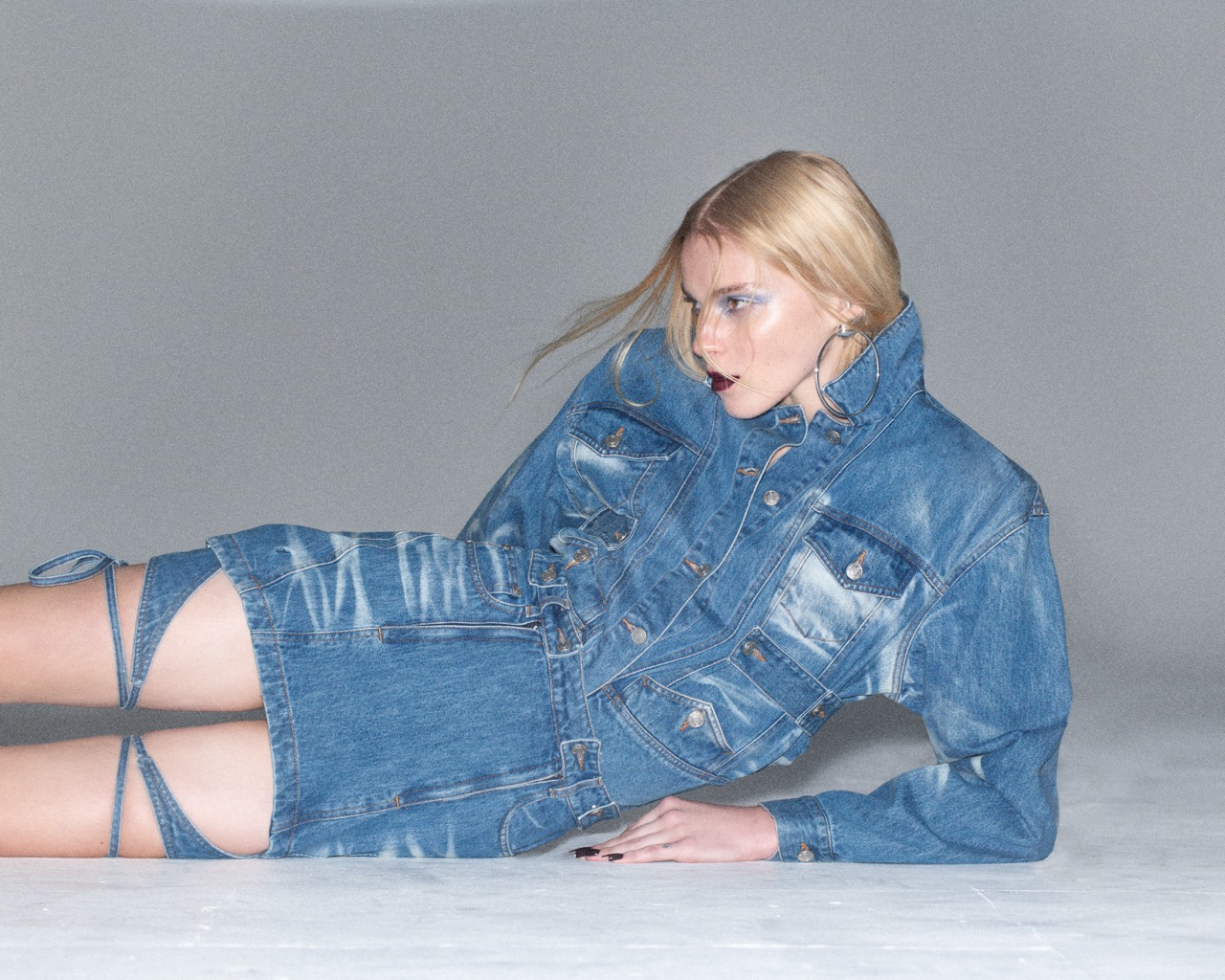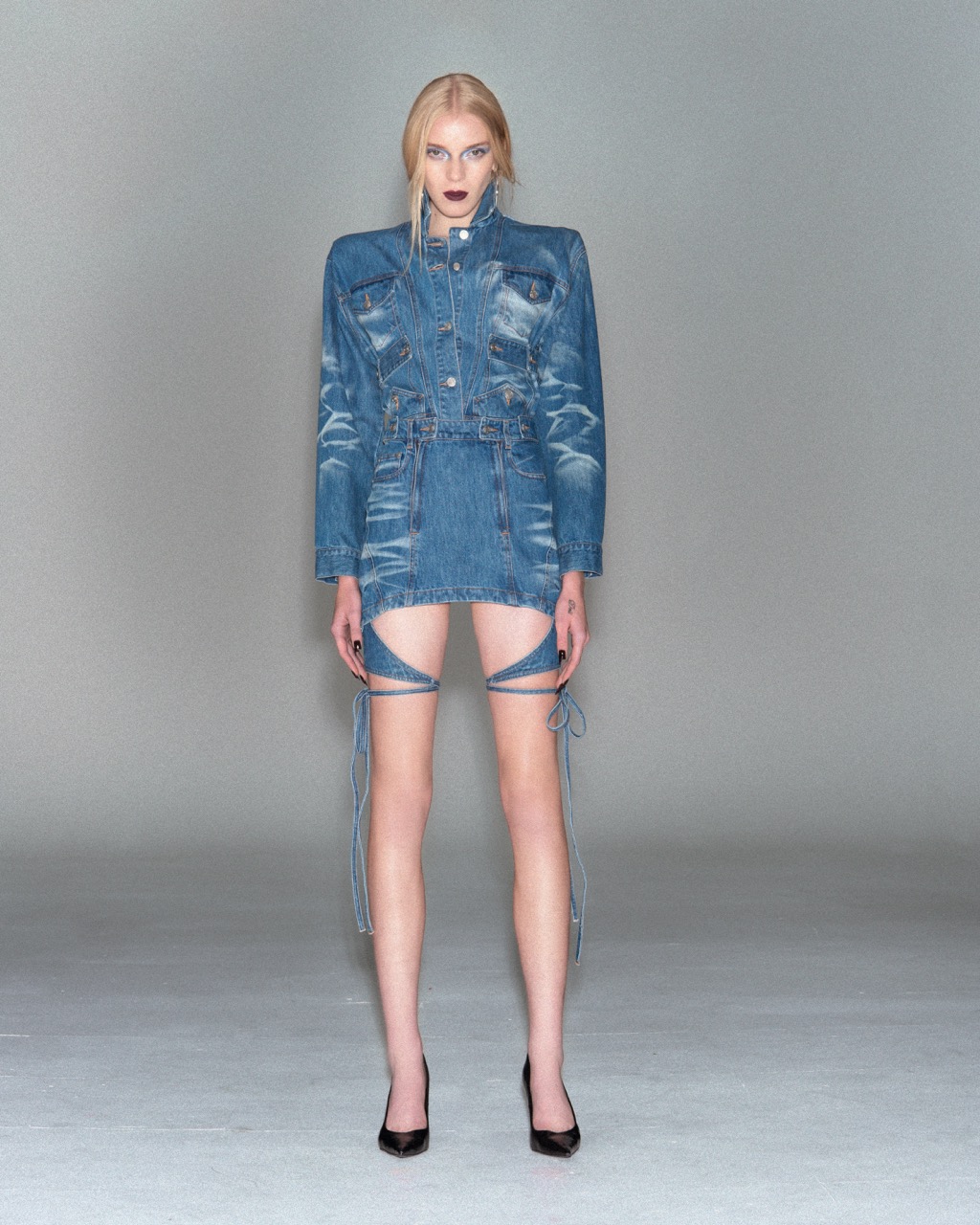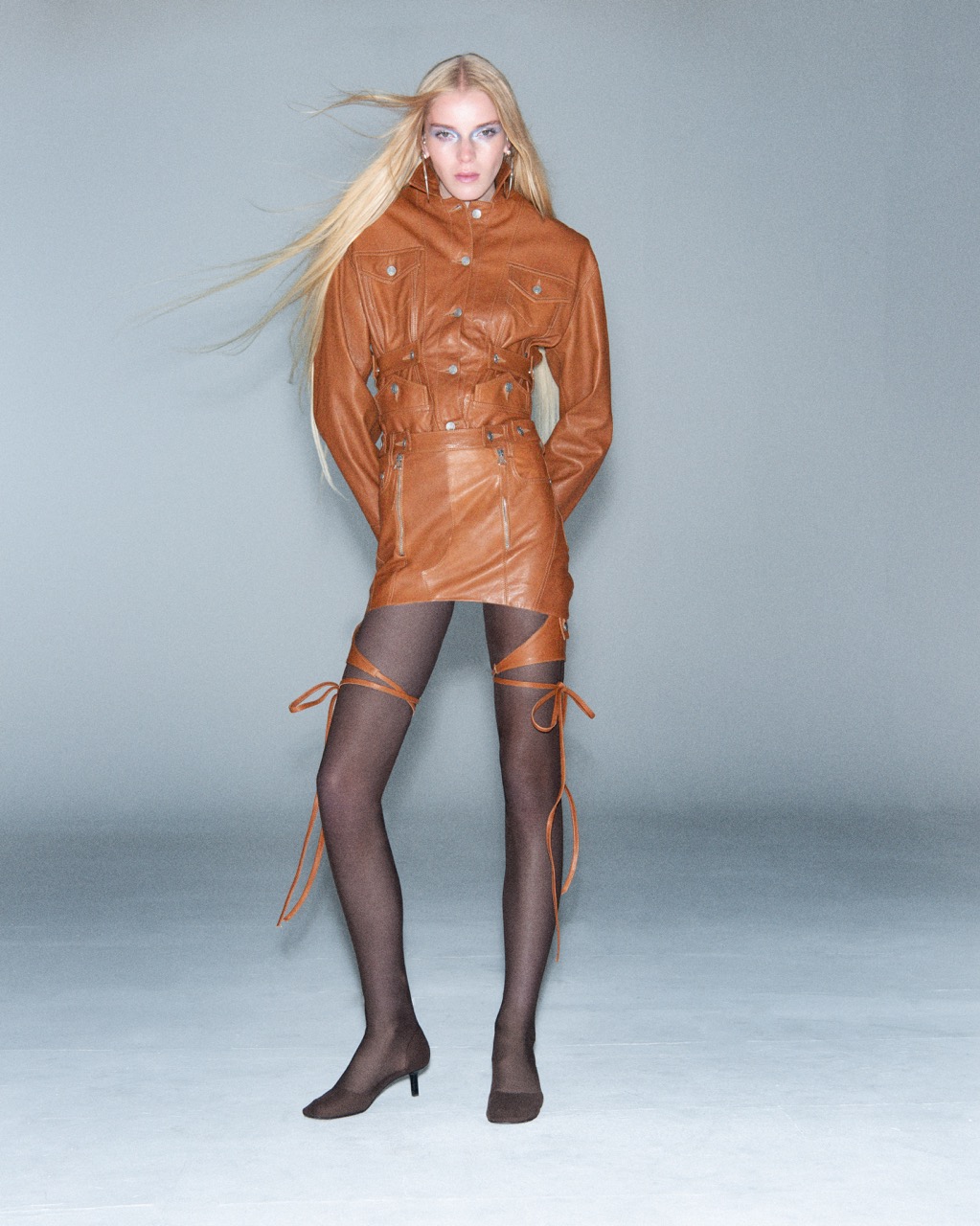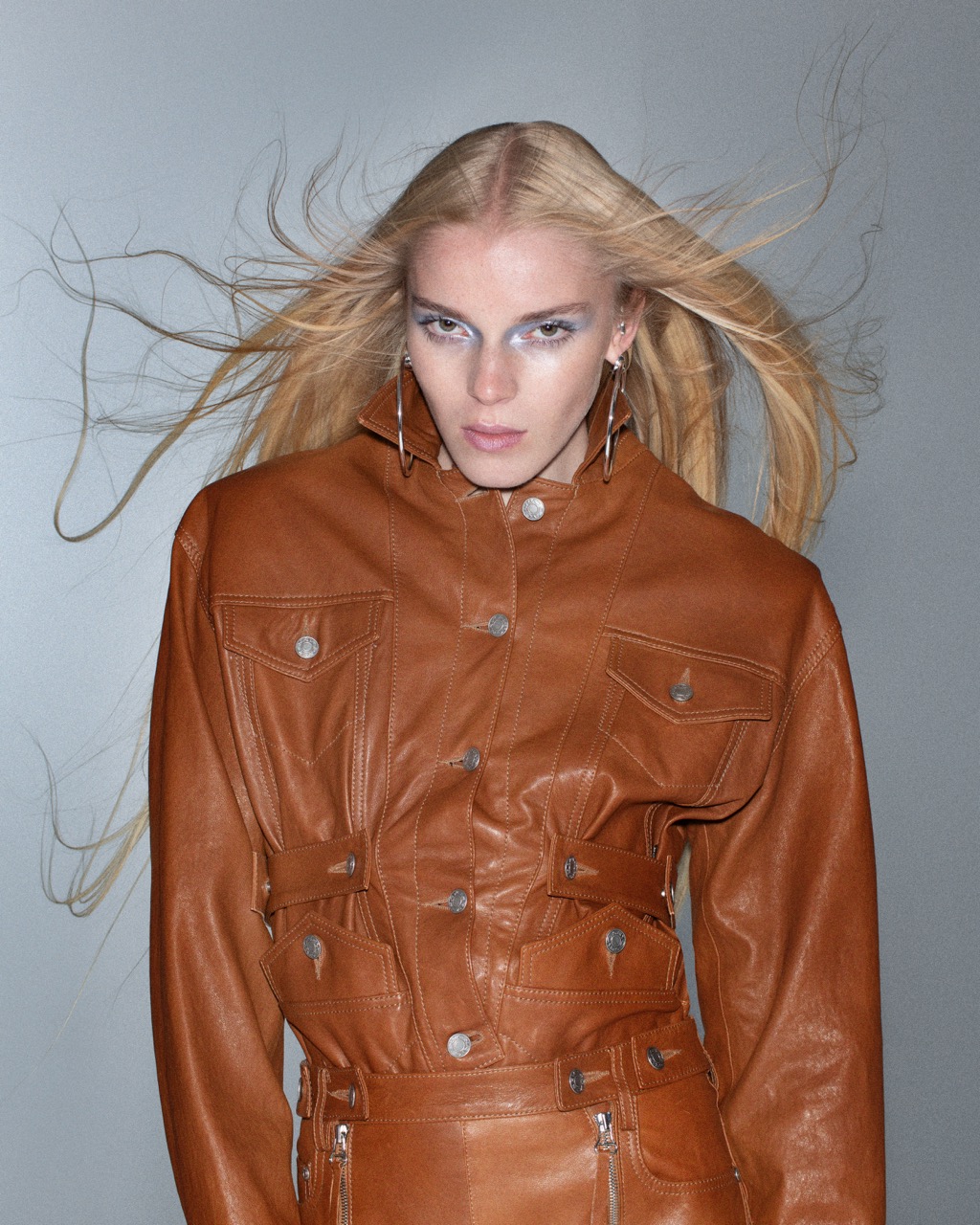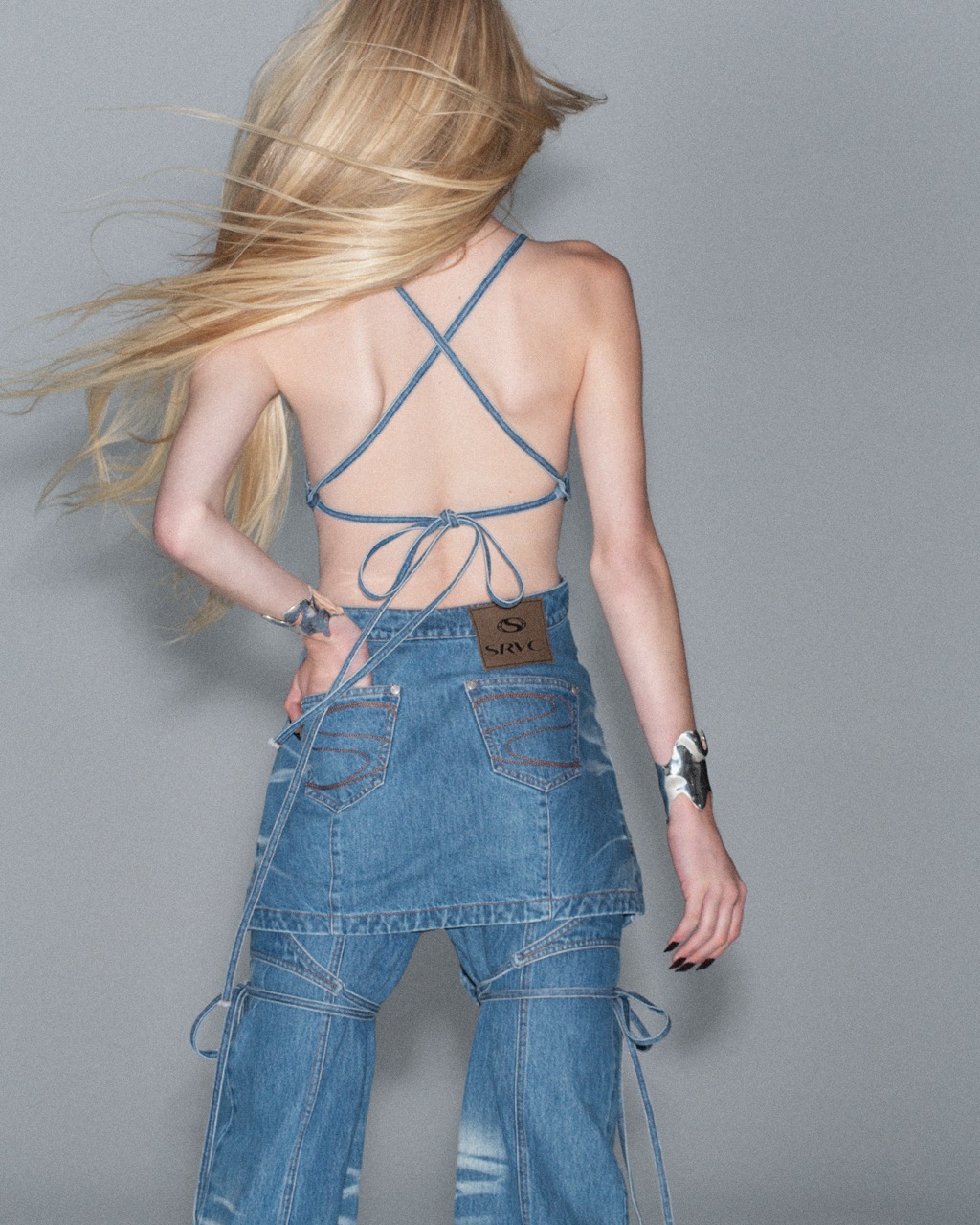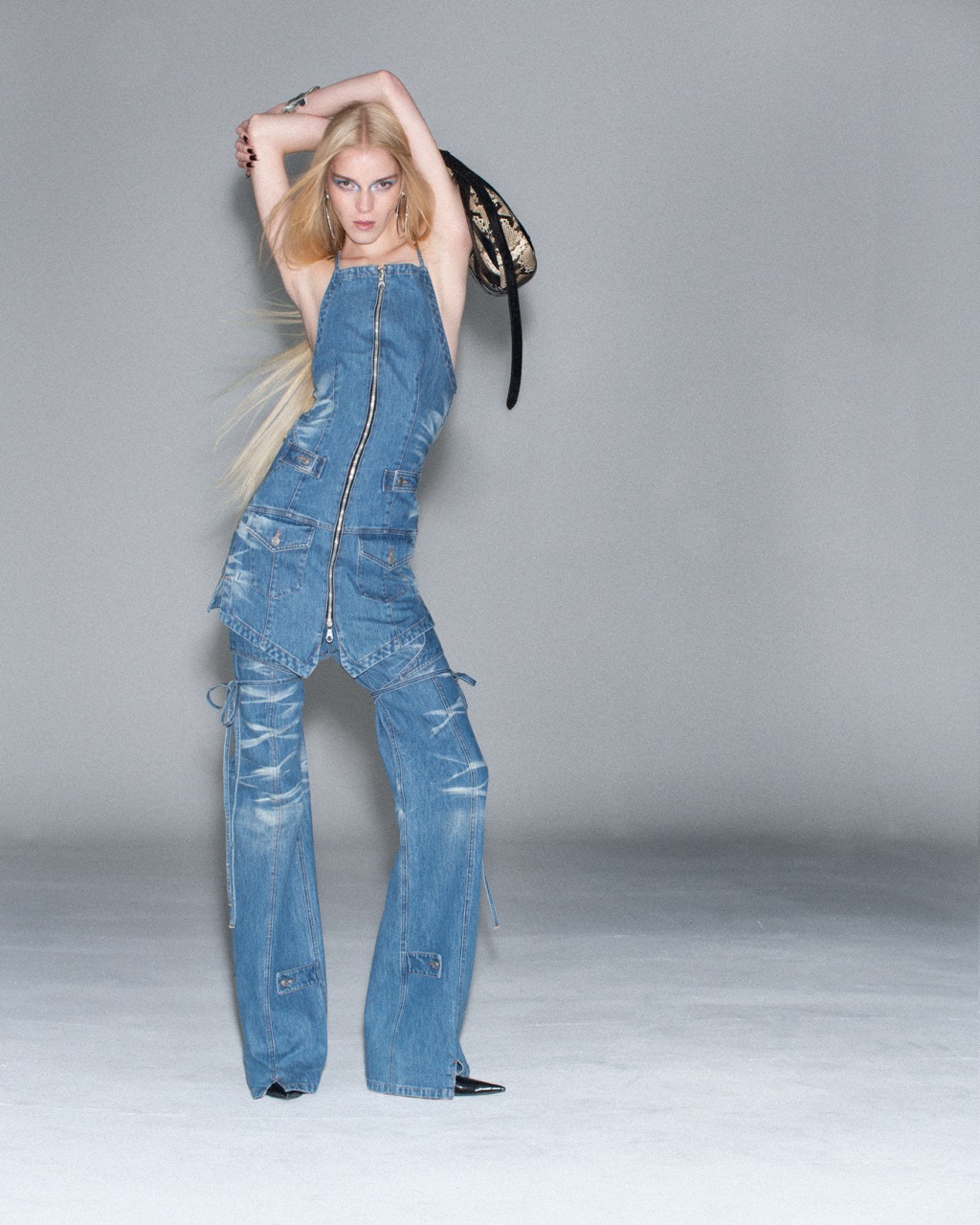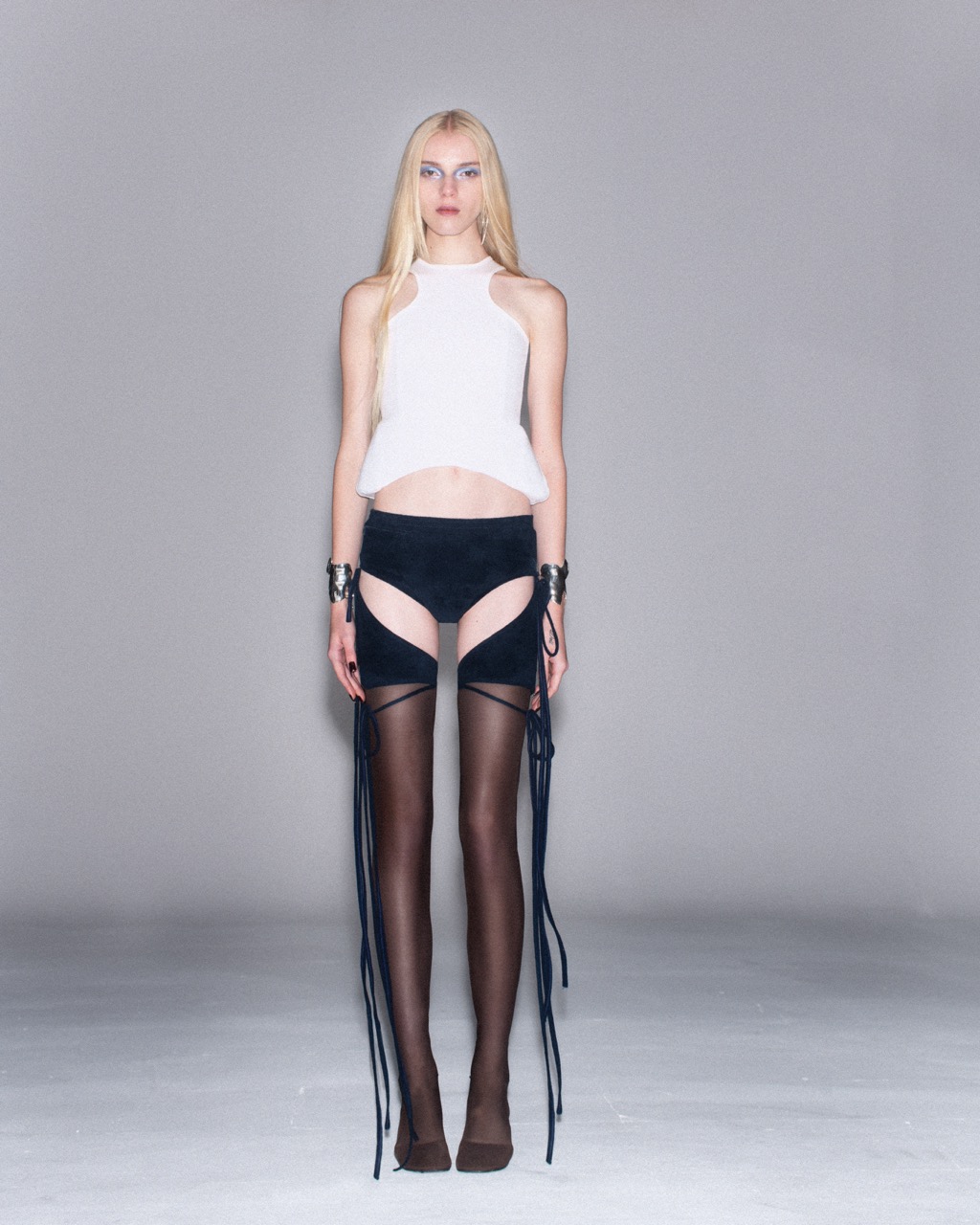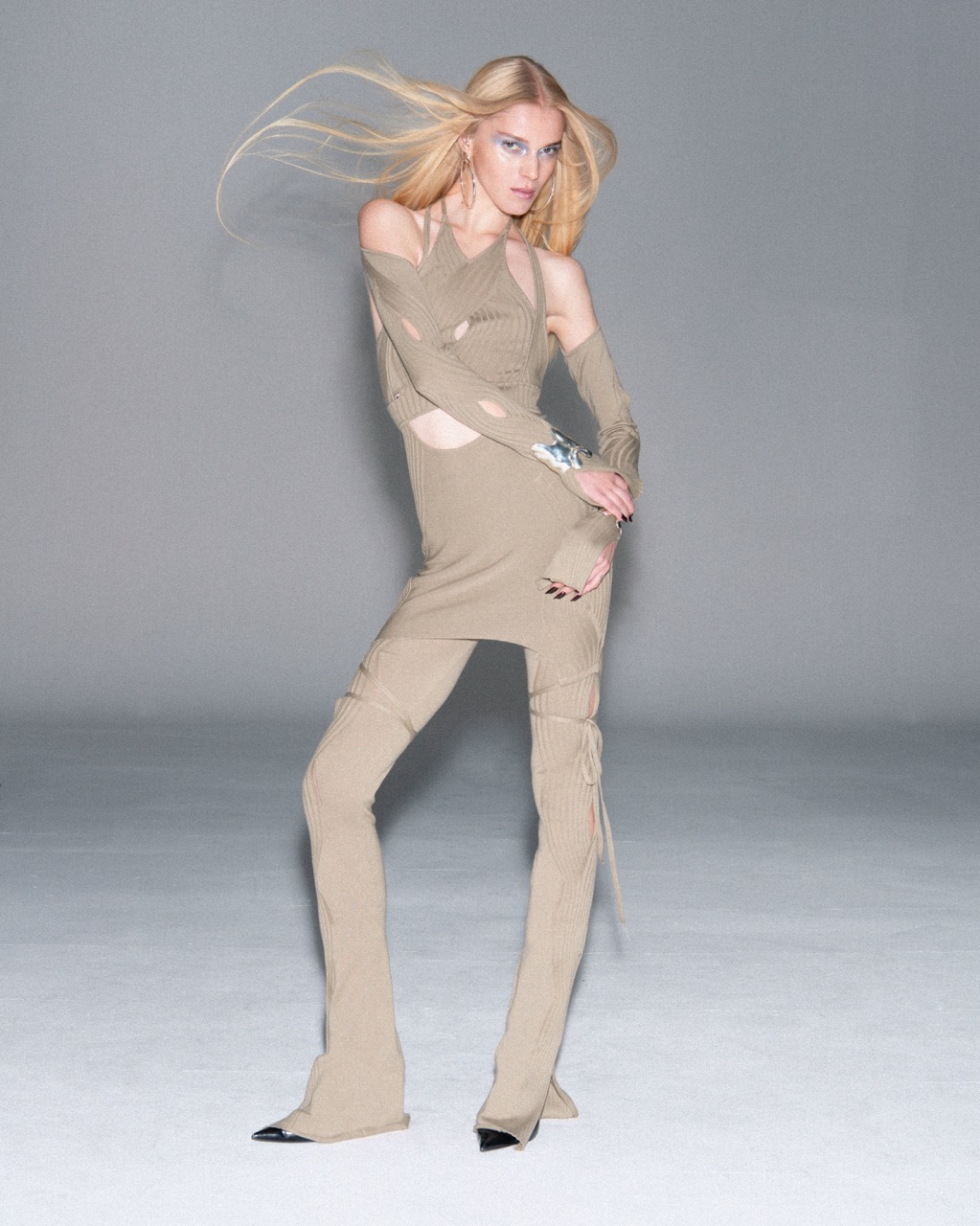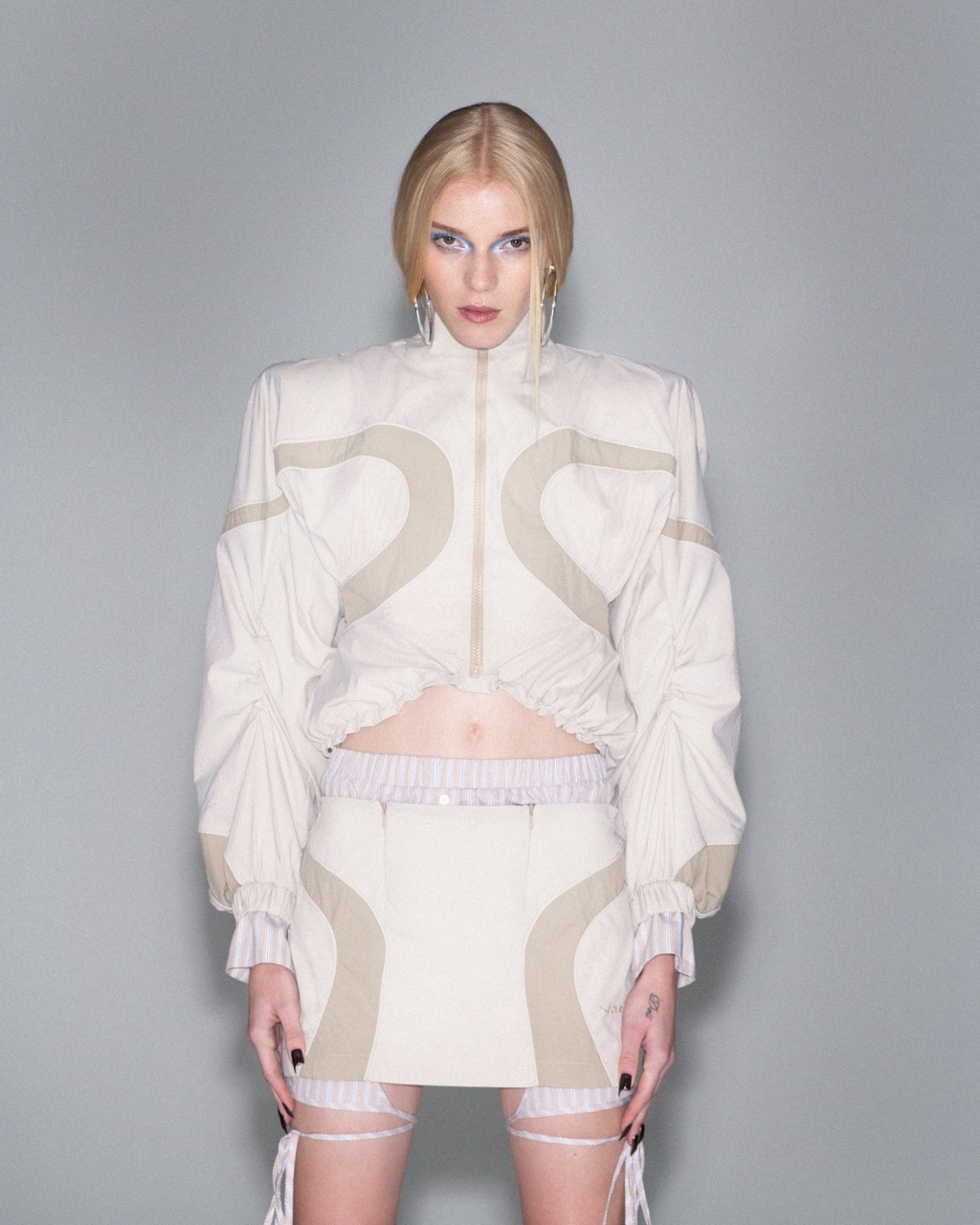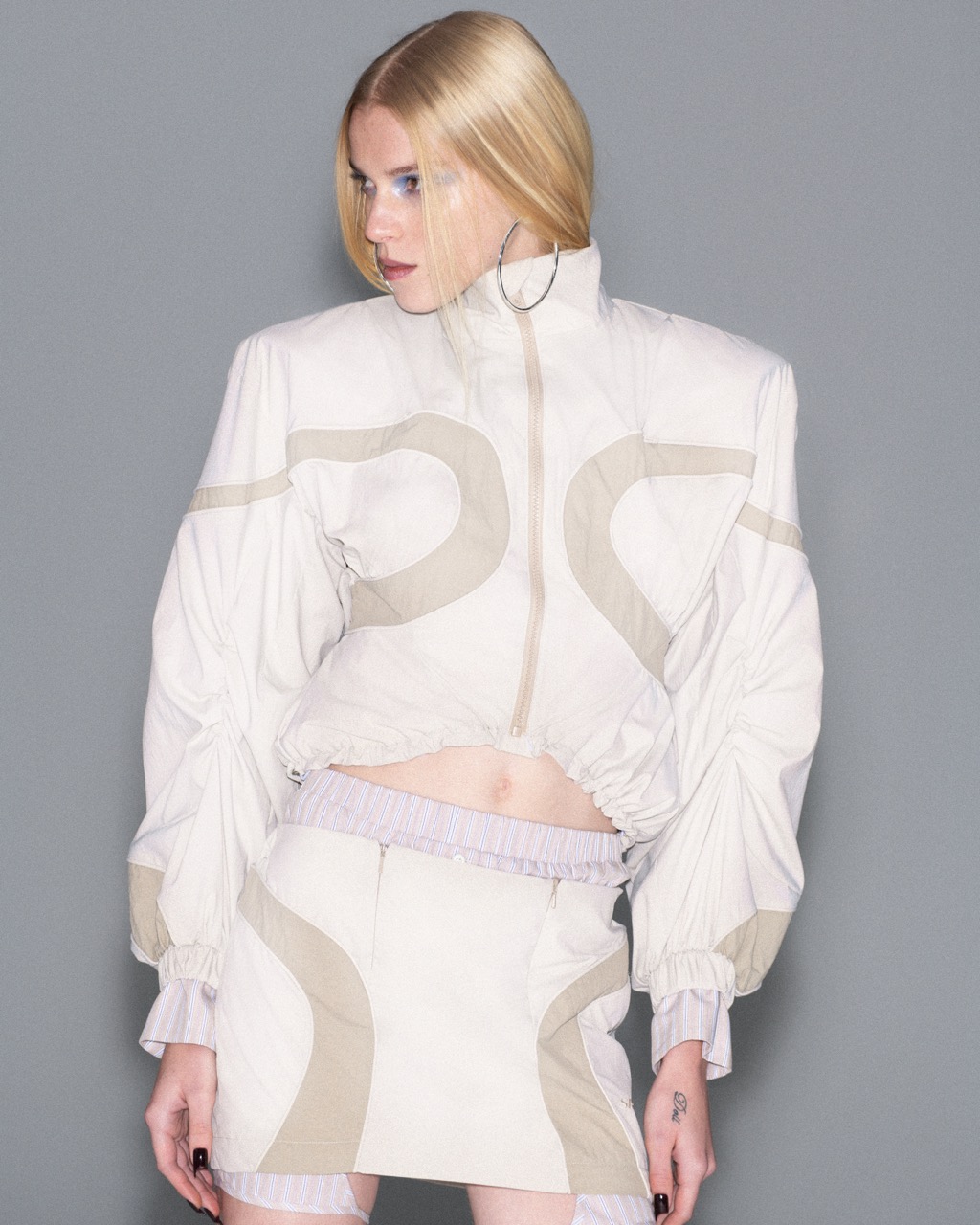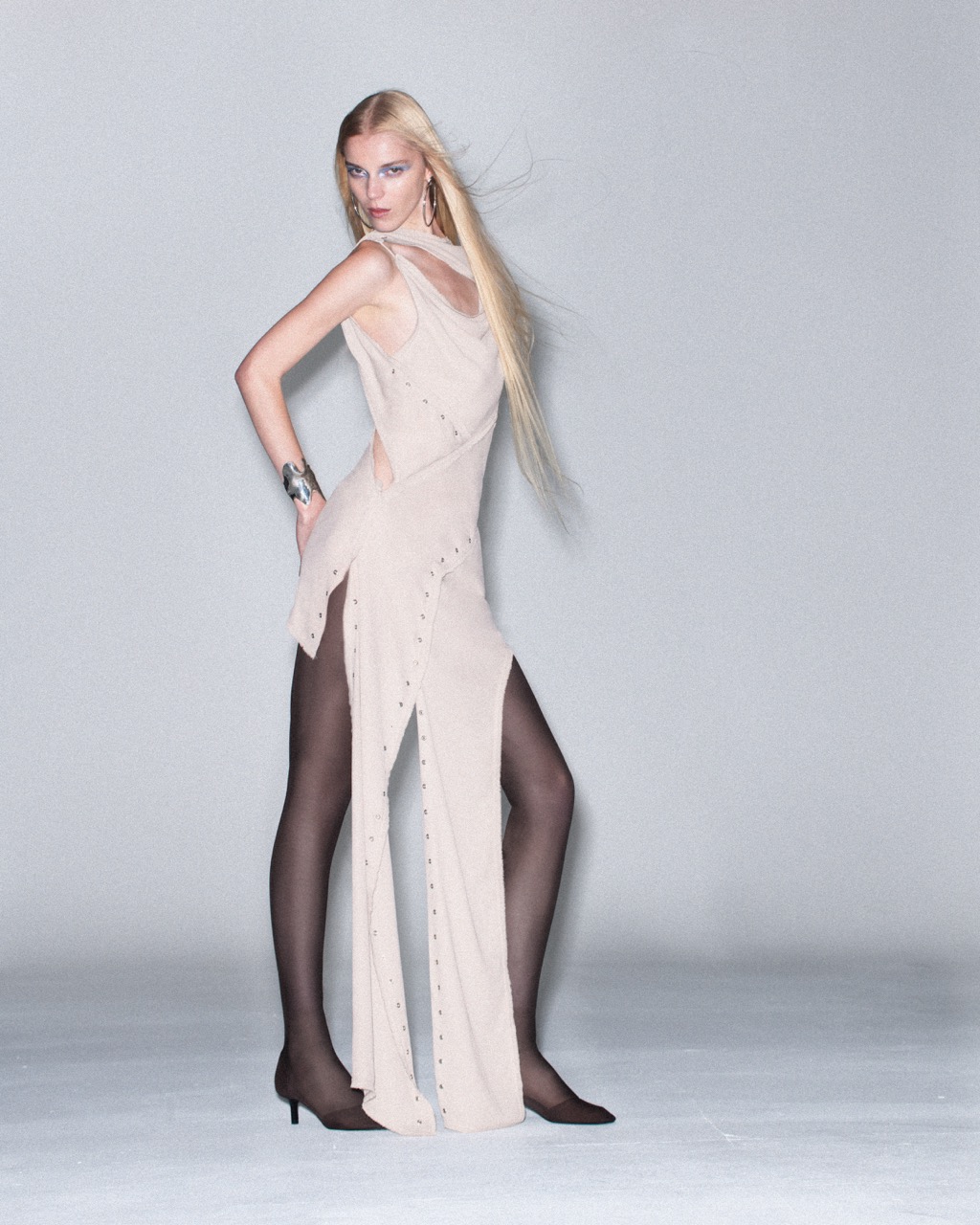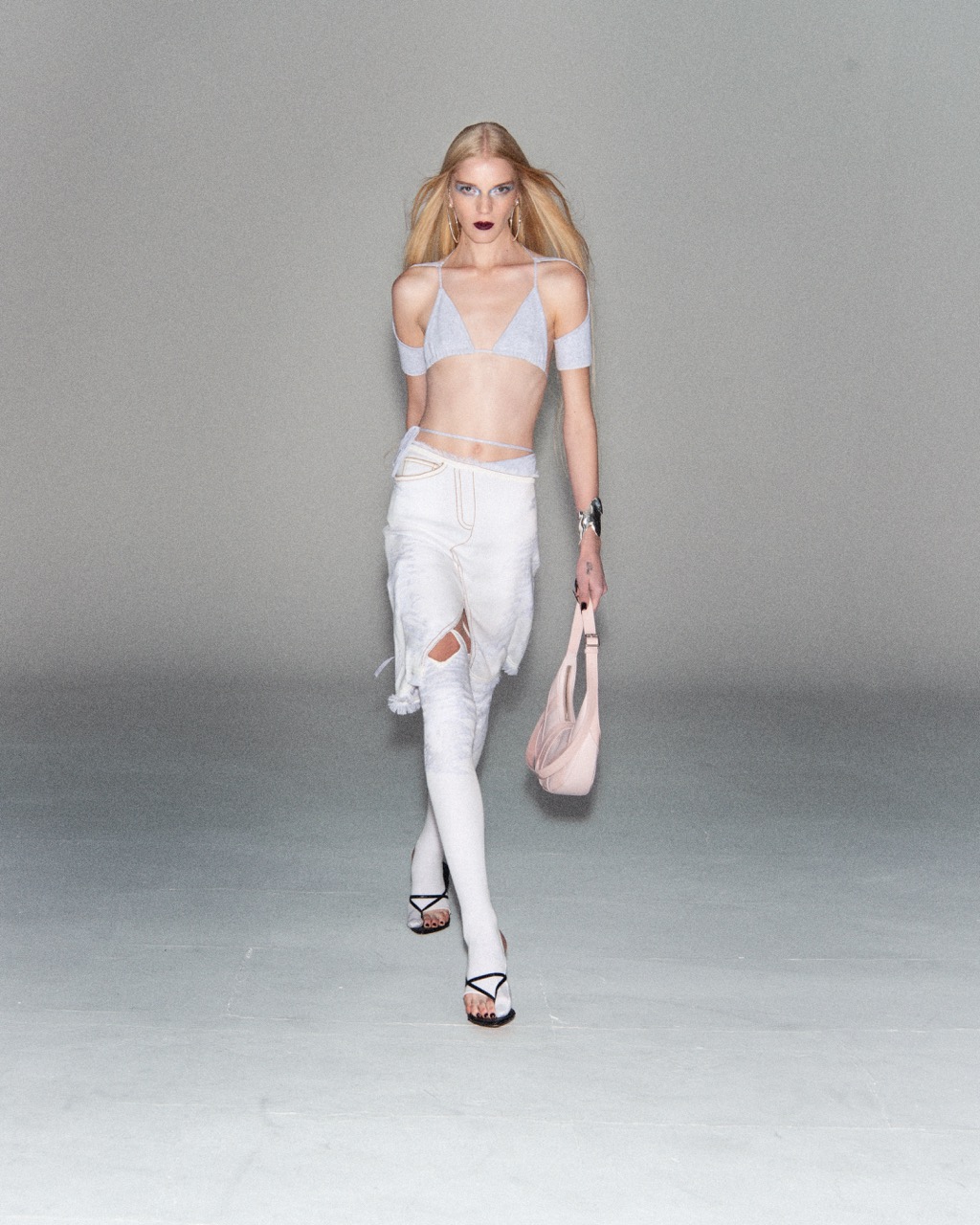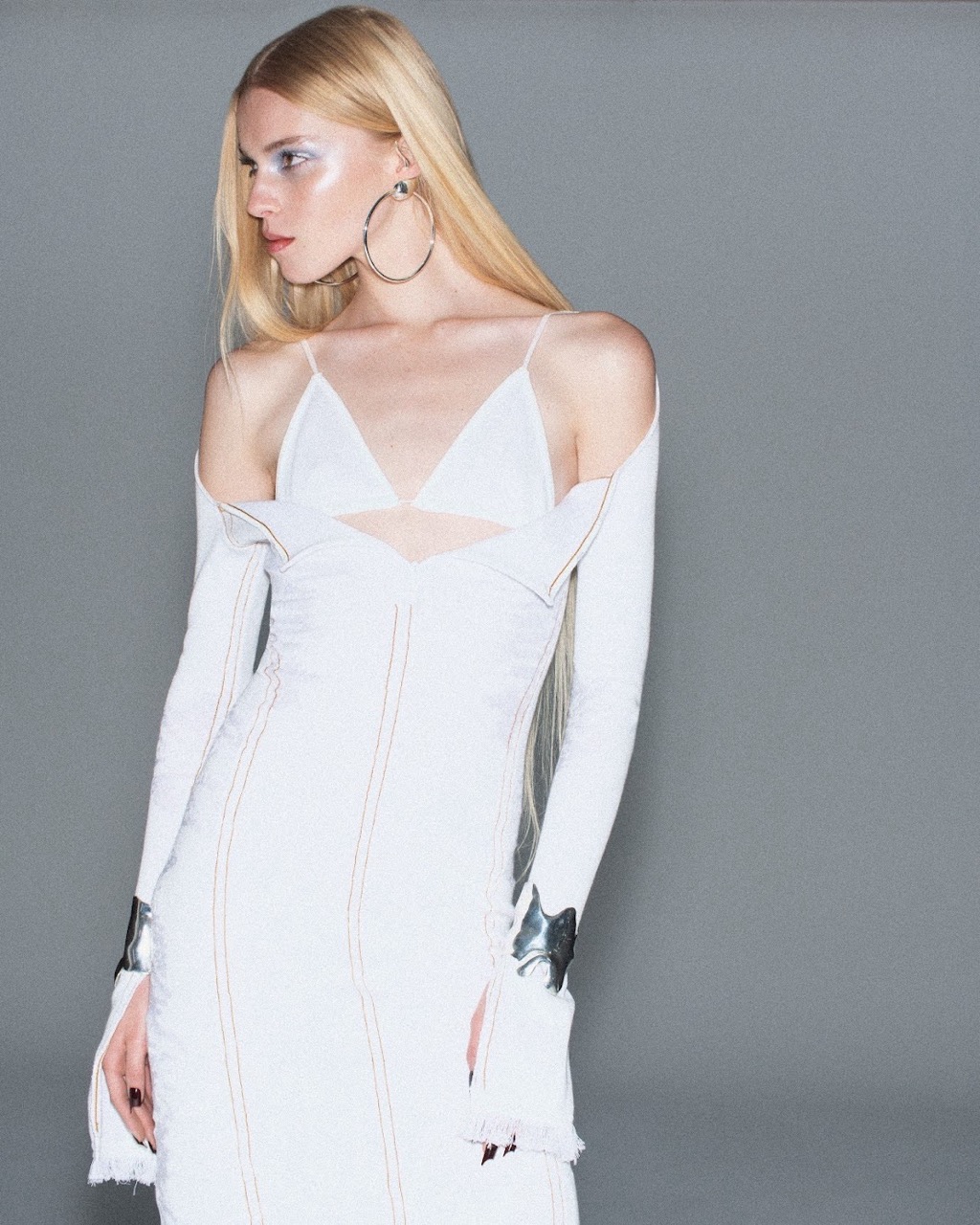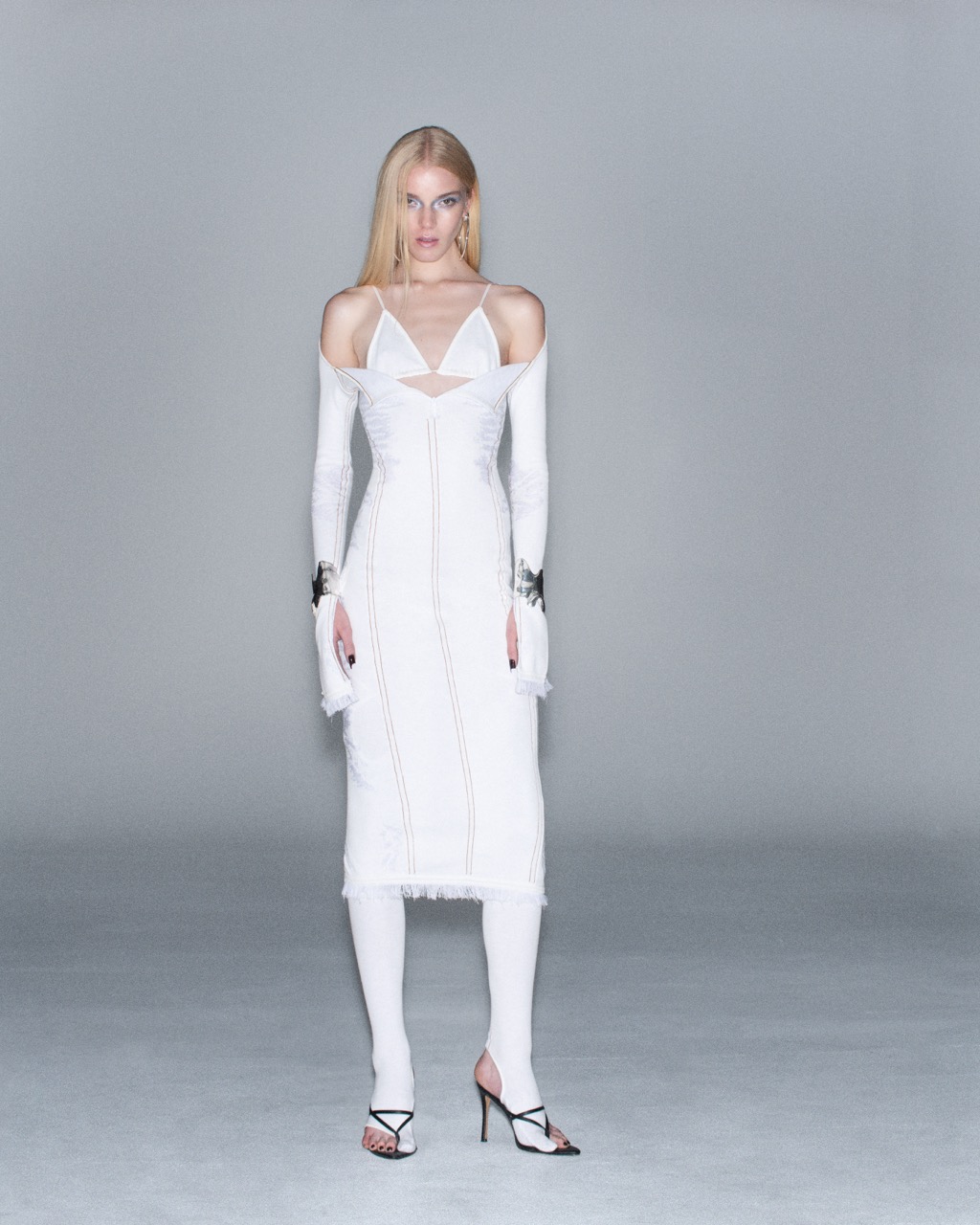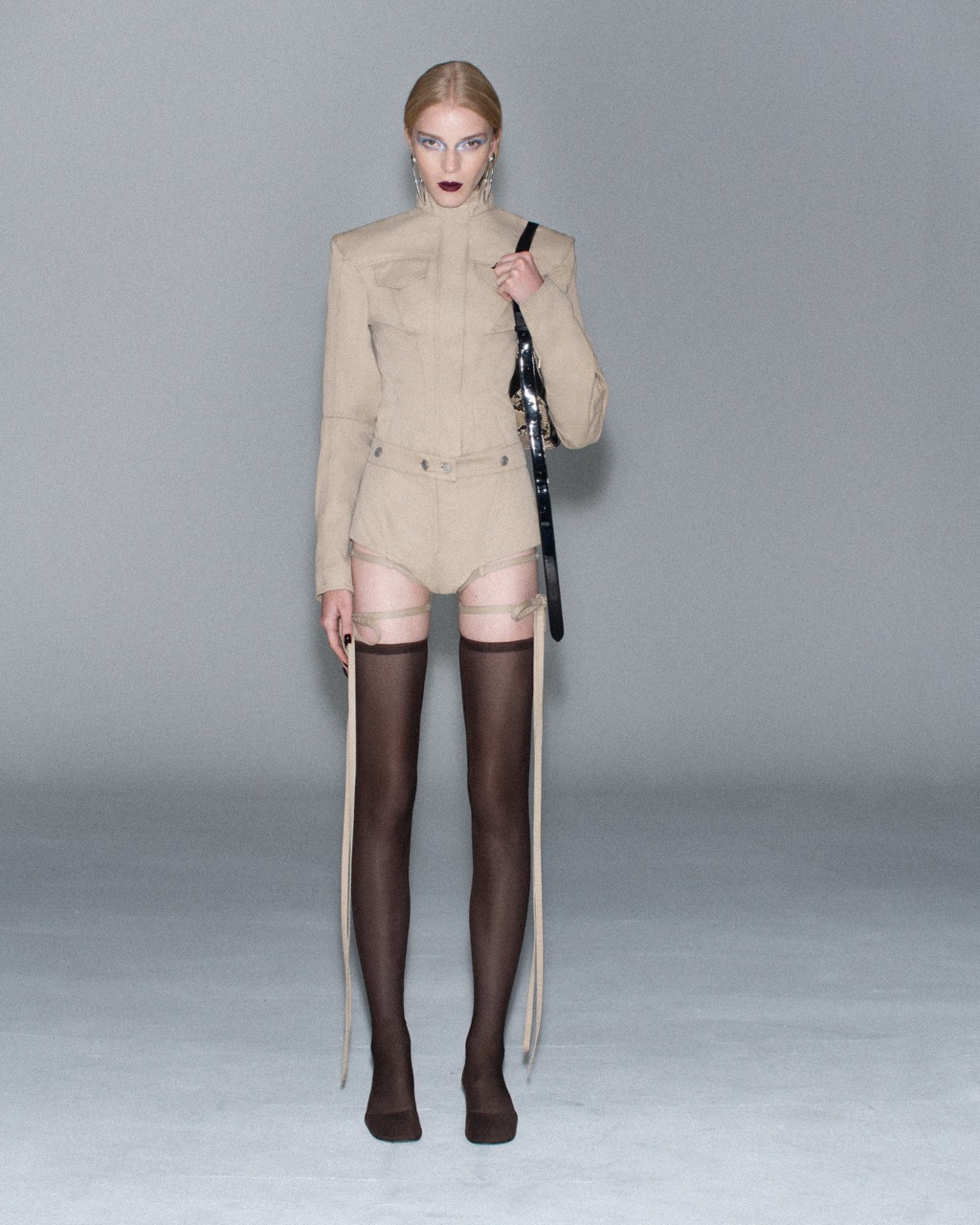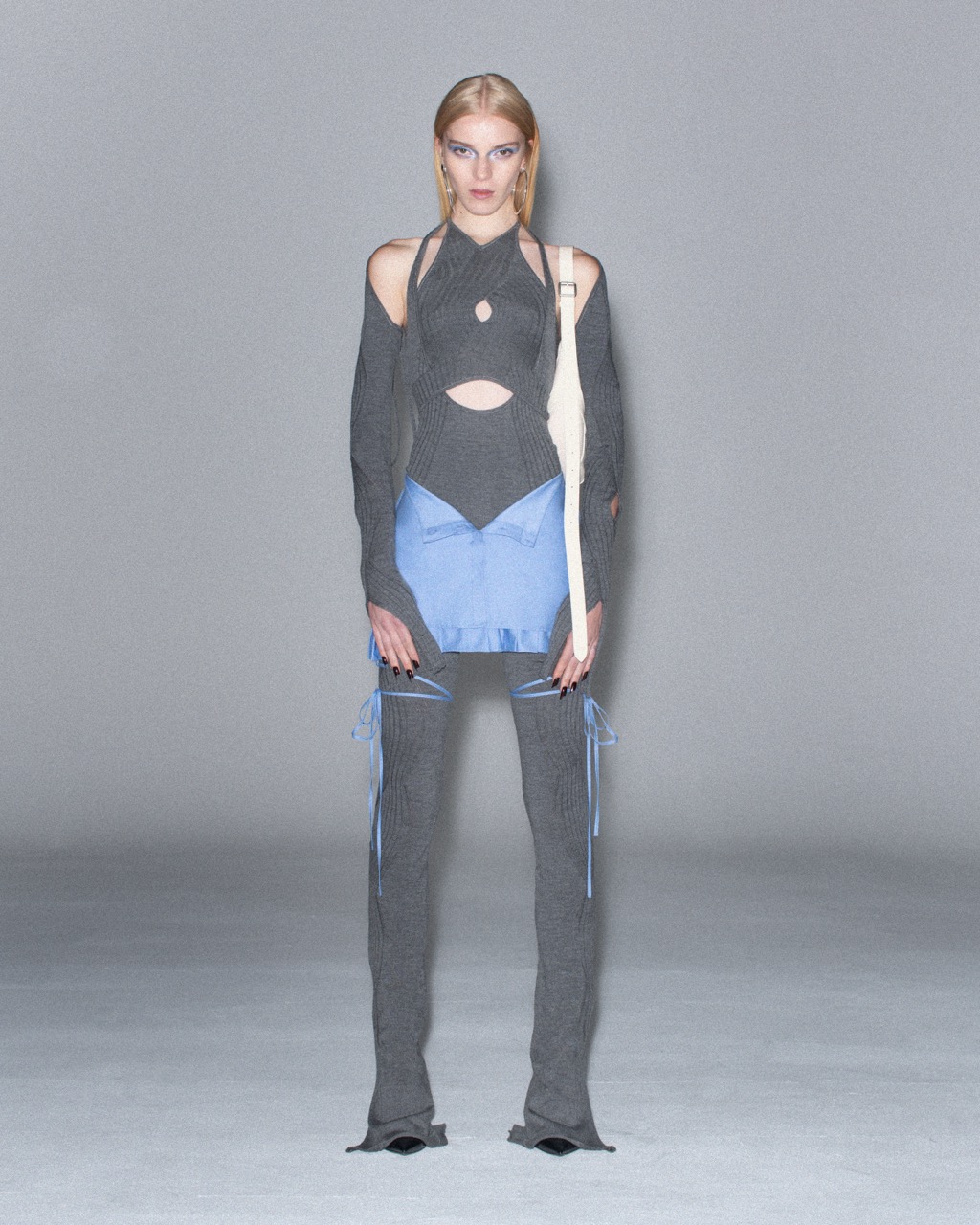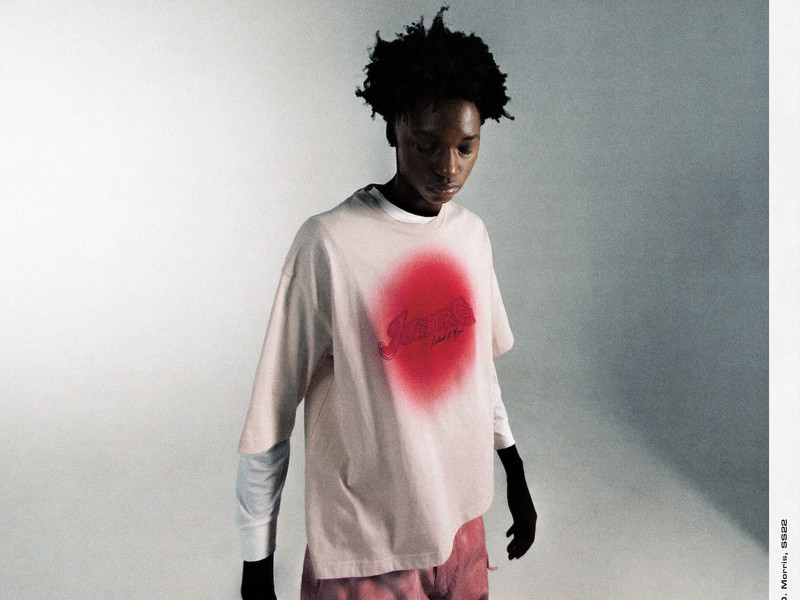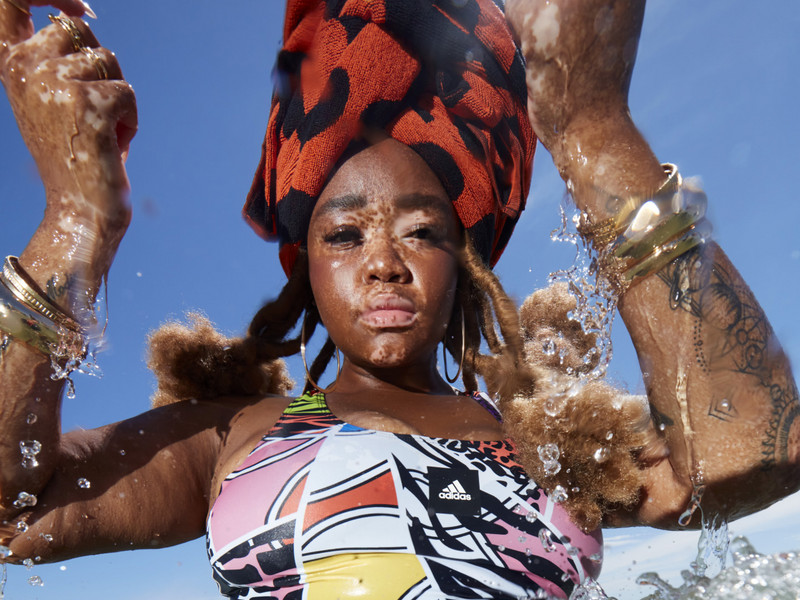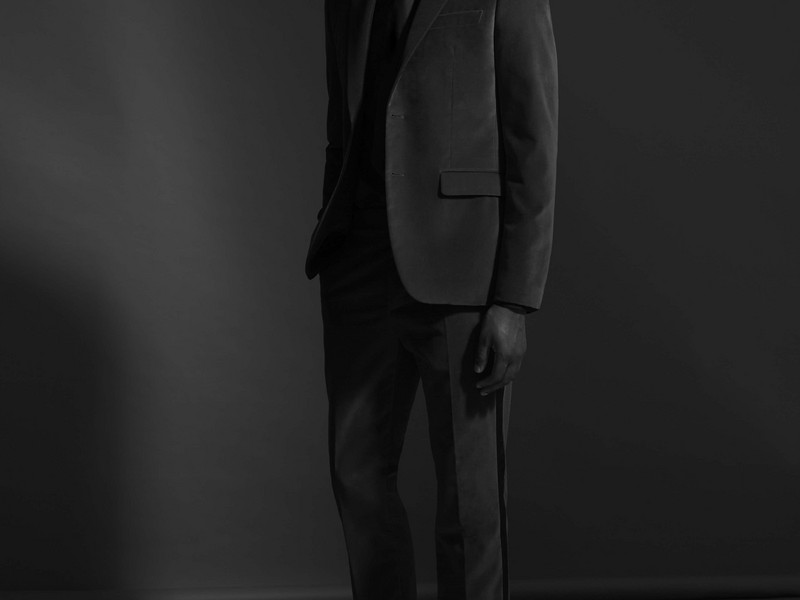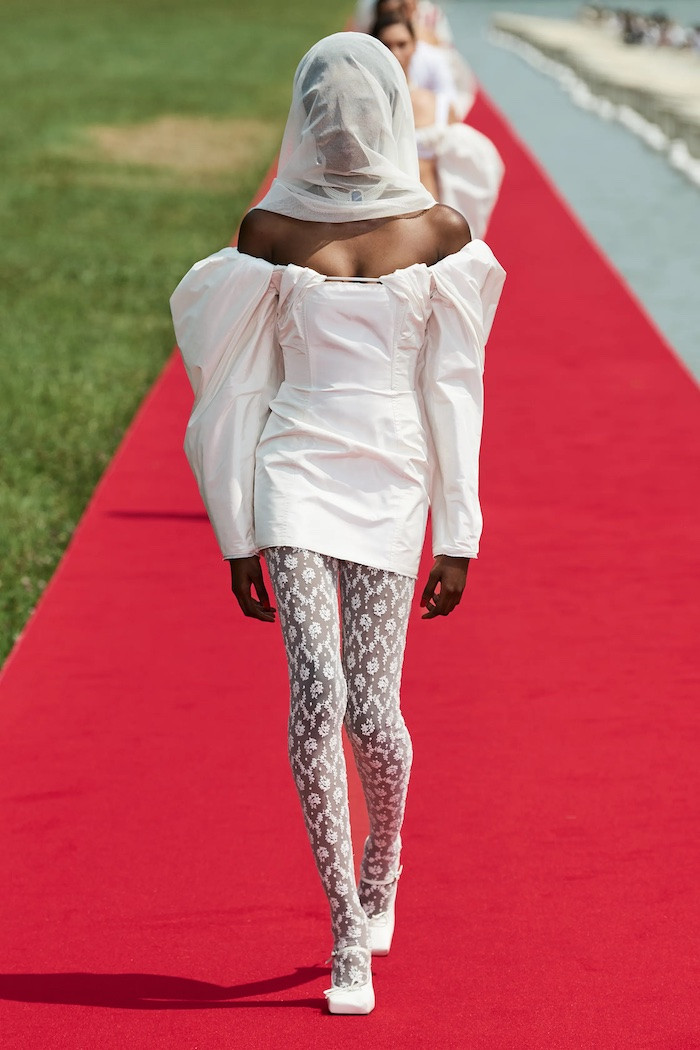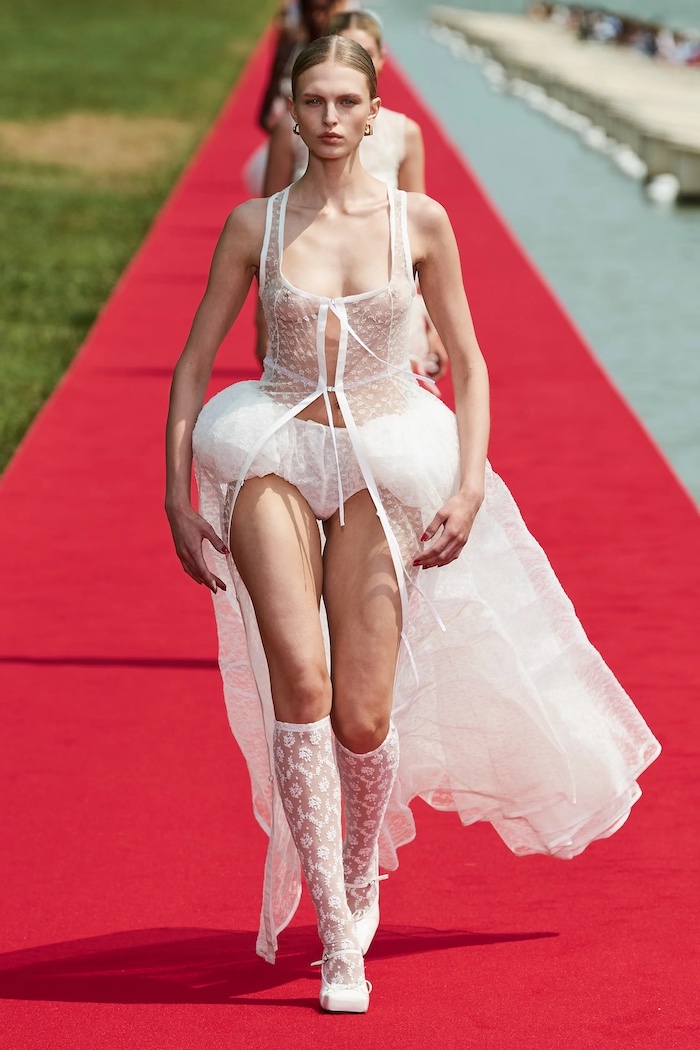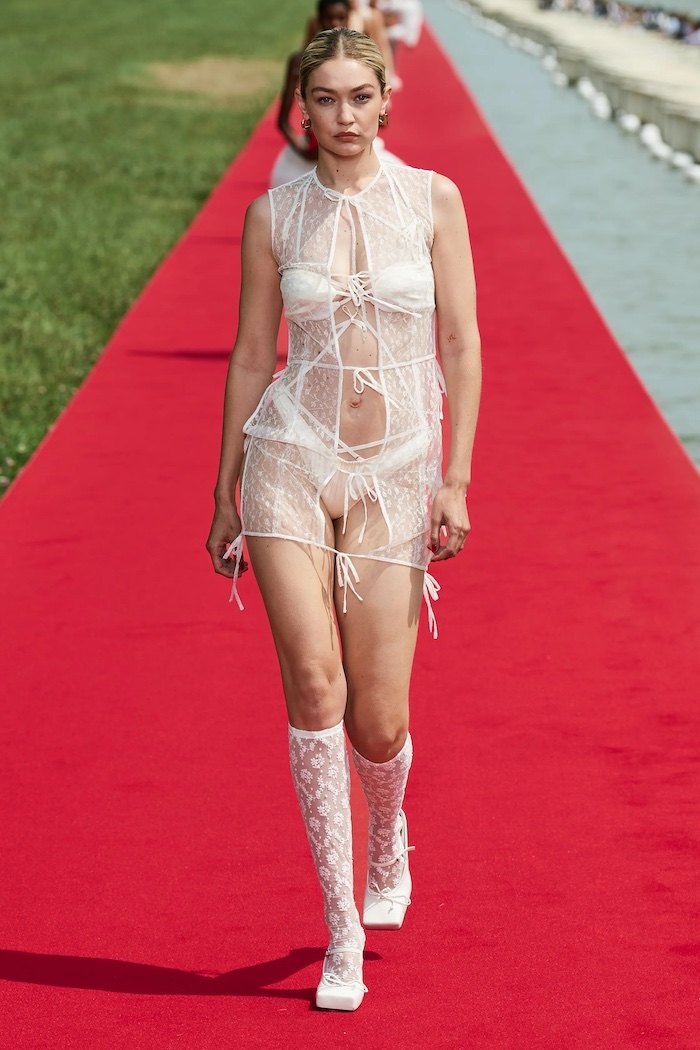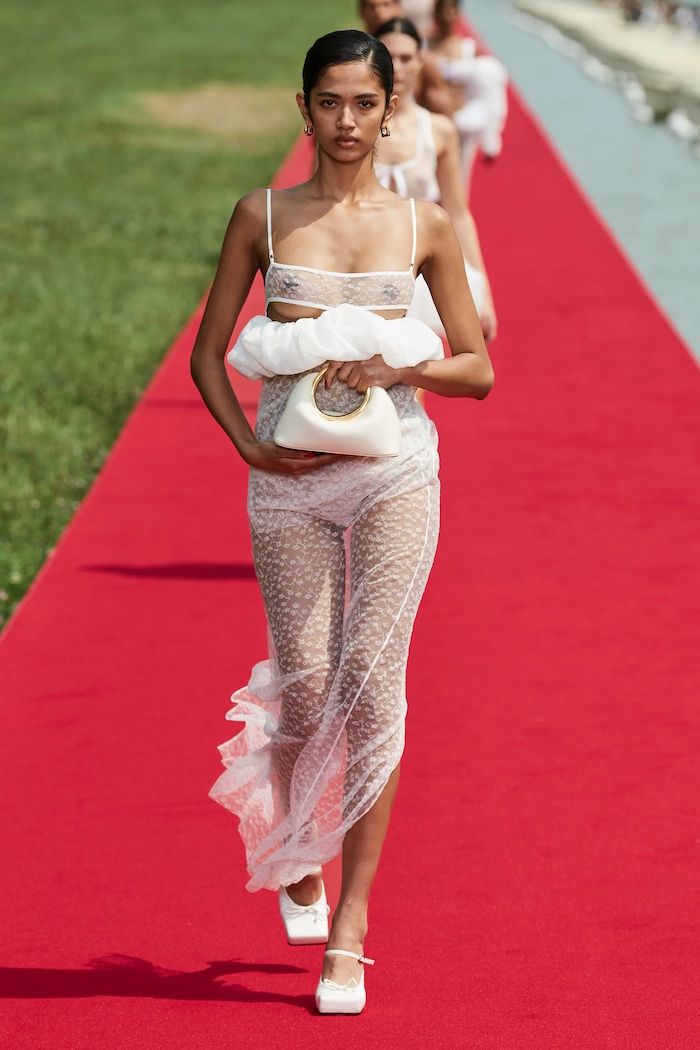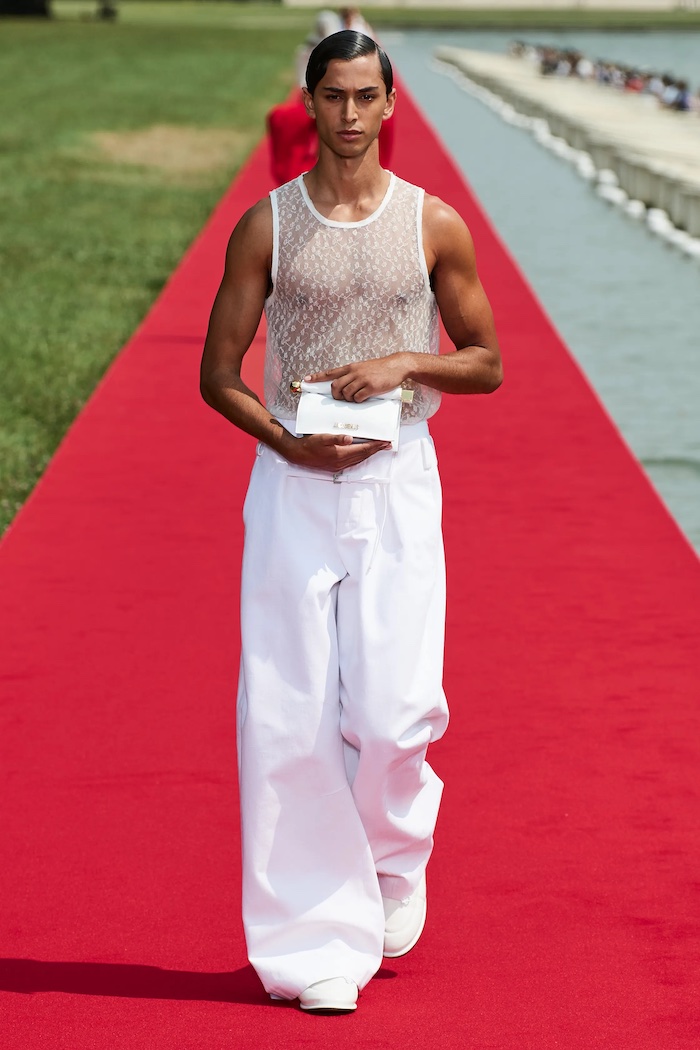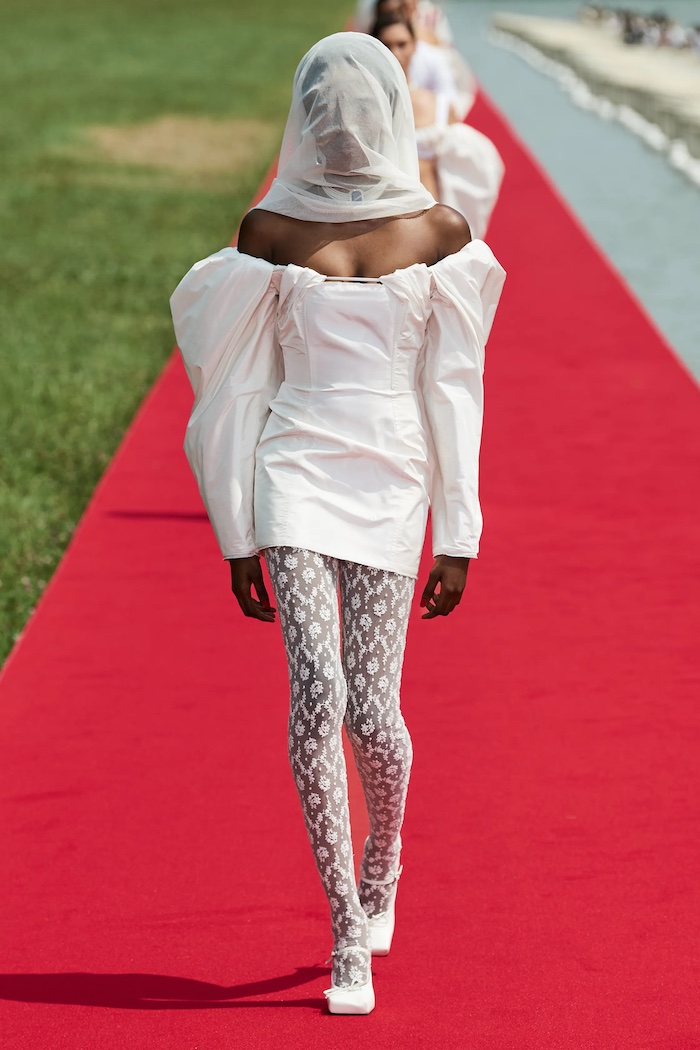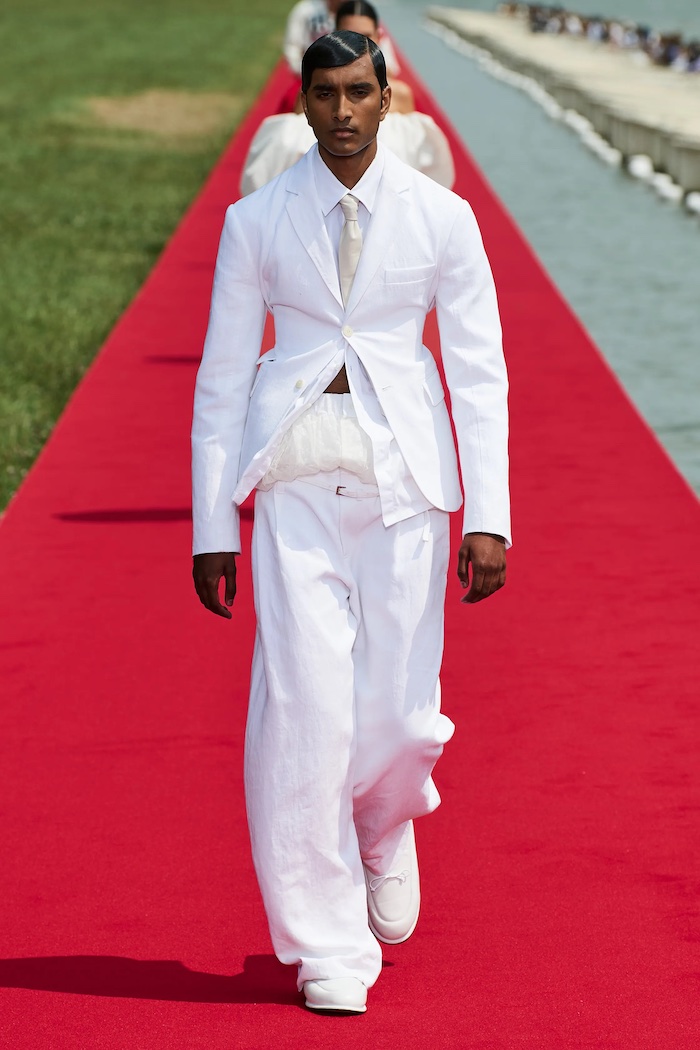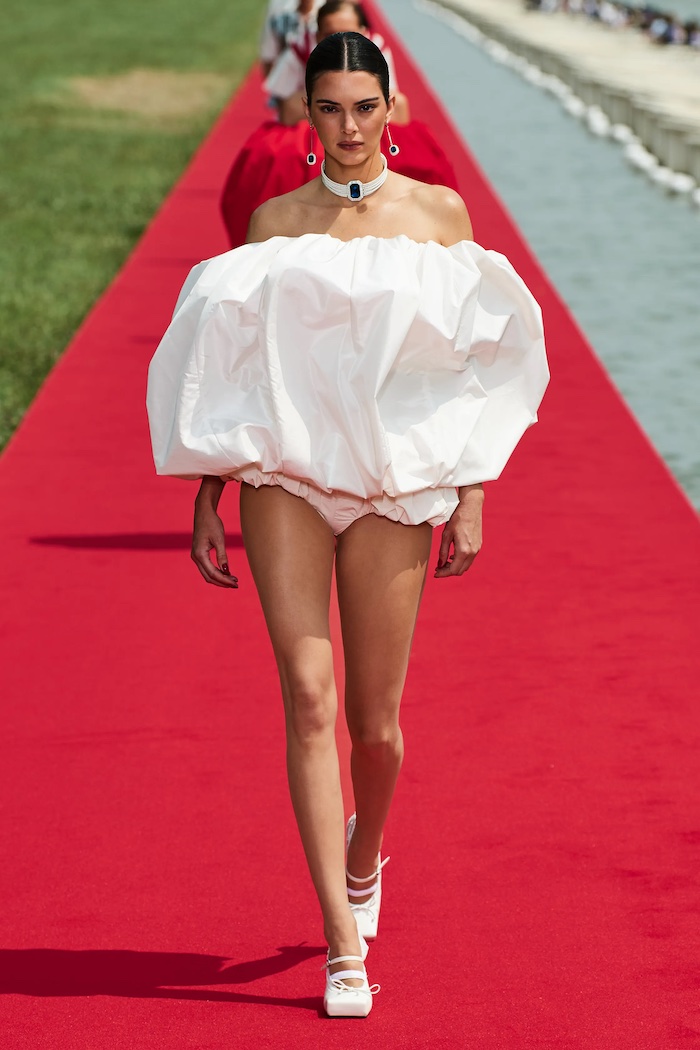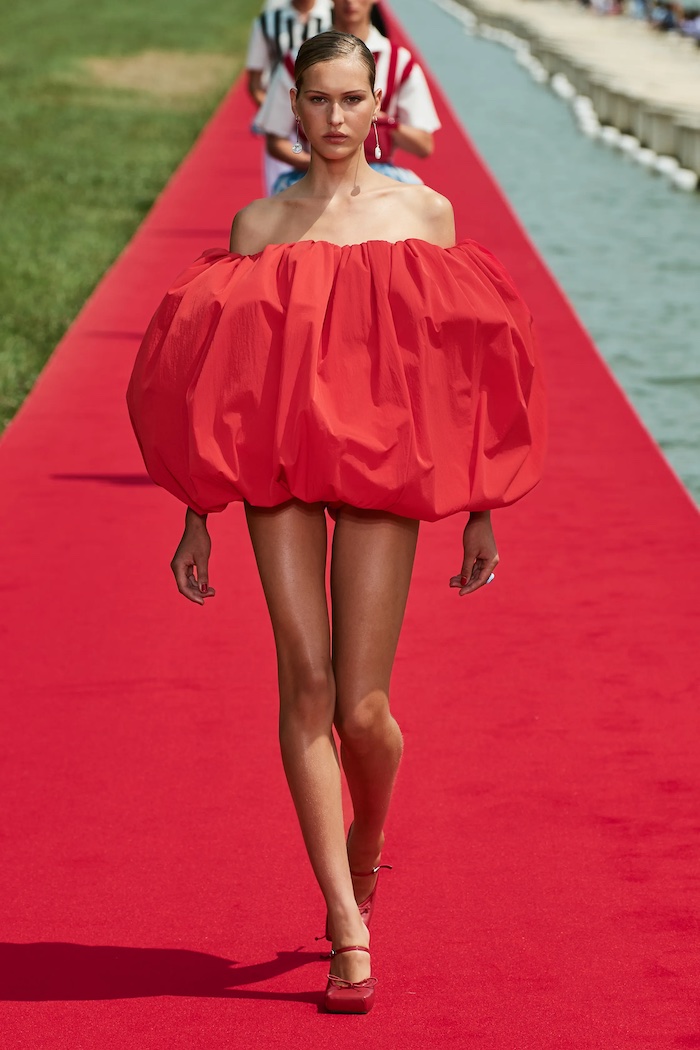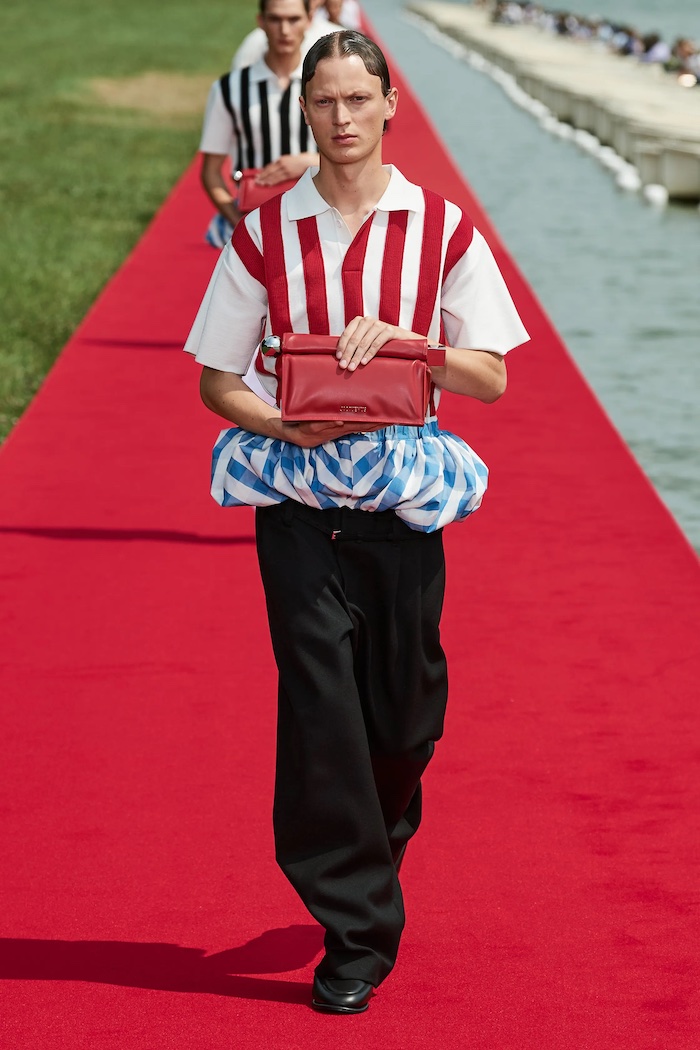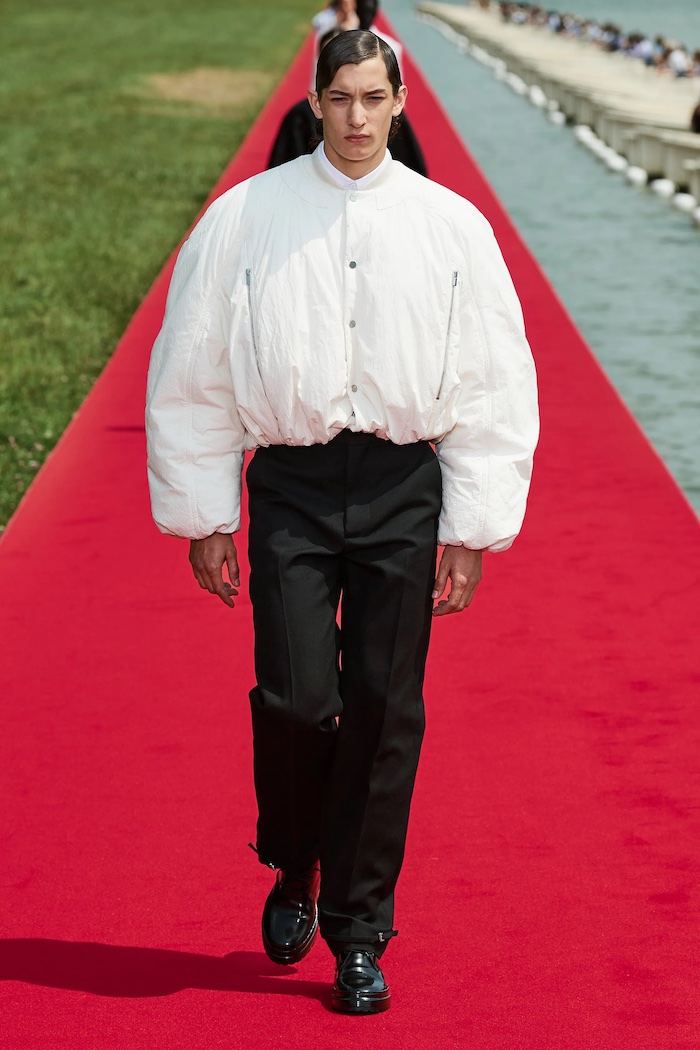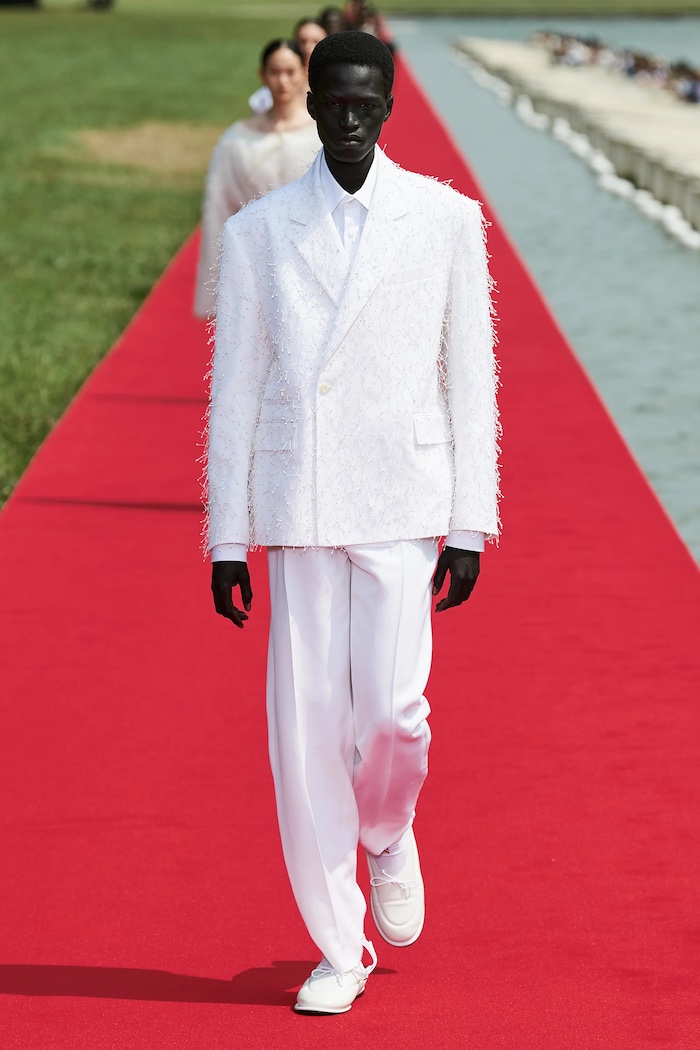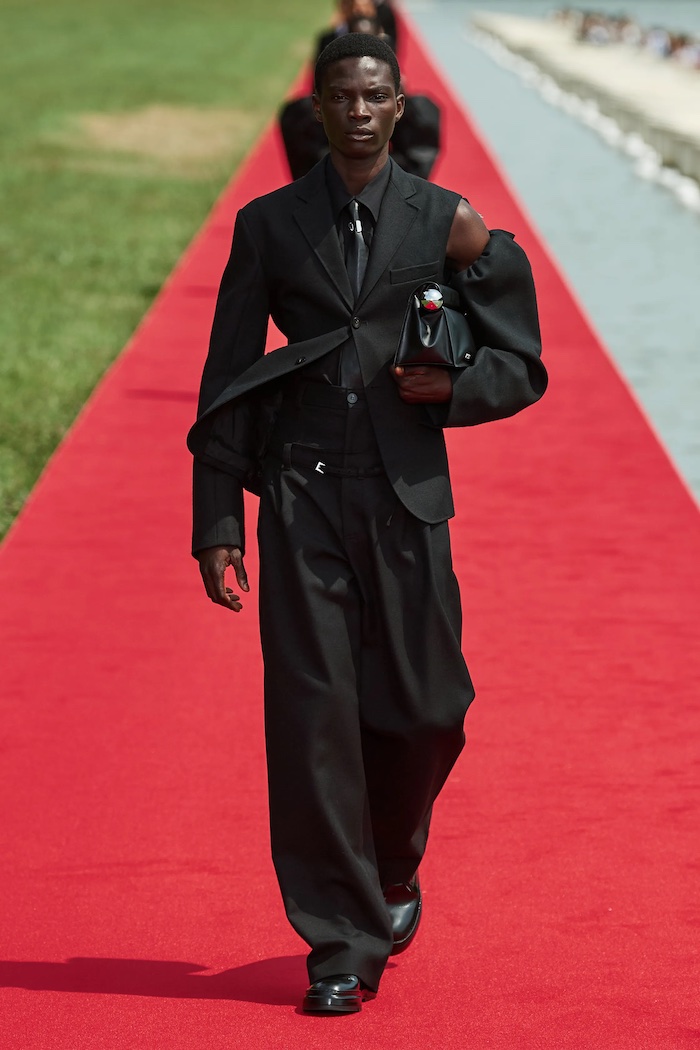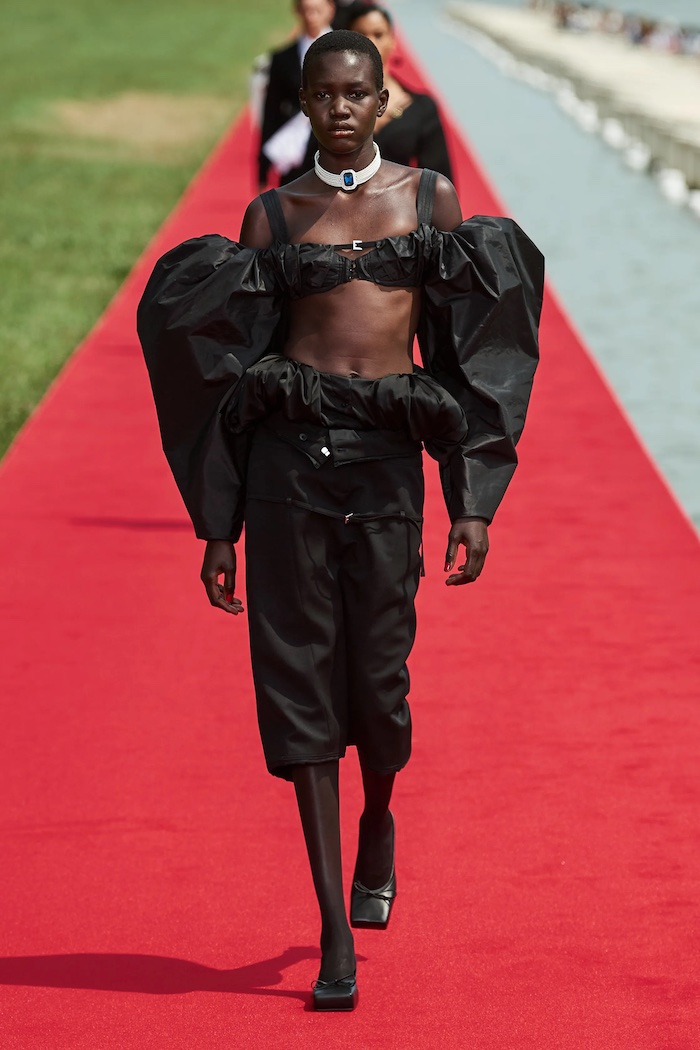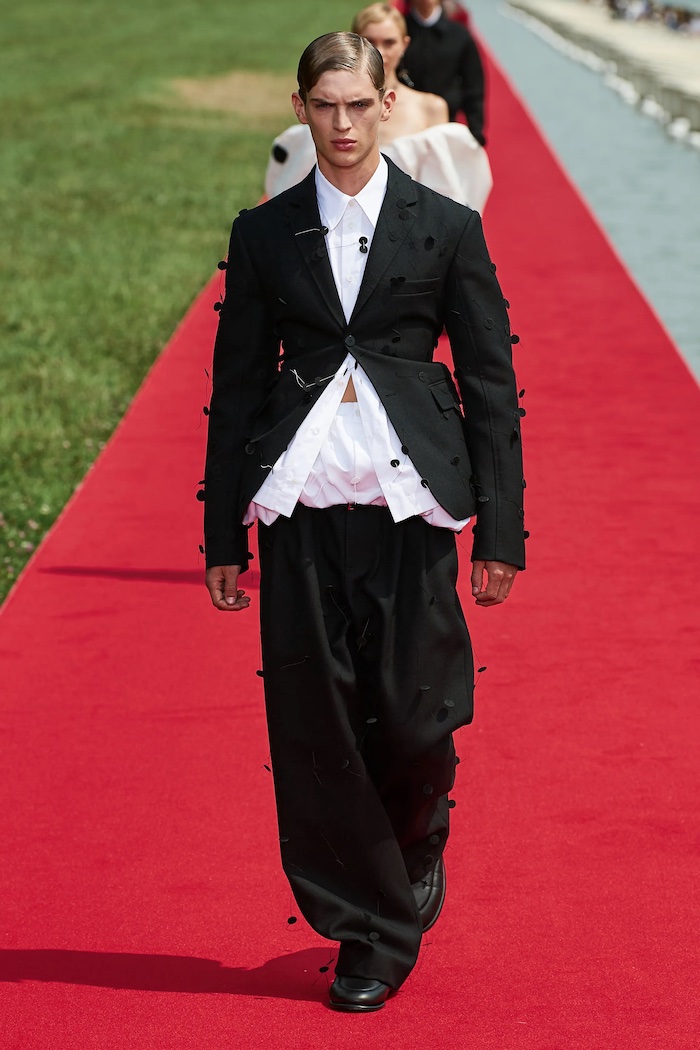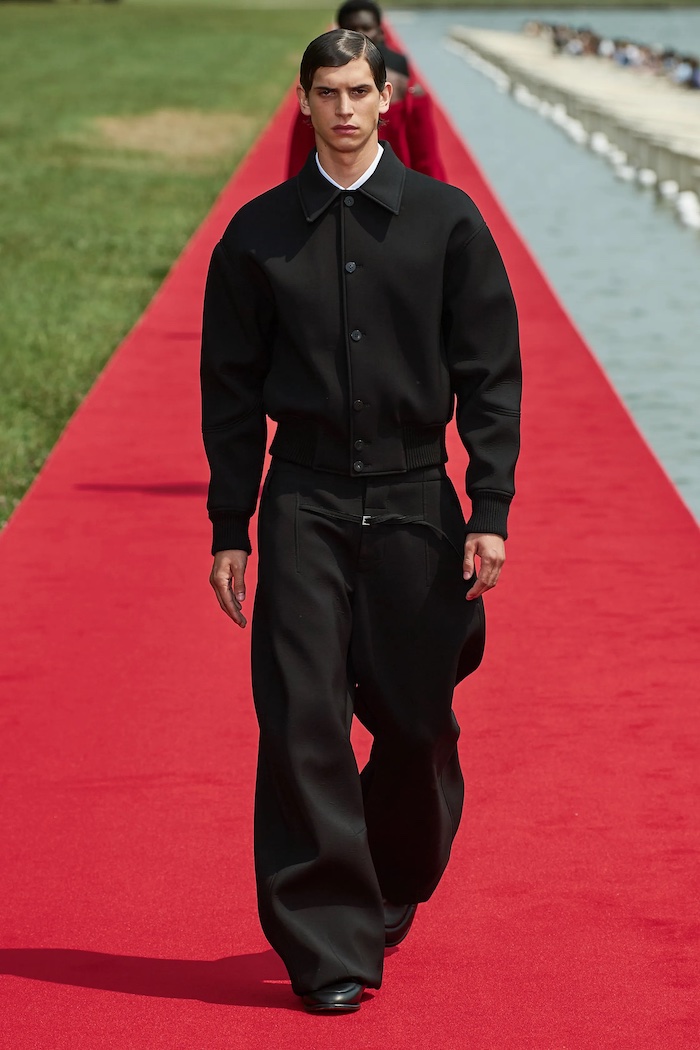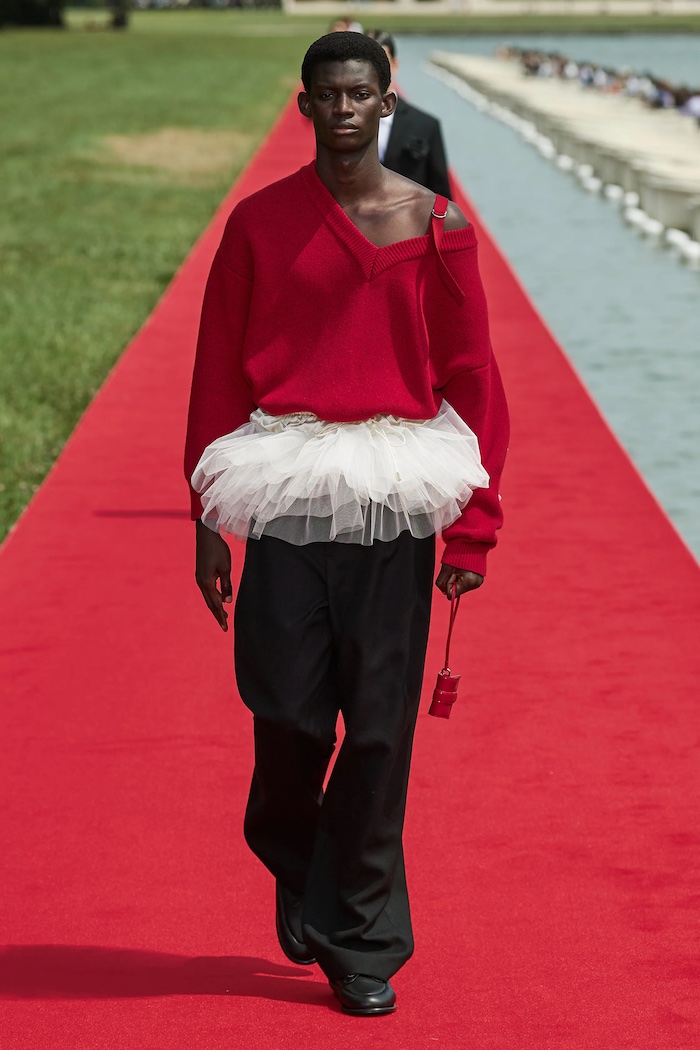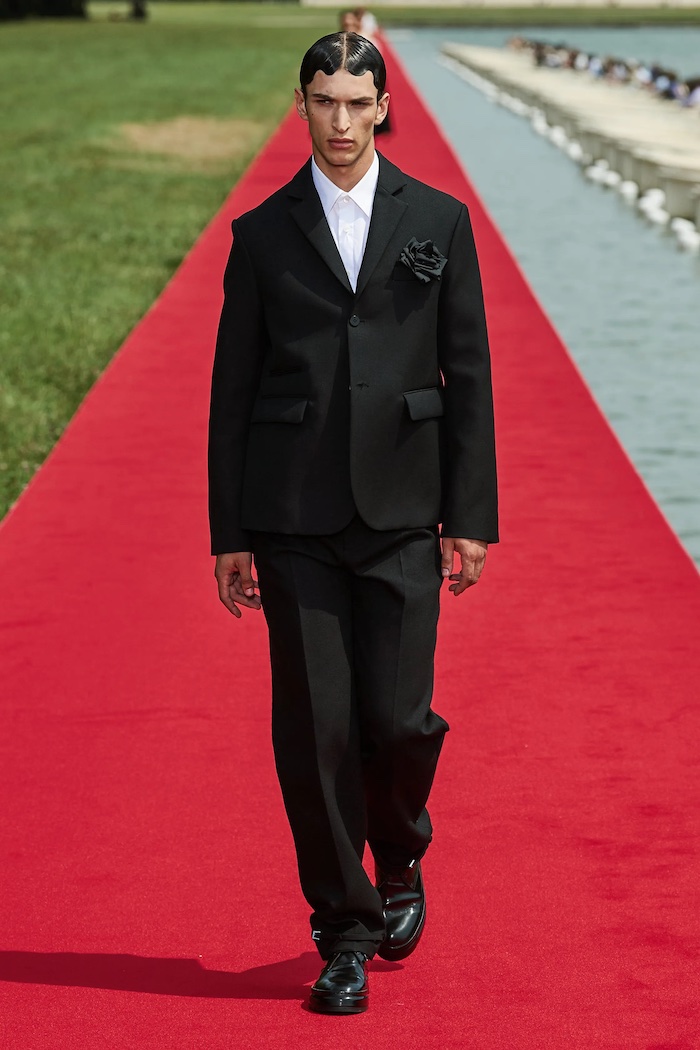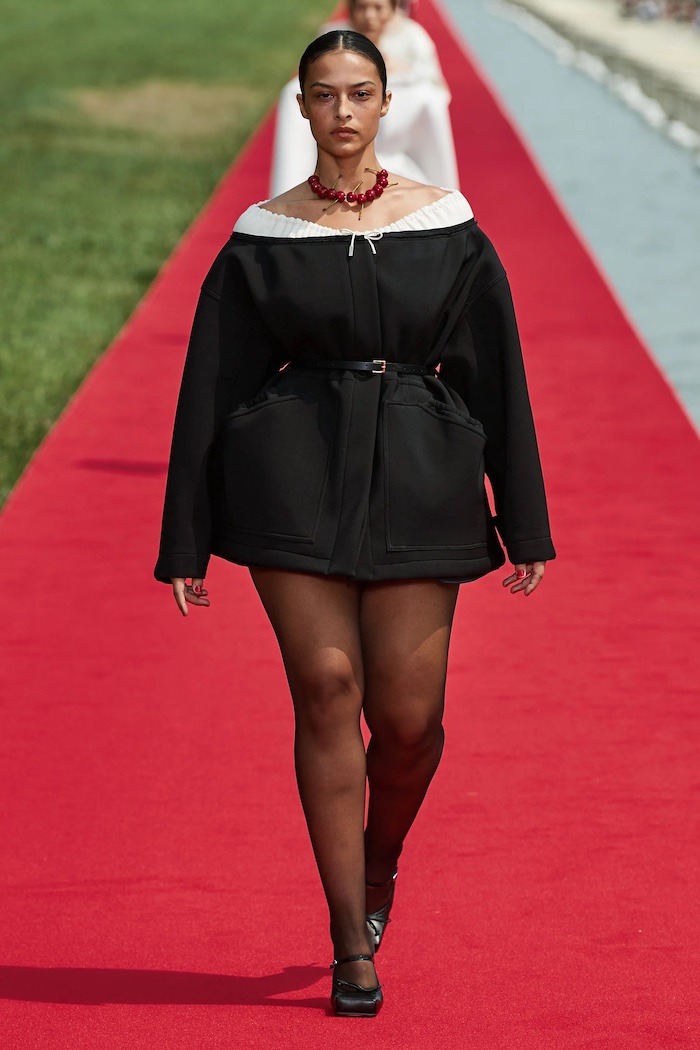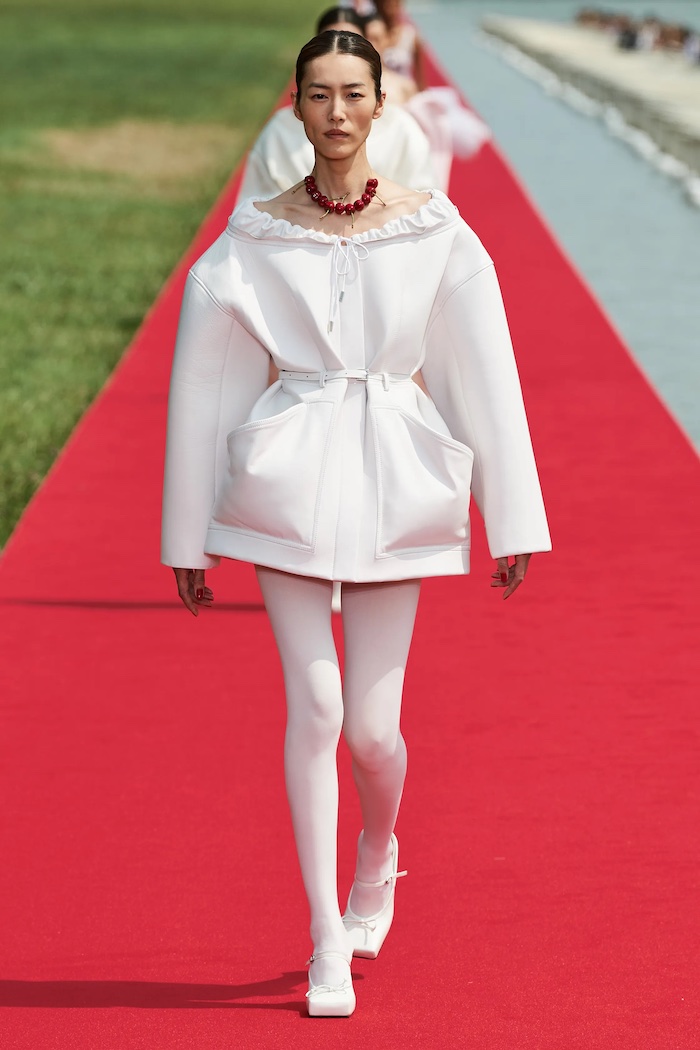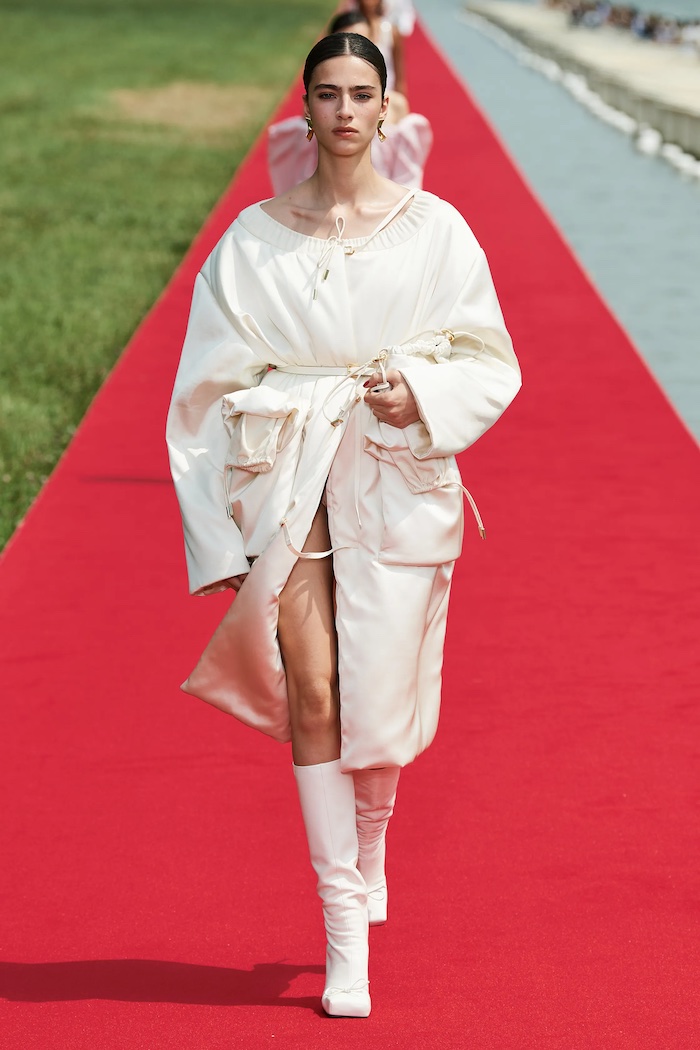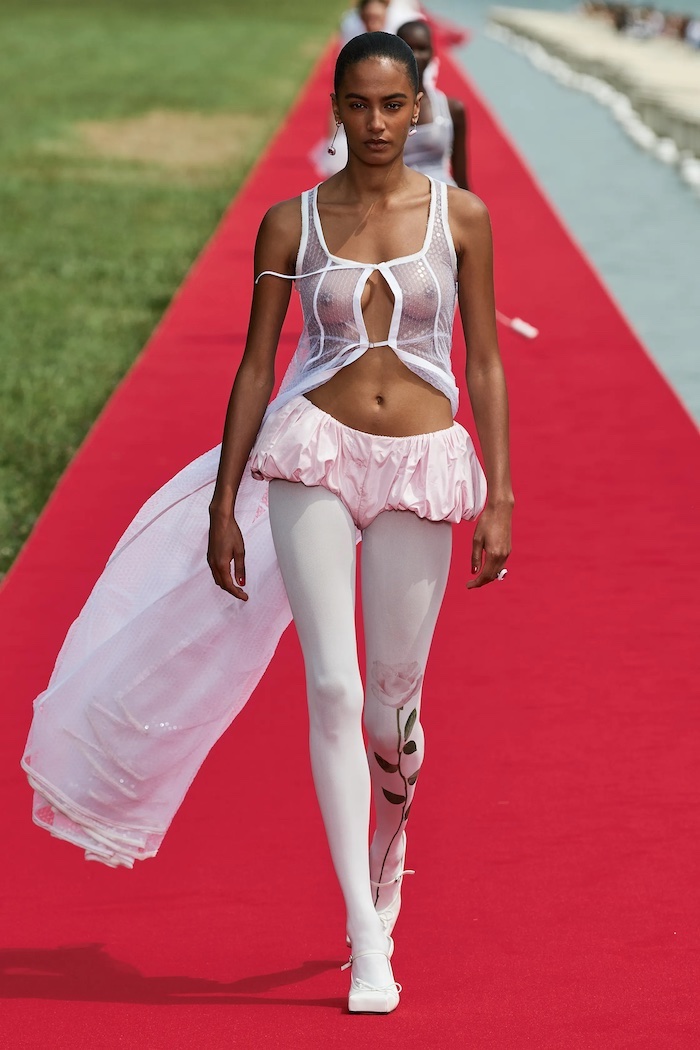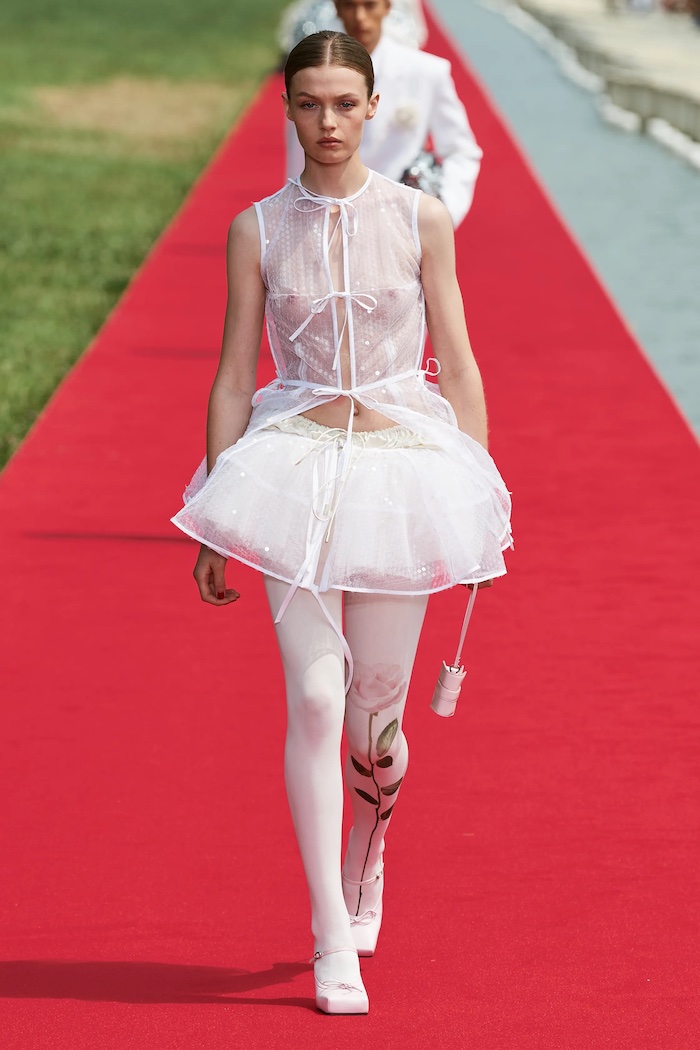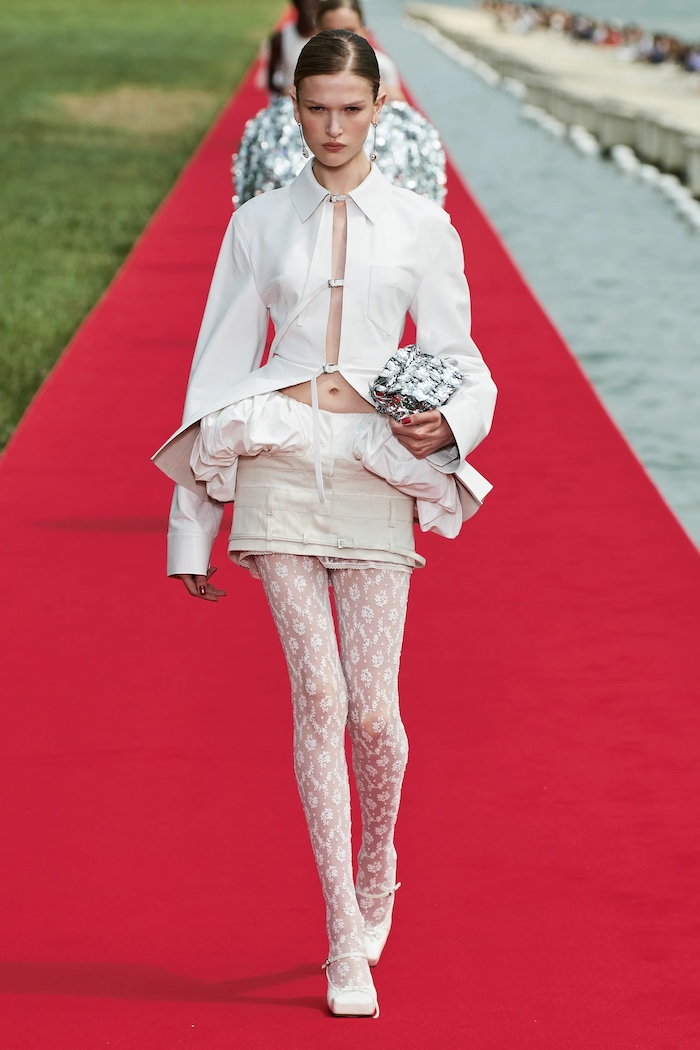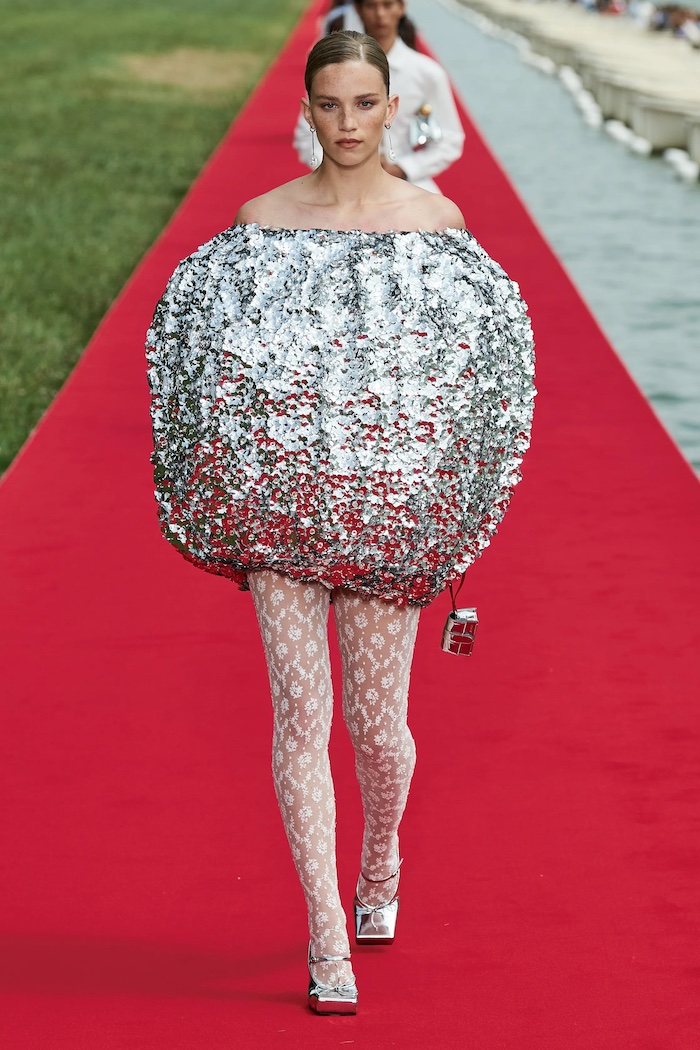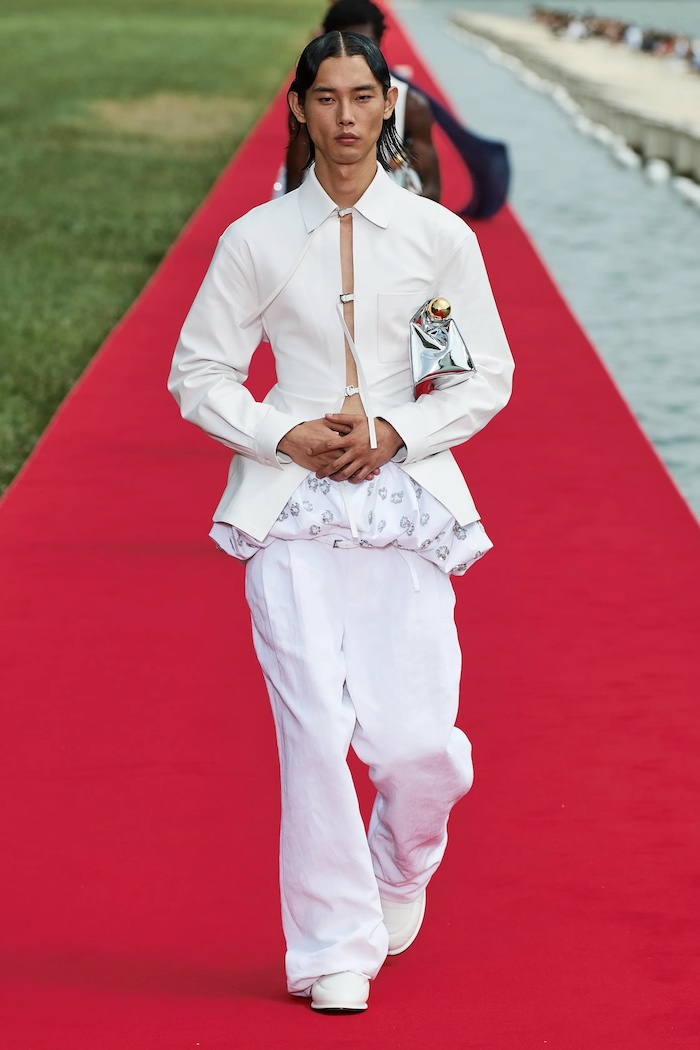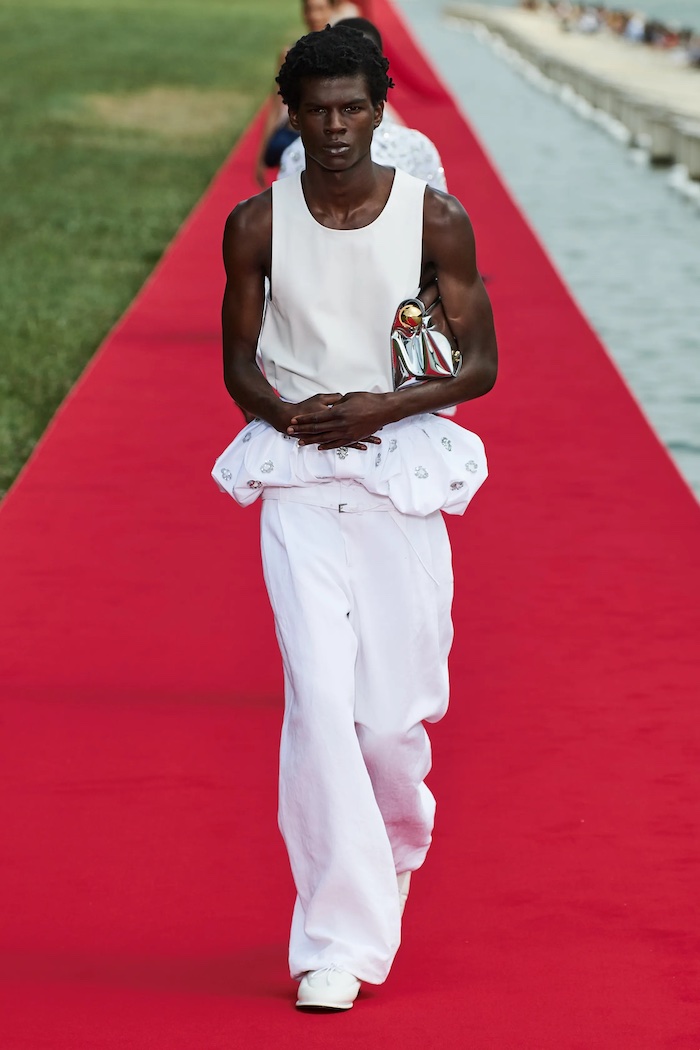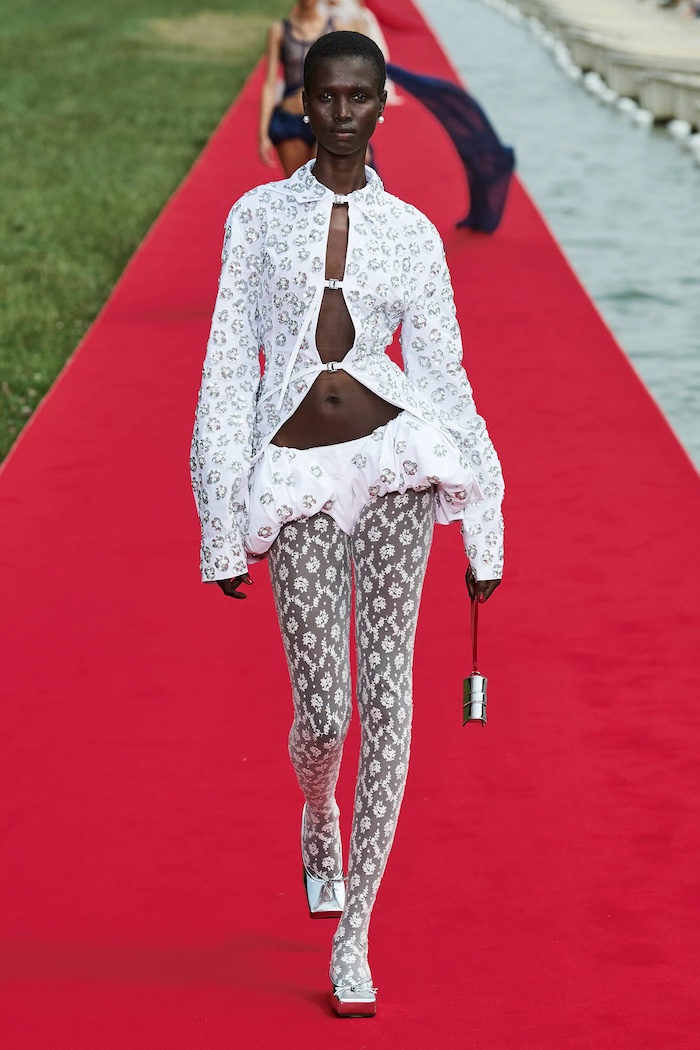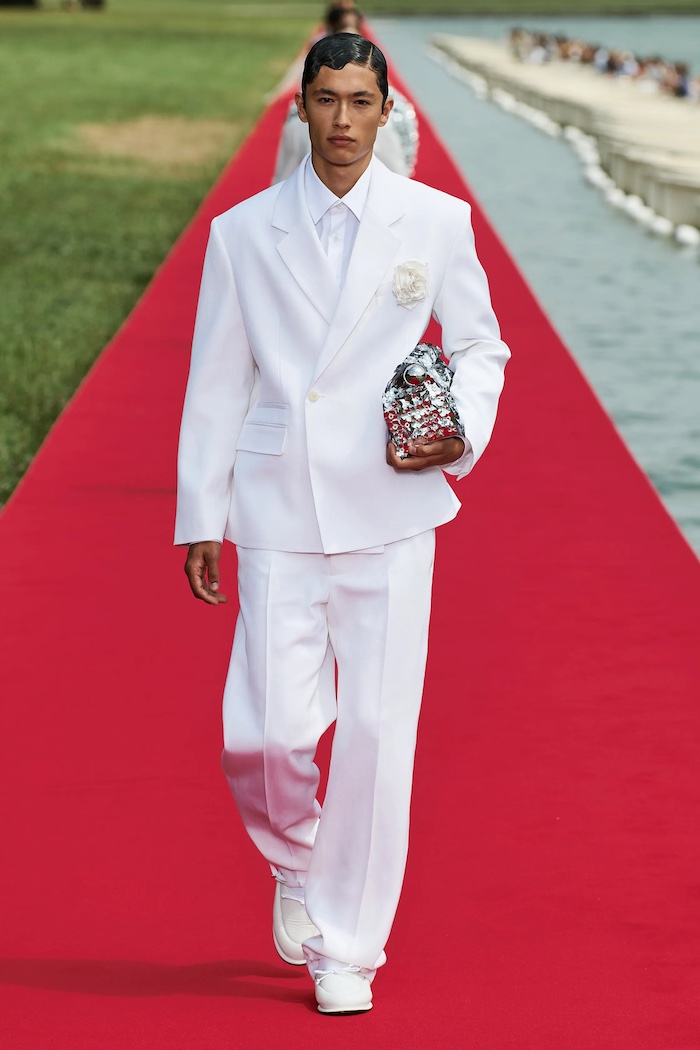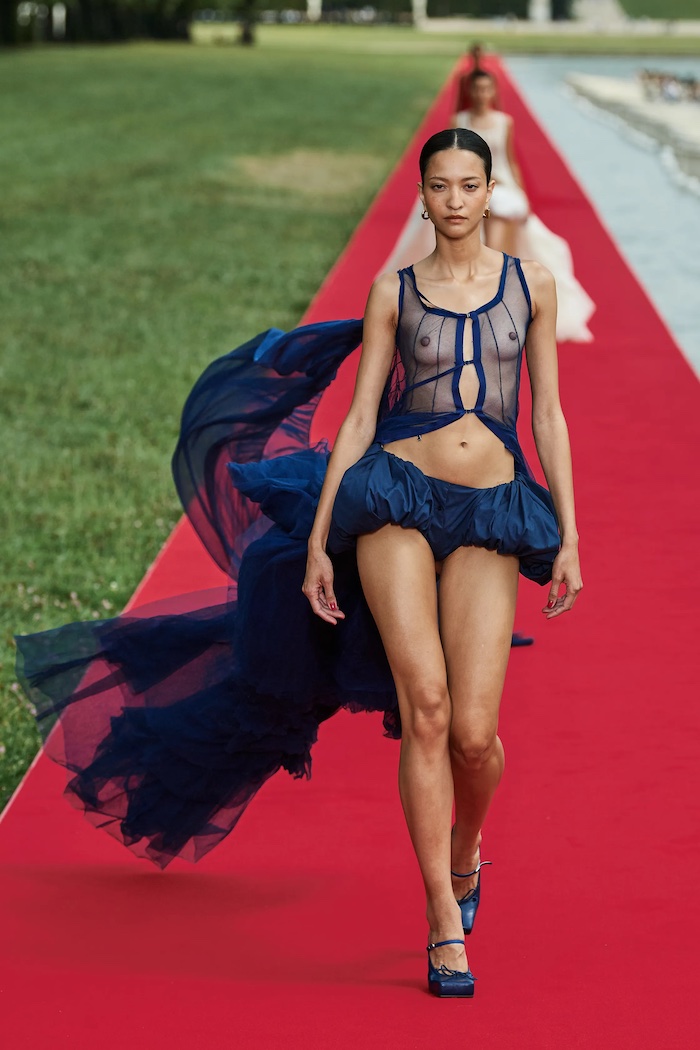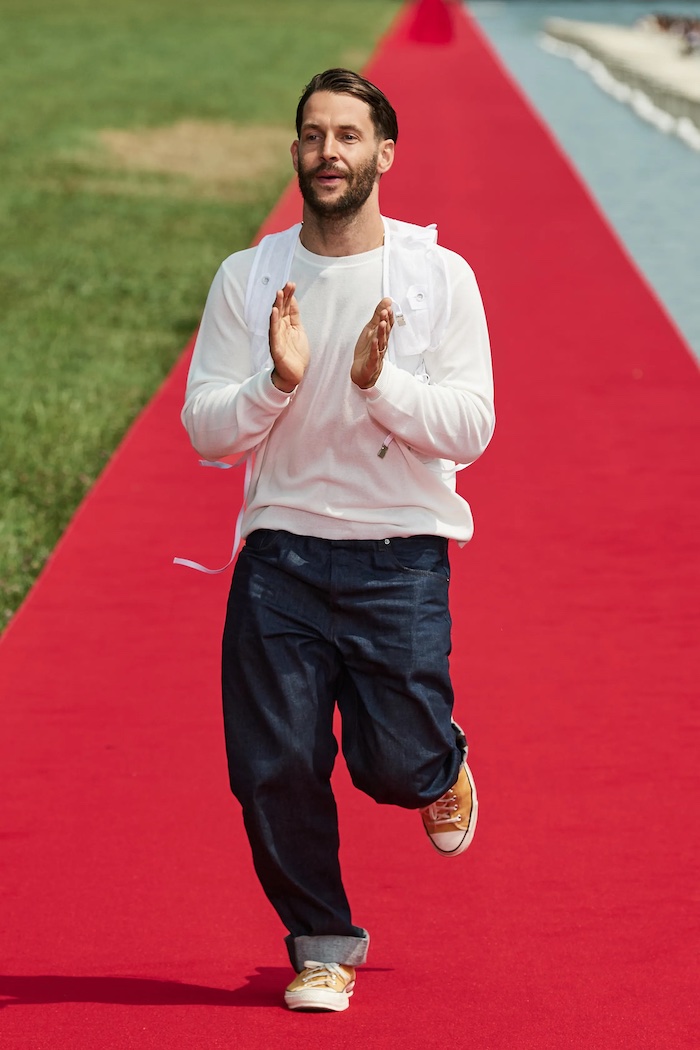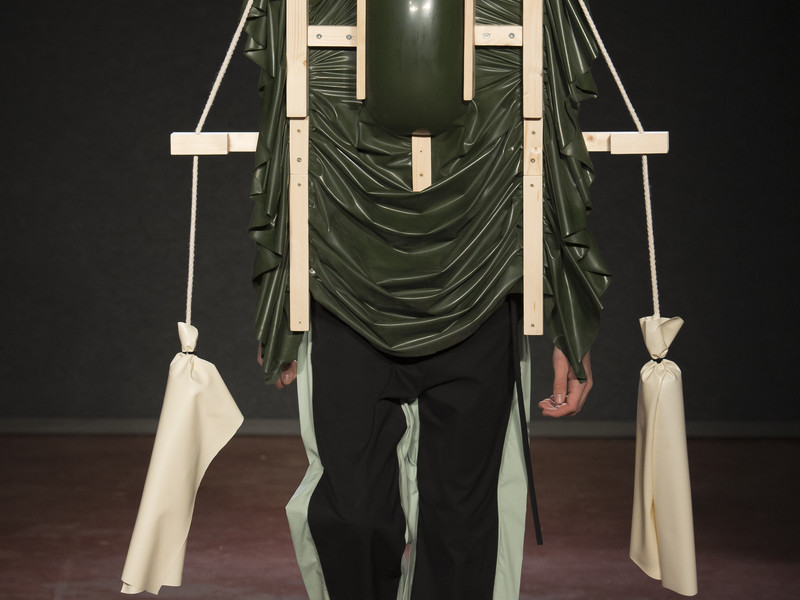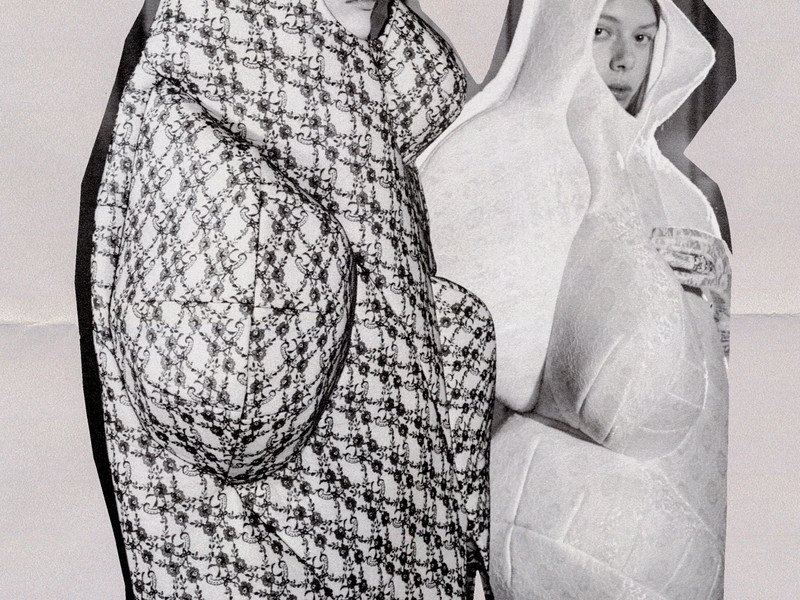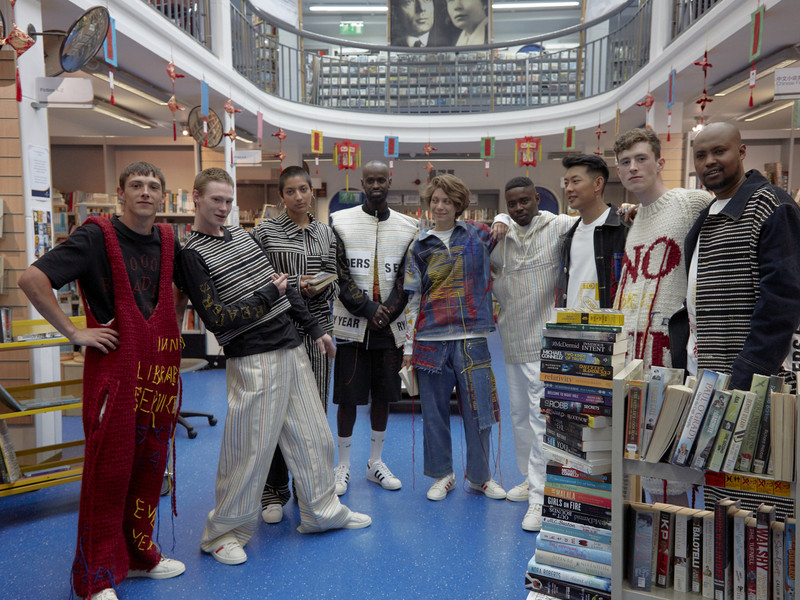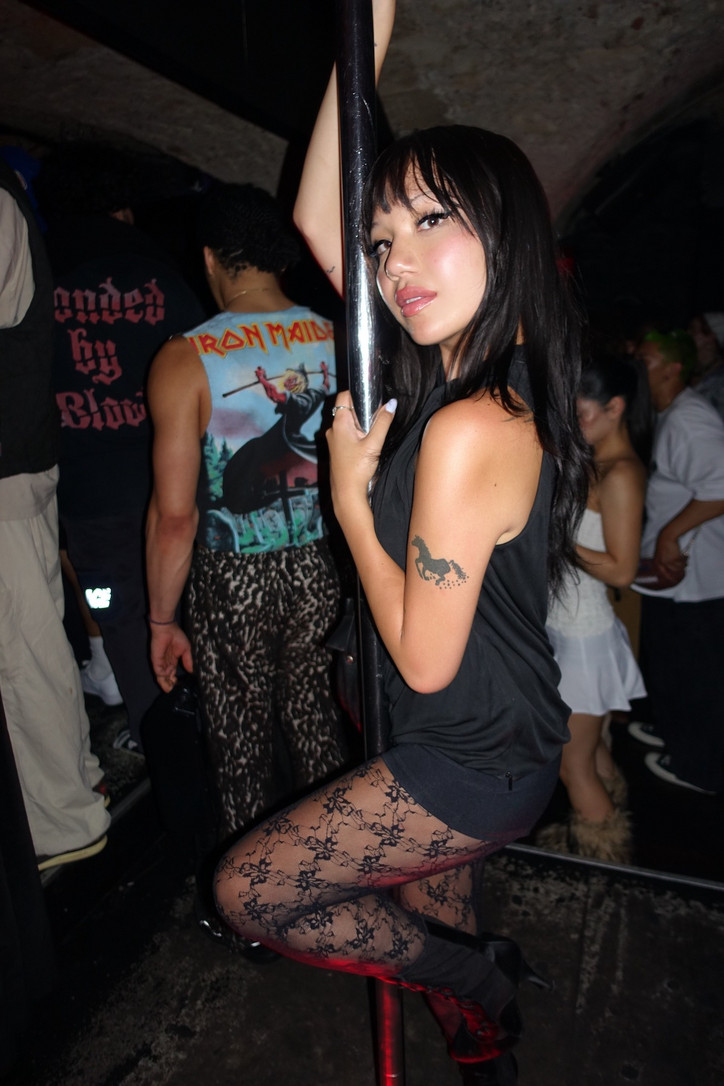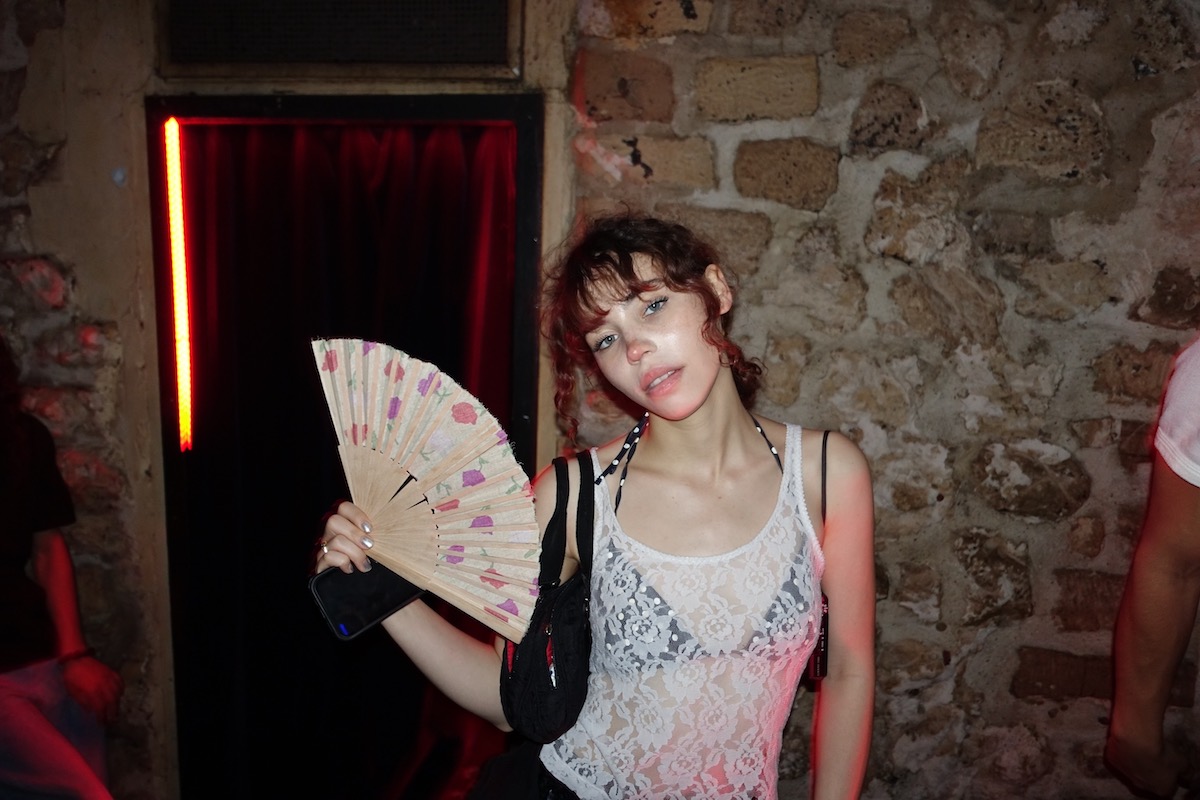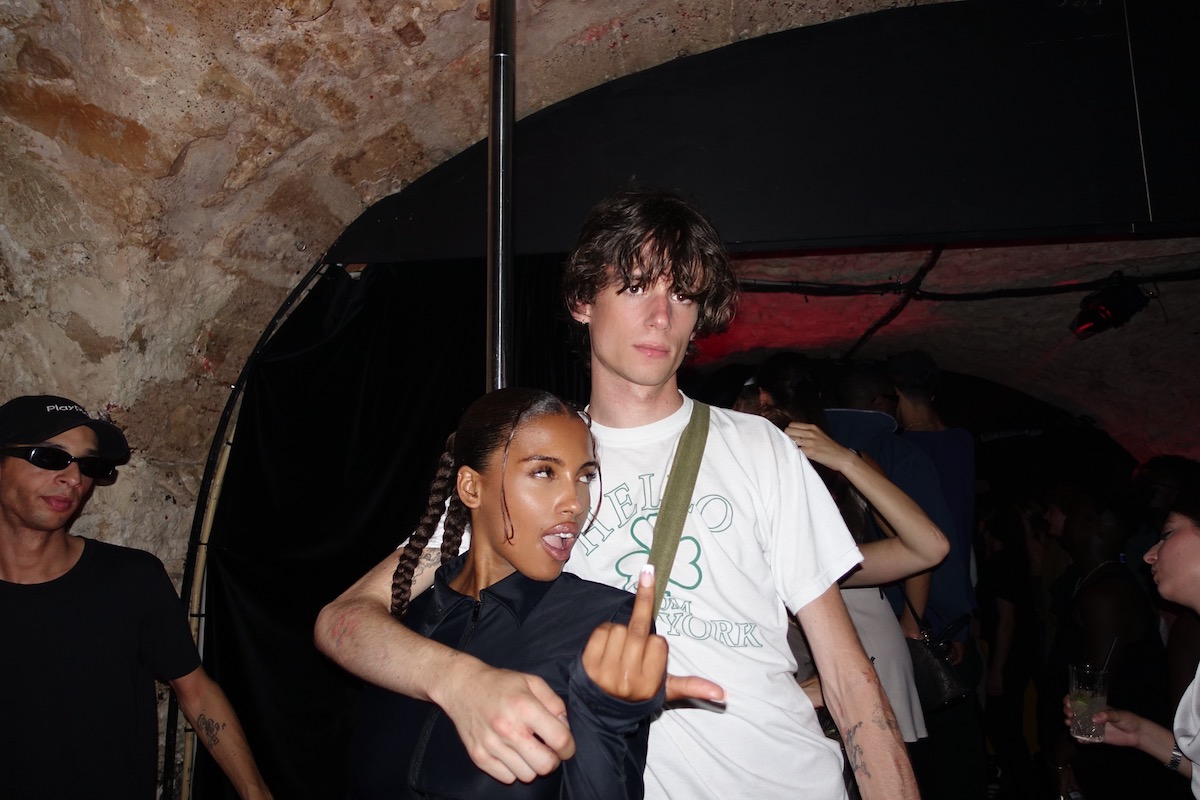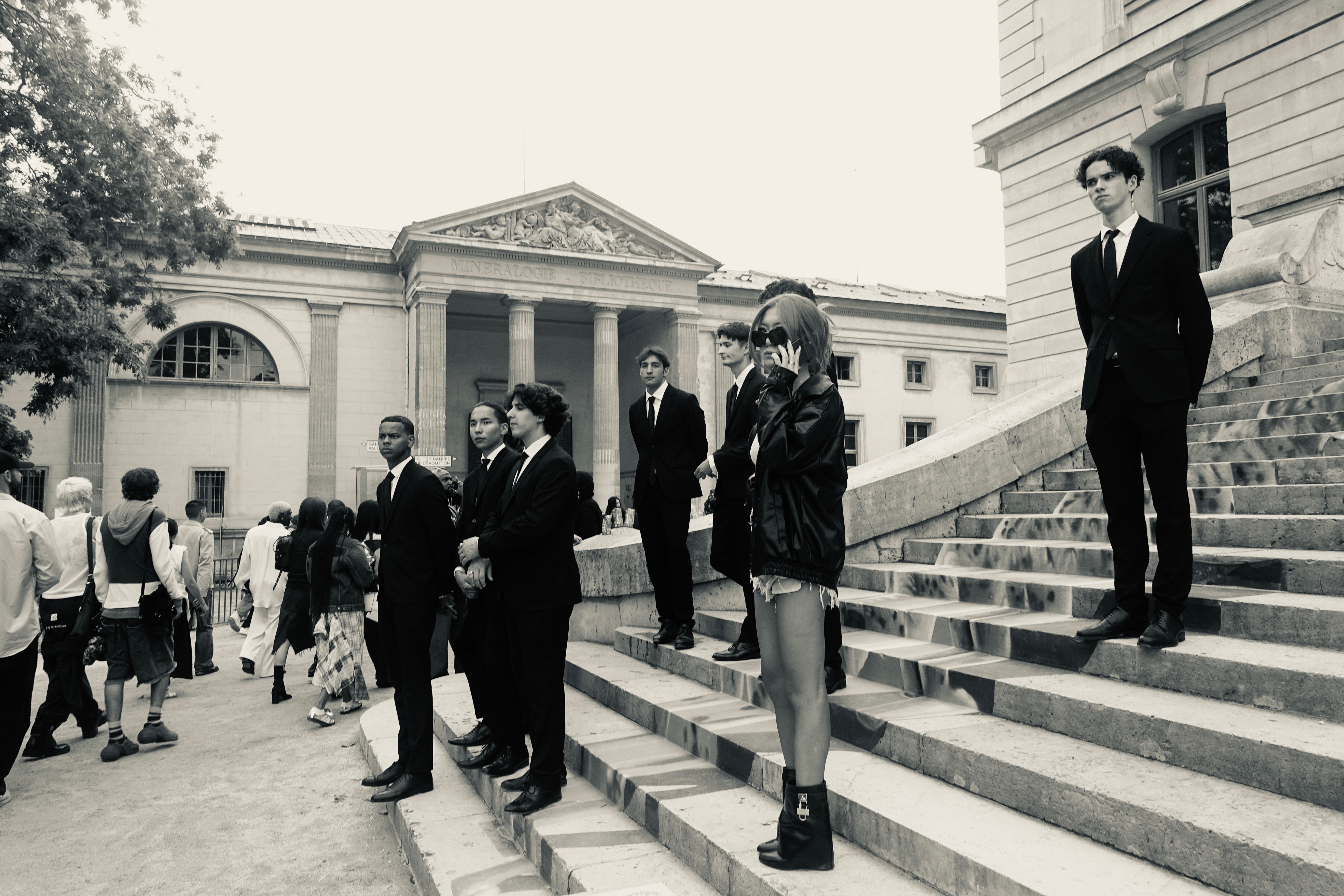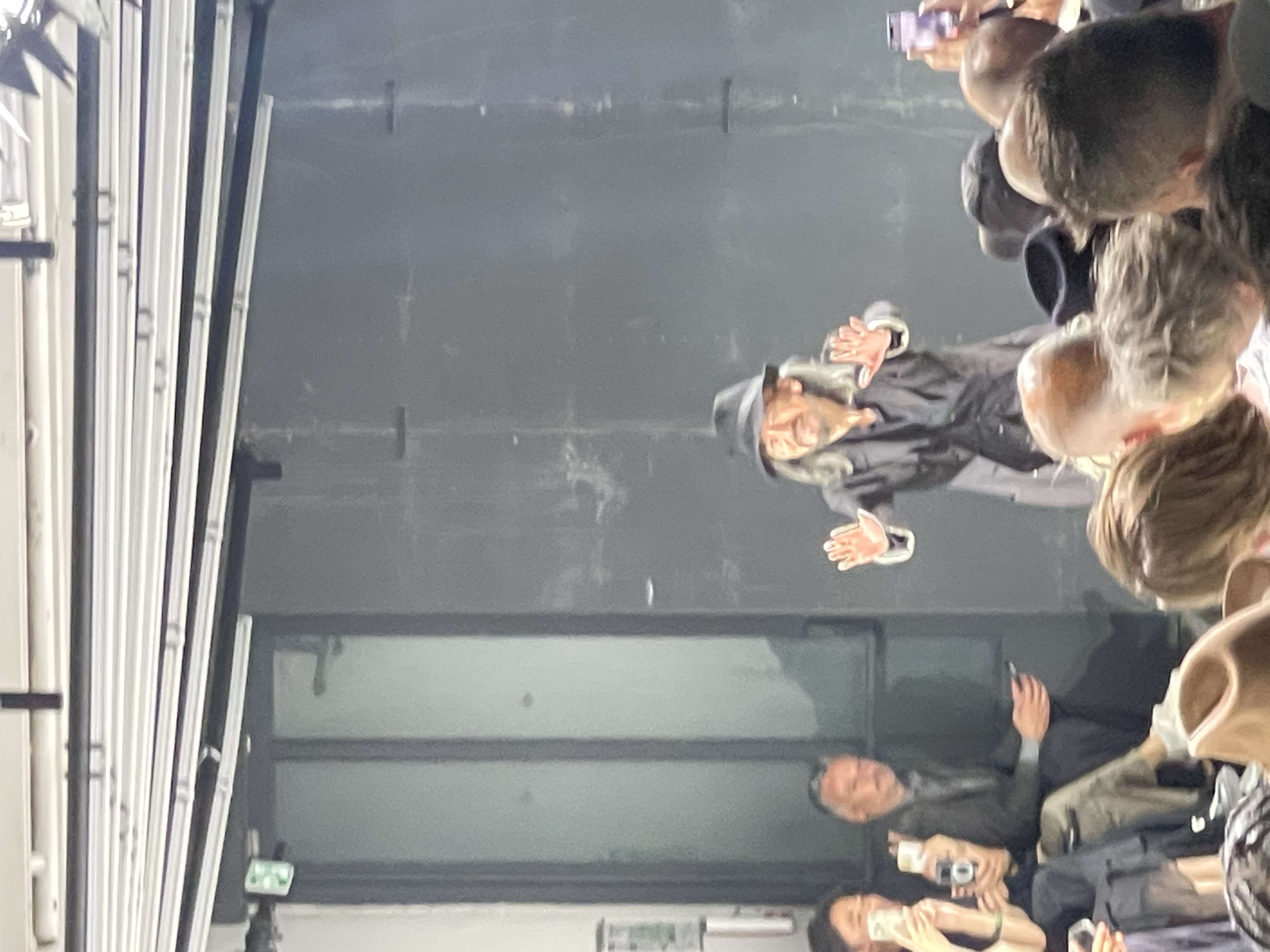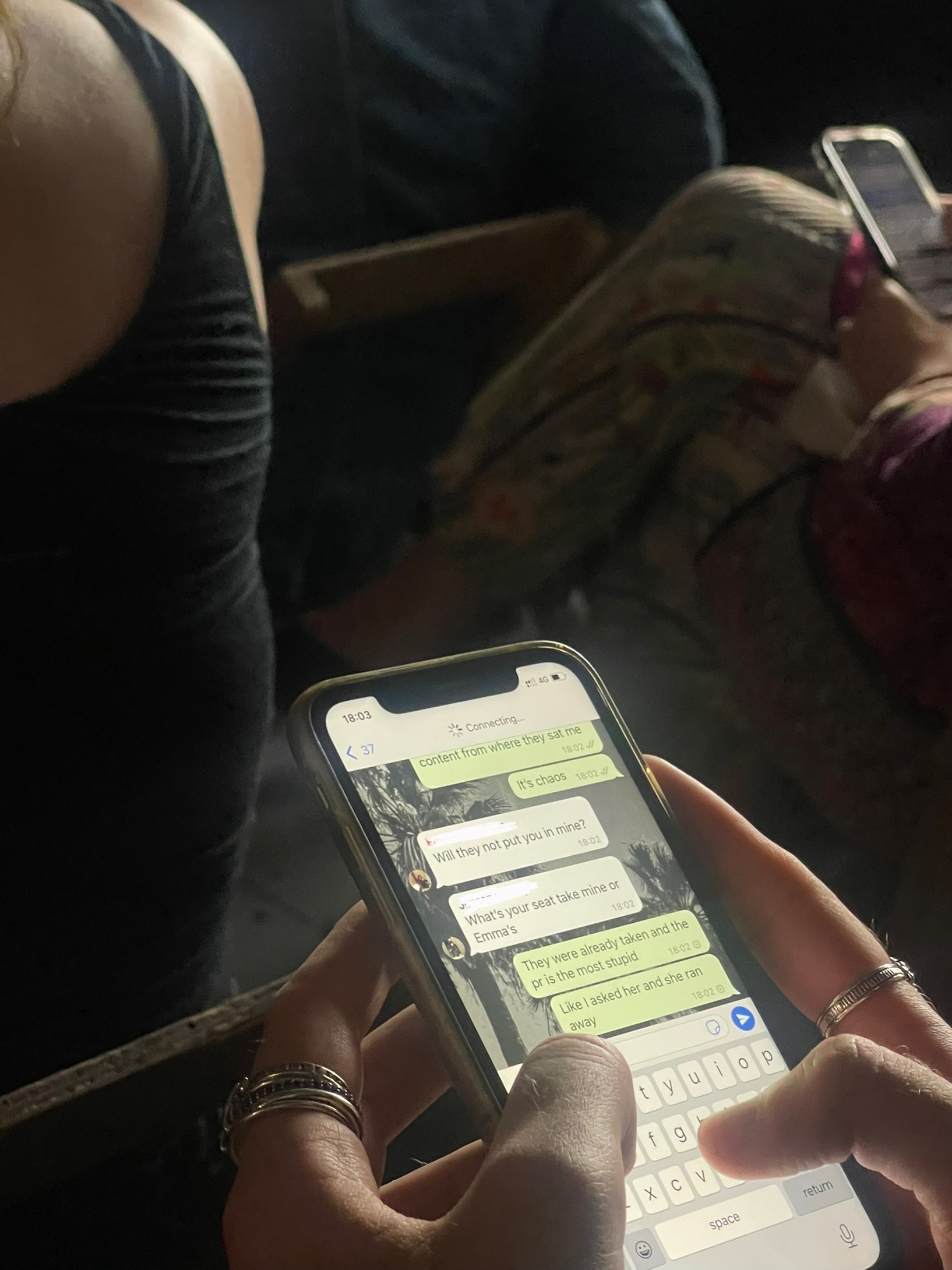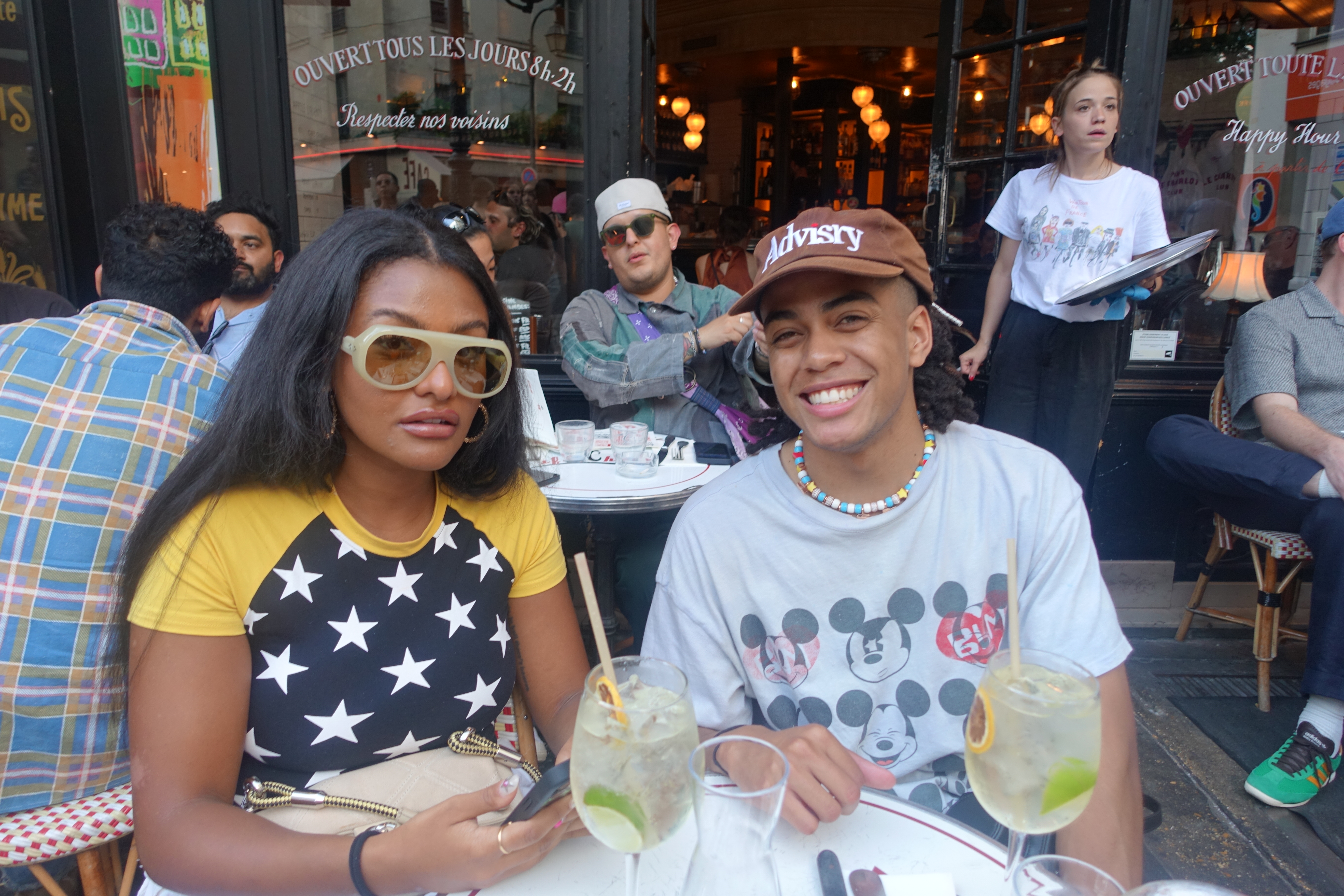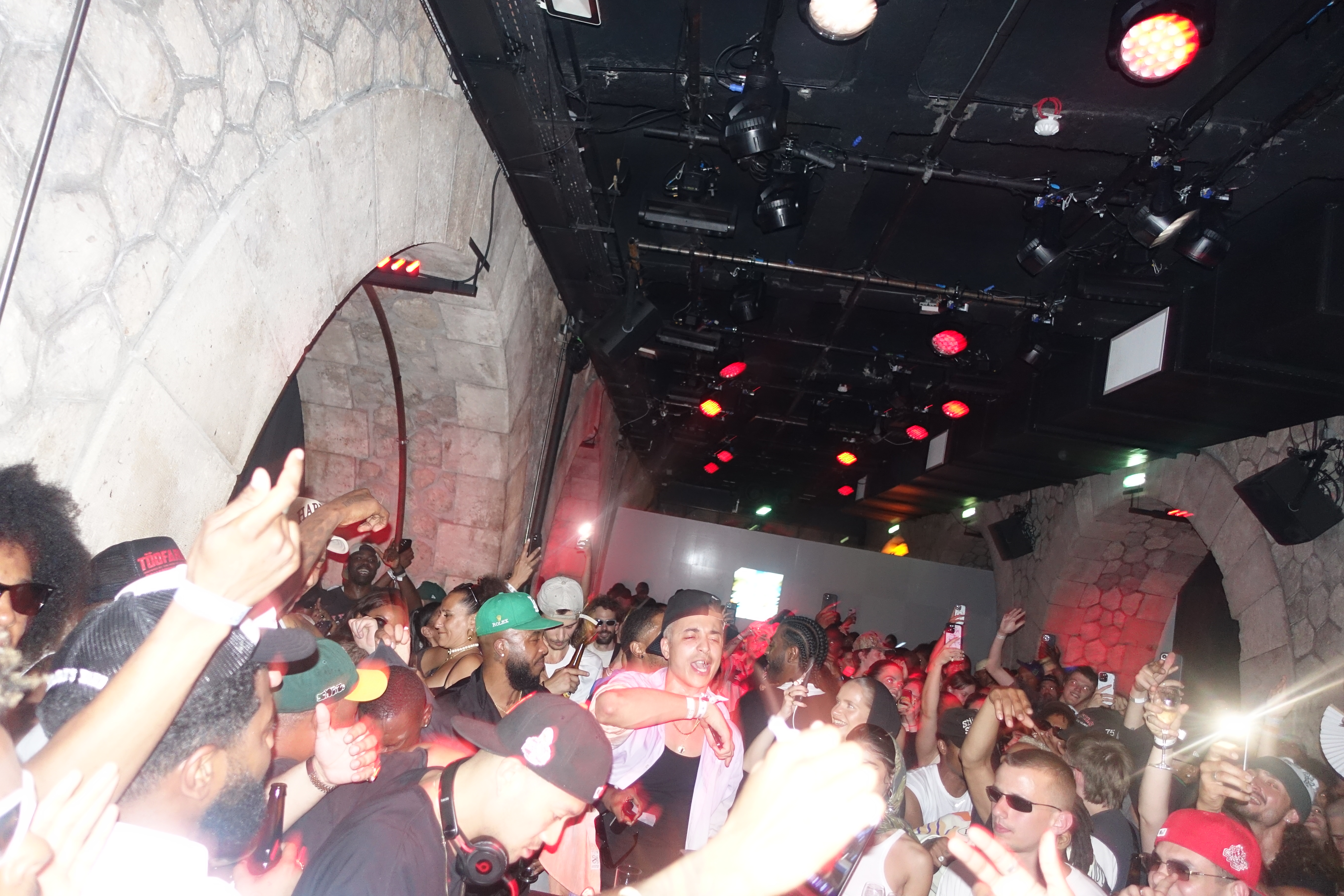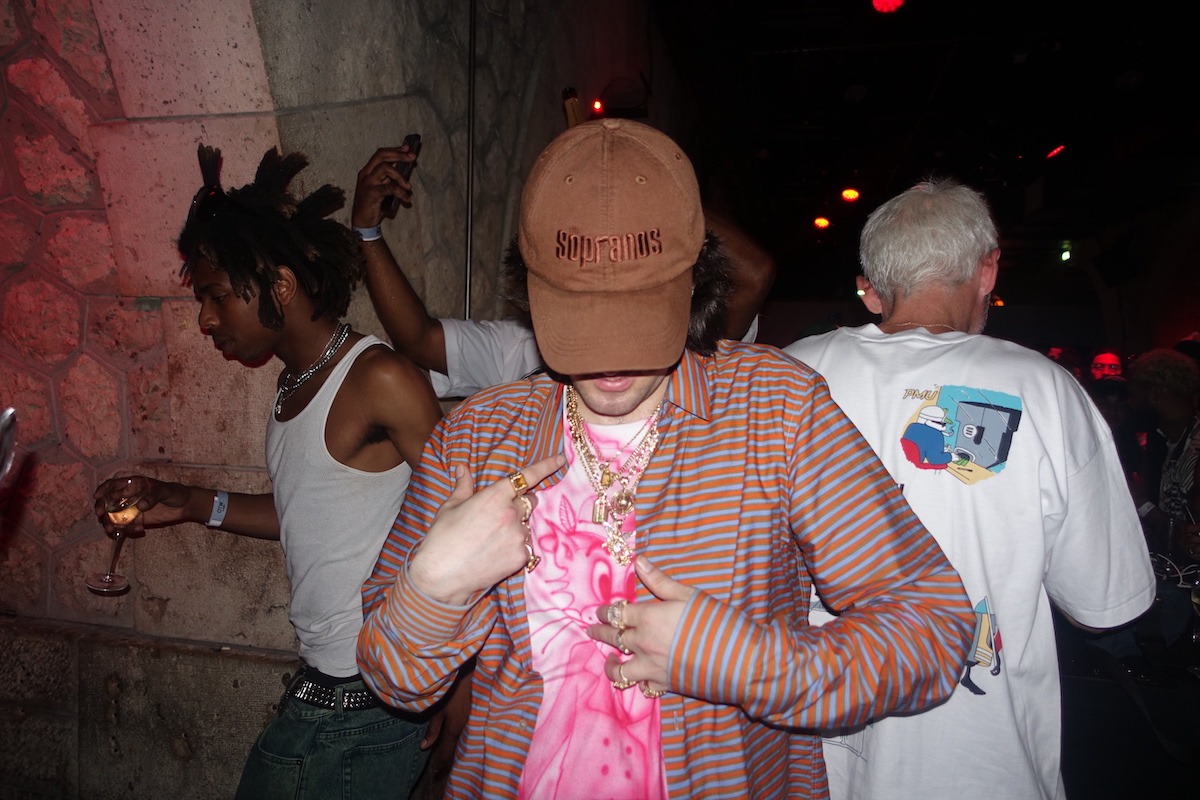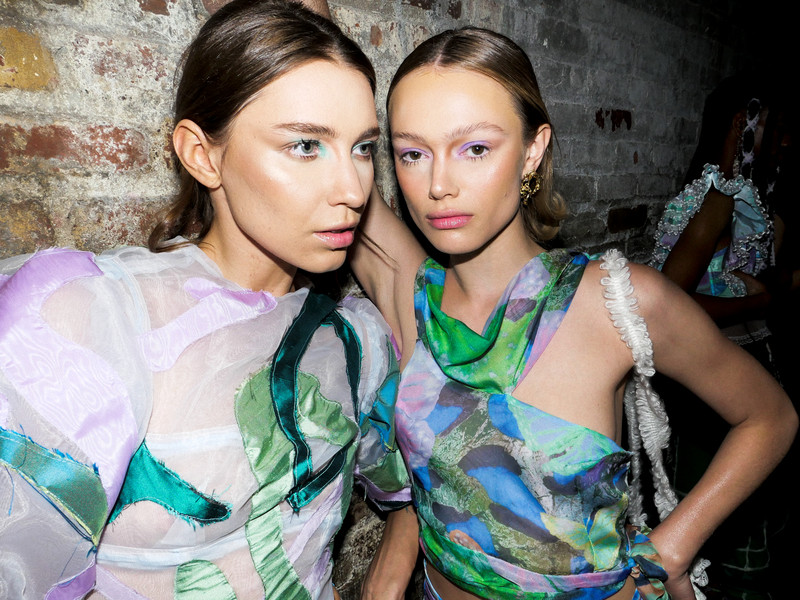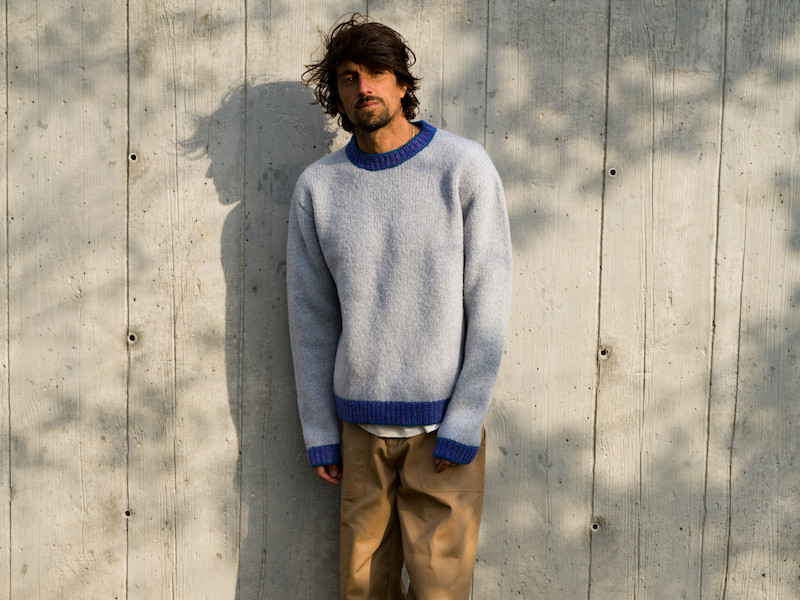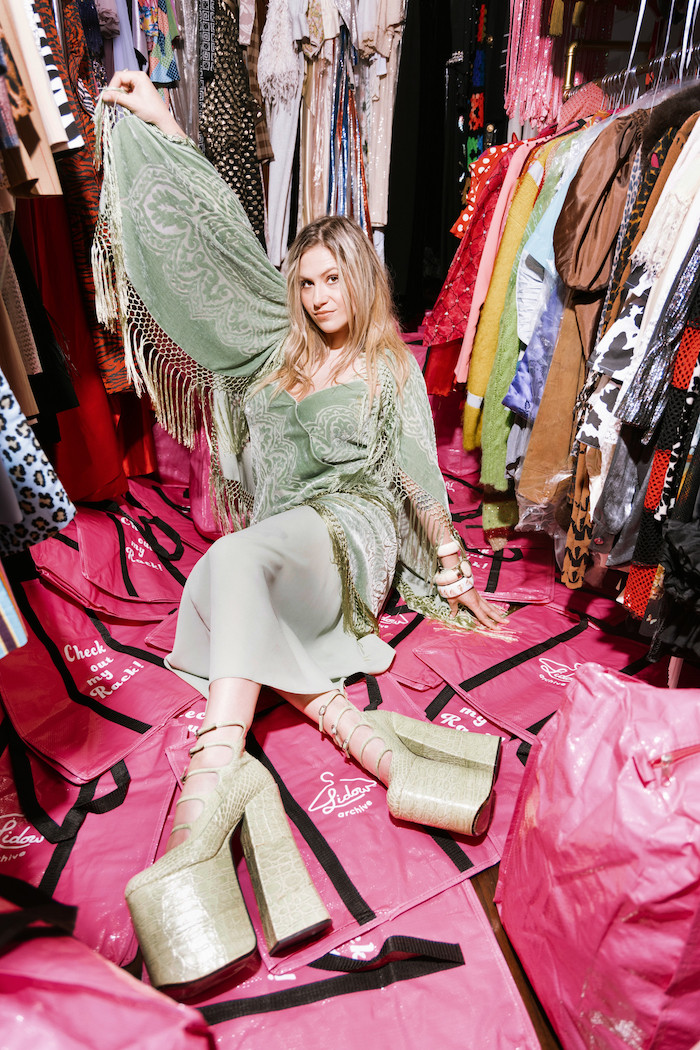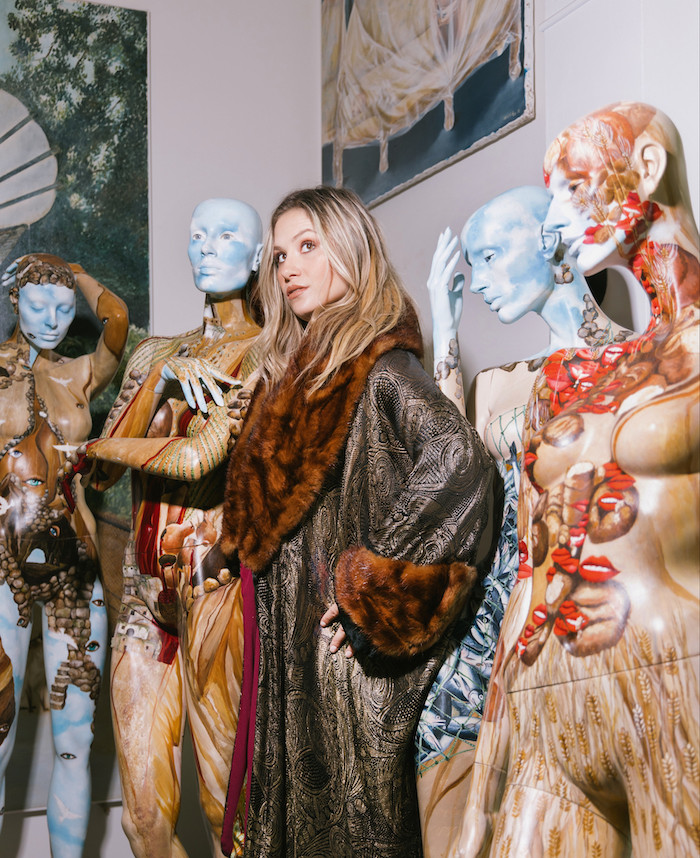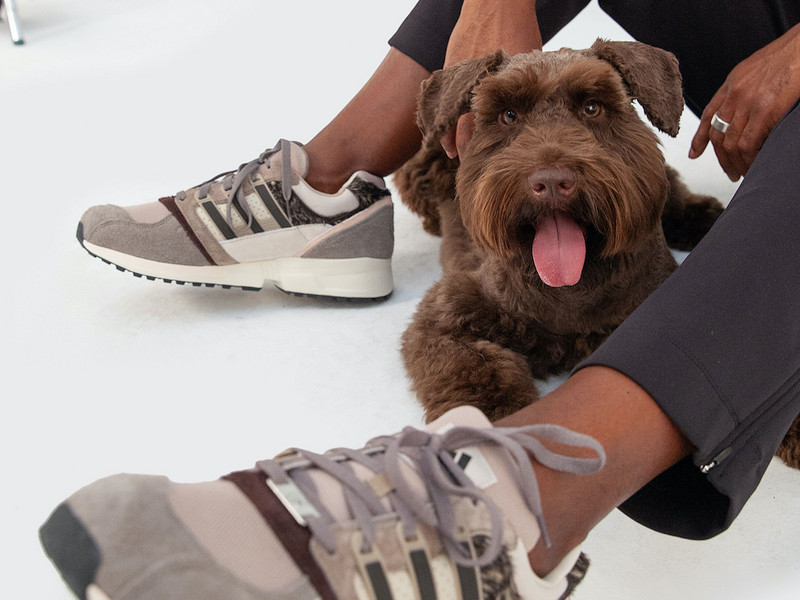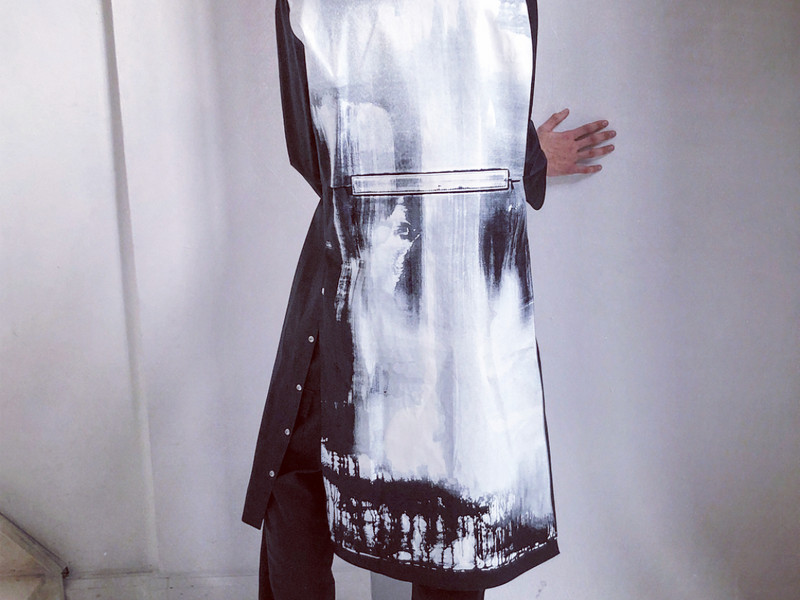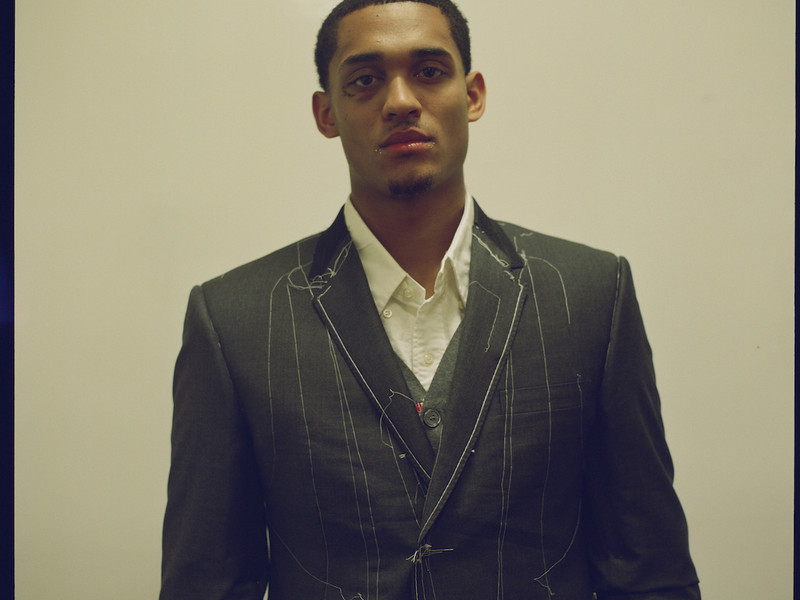I love the idea of clothing being more than just something you consume to put on your body. I think it's so interesting how you can look at certain eras and look at what people were wearing and it can tell you so much more about the political climate of the time, the economic occurrences — there are just so many different things that you can derive from that. Even from a young age, it seems you were really confident in expressing yourself. How does your identity as a queer woman, but also just a confident and self-expressive individual, manifest in your work and your process?
It's always been very clear to me that I've been different. Especially growing up in a little beach town — I was very much different than the people wearing sandals and Abercrombie. I was the odd one out and I never really understood the concept of wanting to fit in. I really truly didn't understand why people would want that. And now, that's something that I look back on as being a huge privilege of my personality and also the way that I was raised. I think that that's also been really intertwined with being a lesbian and being confident in who I am and the fact that I am different. I do identify with more of a counterculture. I think that it's always been very important to me to express myself the way that I want to. And because my art form is through clothes, it's something that is the first thing you notice about me. So I think it's hard for me to hide who I am sometimes and that can be a bit vulnerable. Having the confidence to wear what you want to wear is really indicative of a larger notion of feeling comfortable with who you are and that has really helped me.
I think fashion is a really cool connection point for so many people from different walks of life or different backgrounds. In what ways did being able to express yourself through clothing, even from a young age, help you come out of your shell and feel more confident in yourself? Especially in a place, as you referenced, where maybe there were a lot of people who you didn't feel like you could connect to as easily?
I think when you're a person who is visually different, people can't really ignore it. But I don't think it has to create a boundary — I think it can actually create more of an opening. Growing up, it was something that I had to kind of figure out what it meant. I remember in high school, there were all these water polo kids that were making fun of the way that I dressed, and I didn't care. I was kind of confused as to why they were making fun of me because it just was like, 'This is what I want to be doing and I'm not making fun of you for your choices.' Why are you making fun of me? They eventually stopped trying to make me feel bad about it and that was such a big lesson for me because since then I've realized how powerful it is to just not engage with negativity. And instead, create this extreme positivity and embrace your differences.
I admire that that was something you taught yourself even at a younger age. How would you describe your process when you are curating certain pieces; what speaks to you?
I feel like there's something about craftsmanship that is impossible to ignore. And I think with vintage clothing you get that more frequently just because people put more care into what they were making because they were consuming less. I think that it's sad that that's something that's kind of been lost with fast fashion and people only wanting to wear things once. There's more of a story behind vintage clothing. Something that I feel very lucky to do, by having a rental archive, is that I can have these pieces that can then go on and live all these other lives. My taste and my interests change constantly. And I think it is a bit of a battle sometimes to keep myself focused and aligned with my own taste instead of getting caught up in maybe what people are looking for at the moment.
I think there totally doesn't always have to be an equation or a certain method that you follow to find your pieces. What is one piece that was something you couldn't believe you got your hands on?
One of the pieces I'm wearing in these photos — it’s a 1920s Jeanne Lanvin coat. I didn't track that down; that actually came in one of 36 boxes of my grandma's clothing that I just had shipped to my house in New York before I moved back to LA. I had no idea what was gonna be in there but it was perfectly preserved, in amazing condition. I sat there staring at this coat for hours because this is something that could be in a museum. It's so crazy and I still to this day cannot believe that I have it. It's so special to see the craftsmanship. There are all these little details inside of it that no one on the outside would see. It's only for the person that's putting it on. And that's also another thing that you don't get with modern clothes, you don't have these little secrets. It's just really cool to feel like I have that part of history.
It's the coolest part about when people come to you to rent your stuff, then they become a part of that story. You've found a lot of magic in what you do. So I think in a lot of ways this is like your own fantasy land. If you could create your own planet, what would Haile's planet look like? What would it be like, what would people be wearing?
I love this question. So I feel like this is actually my real-life goal, just to create a version of my own planet. Or a Lidow universe. The house that I have the archive in right now is Lidow Land. And I hope to expand to other planets as well. I actually do want to create this experience that I think I already have on a small scale; it’s not just a warehouse full of clothes but a 1930s Spanish-style home with each room standing in as its own little world in a larger world. It's all very eccentric and thematic. Every room is a different bright color with super unique vintage furniture and I have maybe 80 or 90 mannequins. But then others are wearing Lidow Archive and I style them out every week and I put them in crazy wigs. It becomes its own world that you walk into and hopefully, you feel transported from the reality that you leave behind when you step in the door. That's something that I truly hope to continue creating by not just offering clothes for rent, but by also creating these spaces that eventually people can use as film locations or for prop rentals. And also that I can hopefully start doing this for other brands as well, as a creative director.
How do you hope that Lidow Archive changes people's perceptions of the way that they consume certain pieces of clothing and how else do you hope to evolve and grow over time?
People are definitely starting to see that there are more options than just buying from fast fashion. But I think, with that, also comes this idea of resale and that's great. That's very sustainable too. But I think that also feeds a little bit into the whole concept of things being disposable, in a sense. There's a point that's being missed in this kind of way of viewing clothes as just wearing them once and then moving on because it takes away the art. There's an art in turning one piece into all these different moments. And then maybe you rent everything else from me, you know? Impact-wise in the fashion industry, something that I was really thinking about when I first started my business was my origins. I worked in many different aspects of the fashion industry — magazines, styling, I worked in fashion PR as well — which all taught me a lot about running a business. But I think that there are a lot of pockets of the fashion industry that are really toxic and that promote feeling less than. And that's never something that I wanted to be a part of. Being able to create my own little space in this crazy world where it is incredibly inclusive and understanding different people's perspectives is the coolest thing ever. We're doing something that's an art, we're doing something that is beautiful, and it's also not life-threatening. So why are we taking it so seriously?
